 |

|
|
 |
2010 JULY/DECEMBER |
|
|
 |
 |
| A Yappy & Pawsperros 2011
from
all of us at RODIN
S. COANE, ESQ. |
||||||
|
Spike The Good Samaritan and several other concerned citizens reported the horrific abuse to ASPCA Humane Law Enforcement, who responded by racing to the home that Aguilar shares with her husband. At first, Aguilar denied abusing the puppy, but confessed to the crime after ASPCA investigators showed her the video evidence. Aguilar was arrested for aggravated animal cruelty. Spike
was rushed to the ASPCA,
where Anti-Cruelty Veterinarian Dr. Rhonda Windham, MVB,
treated him. “Spike had multiple injuries consistent with blunt
force trauma,” she says. “He also had a number of old injuries,
including a left femoral head fracture, a broken right elbow, three
broken teeth and ear injuries. He will have progressive arthritis in
his left hip and his right front elbow for the rest of his life.”
Windham says that according to Spike’s medical records, another
veterinarian had treated him at least a dozen times in the previous
seven months, before he was rescued by the ASPCA.
The most recent attack captured on the cell phone camera had left Spike
nearly blind in his right eye. "There are so many other pets in shelters in dire need of homes," Pentangelo says. "People wanting to help should consider adoption." King Barney Mazel tov, Barney! Mufasa To
read more heartwarming stories of furry fate, please visit our
Dog
faithfully awaits master Click √ on image to view video Submitted
by EDITA NAZARAITE |
|
May your romp be long and healthy, and may a holiday feast be put in your bowl.
In the face of this one, it's hard to imagine there's anything he could do to redeem himself. Photo,
top left: Harry Lynch/Raleigh News & Observer For
more of Rodin's "Vick-tory Memorial Works,"
Photo:
ANGEL CHEVRESTT
Photo by Joseph Ruzich
Edmonton Humane Society
Pictured: Sully, 5-year-old Australian Shepherd
Ap Photos/Markus Schreiber
Photo: Chuck Berman, Chicago Tribune
If you want to help Steven and Mimi stay together, please Original Story Good
Samaritans Save Disabled Veteran's Dog from Death
Click √ on cover to order from Amazon |
“By
banning crush videos, our federal government is potentially helping
to protect the community from other serious crimes and sending a clear
message to individuals seeking to profit from the suffering of helpless
animals. This law protects both animals and free speech by focusing
specifically on crush videos, which clearly have no place in our society.”
Photos, top to bottom - Rodin, Frida, Sophie: R.Coane/From-The-DOGHOUSE.com
AP-Petside.com
poll: Dogs are Santa's favorites And
while fewer than half of those
who attend religious services weekly or more
often say they plan to buy their
pets a gift, 60 percent of those who
never attend services do.
Deputy
Director of Polling Jennifer Agiesta contributed to this report.
THESE ARE OUR FAVOURITES. THERE ARE SO MANY OTHERS TO PICK FROM. AND PLEASE REMEMBER |
Best in Show
CH
Propwash Reckon (Australian Shepherd) Best Bred by Exhibitor in Show
GCH
CH Kimro's Soldier Boy (Miniature Pinscher)
CH
Alex De Akido San (Doberman Pinscher)
Katie
Mazurowski Agility
& Obedience Winners
NOC
OTCH High Times Ris'n Above The Tide UDX7 OM9 RE
Photo: Kevin Nelson. (CBC)
The discovery of the first body came about 2:45 p.m. on Saturday, when a canine section officer, John Mallia, discovered what the police described as skeletal remains. The area, populated by surfers in summer, when the bushes are lush with vegetation, is more barren now with leaves blown off in winter.
Officer
Mallia was led to the spot, north of Ocean Parkway, between Cedar
Beach and Gilgo Beach, by his dog, Blue,
the police said. That area had been chosen for the training exercise
because of the disappearance in May of Shannon Gilbert, 24, a prostitute
from Jersey City, the police said. Photo: Robert Stolarik for The New York Times
On Saturday morning, December 18, an expert is being called in to talk to owners about how to train their dogs – and how to handle a dog fight.
PHOTO BY CHRISTIAN JOHNSTON
For dates and locations, visit www.aspca.org √ Cartoon by Randy Glasbergen / www.glasbergen.com
A memorial
service for the 3-year-old German Shepherd is scheduled for Thursday
at a Gloucester Township park.
Ap Photo: German shepherd police dog wears bulletproof vest
When
she used her feet to try to prevent them from closing the patrol car
door to secure her, she says, the beating began. Photo top left: Keivom/News
PITTSBURGH December 6, 2010 A US Airways flight headed to Phoenix made an emergency landing in Pittsburgh after a dog on board bit a passenger  and
a flight attendant. and
a flight attendant.US Airways spokesman Todd Lehmacher says the flight left Newark, N.J., on Monday  morning.
Lehmacher says a passenger carrying a dog let the animal out of its
carrier and it bit the two. morning.
Lehmacher says a passenger carrying a dog let the animal out of its
carrier and it bit the two.The severity of the bites was not known. Lehmacher says the pilot decided to land in Pittsburgh to make sure everyone was OK. Lehmacher says the airline hoped to get the passengers to Phoenix as soon as possible. Lehmacher says US Airways allows passengers to carry certain pets if they are secured in approved carriers and kept under their seats. Photo: Mandy's Carrier - Splash News/NBC • • •
Photo:
Florence
Johnson
- Splash
News/NBC
Tintin historians
(and there are many) have posited various sources for Hergé’s
hero, Palle Huld was born in 1912. He made his stage debut in 1934 at the Royal Danish Theater, with which he remained associated for many years. He also appeared regularly in Danish films and on television before his retirement a decade ago. Mr. Huld is survived, at the very least, by his pen-and-paper incarnation, eternally inquisitive and eternally youthful. Photo
of Palle Huld, in 1928, as a teenager about to see the world
Pet Pulse Illustration by Tim Mattson
Photo: Pace for News
|
|
How you can
help: Photos by Clay Myers & Barb Davis
|
|
Suspects
identified in death of police K-9 Gloucester Township Police announced on facebook that a memorial fund has been set up. |
UPDATE Hero
Dog Memorialized With Candlelight Vigil
The
vigil is a community-wide effort to recognize the heroic actions of
Target and other four-legged friends who have died.
The
vigil will be 6:30-7 p.m. Dec. 3
Pinal
County Animal Care & Control
Sergeant
Young said he might spread the dog’s ashes, which were provided
by the animal shelter, at a memorial service, perhaps at the park where
Target used to frolic off leash. Photo of Rufus and Target: Johnny Crawford/Atlanta Journal & Constitution, via AP ORIGINAL STORY
In Memoriam
TARGET NO
KILL
It's
not that no-kill is a better way; it's that stopping the killing is
the only way. And the sooner we take killing off the table as a means to relating to people whom we don't like, the sooner we'll bring an end to war as a way of bringing about peace.
Click
√
below for infotmation
"What happened to the combat medal Target was given for her bravery, who took it?" When Sgt Terry Young was given Target's collar by the Penal County Shelter the medal that was attached was missing.
Guardians
of Rescue is a non-profit organization dedicated to improving
conditions in animal shelters throughout the country. Some of their
focus areas are: |
||||||||||
"Explosive-detecting
dogs are held to a higher standard of performance than other types of
dogs, like narcotics-detecting dogs," Price says. "If a dog
misses drugs getting on a flight, that's not a huge problem. If a dog
misses some explosives, that's a major issue." Photo, top left: Alex Brandon/AP RELATED NYC’s
Newest Anti-Terror Deterrent:
The holiday pet baskets will be assembled from noon to 1 p.m. Thursday, Dec. 9, at the veterinary hospital and distributed Saturday, Dec. 11, at Mercer Clinic. "We
really depend on the generous monetary donations of the community to
help purchase pet toys, which are such a source of joy for the animals
and their owners," said Eileen Samitz, a clinical microbiologist
at the veterinary teaching hospital. "UC
Regents -- Mercer Holiday Pet Baskets"
|
Photo: IMOGEN BROWN
Here
is a sample of what they came up with.
To adopt Chase, visit the HSPJ at 202 Route 209, Port Jervis, or call 856-3677. "Many senior pets end up in shelters because their owners are sick or have passed away," said Durrwachter. "These are the ones I really sympathize with. They feel the loss of their owner and know they have lost their home as well. They are usually housebroken, know how to behave in a home and have been loved their whole lives. The older pets who haven't had such a great life and end up in shelters really appreciate the family who takes them into their life. These pets give so much joy and don't ask for much in return." Rugby To adopt Rugby, visit the shelter at 20 Wiedy Road, Kingston or call 331-5377. "Senior pets have endless love to give and always want to please you," said Tiano. "Most of them still have a good deal of energy left and still love to run and play with their animal and human friends. Then they also have their laid-back side, where they just want to cuddle next to someone and get some tummy rubs. They all deserve a great home where someone will care for them unconditionally."
Myers will present the food to Kiger on Monday, Dec. 6. Residents turning
out for Logan’s annual Santa Parade on Dec. 4 will see an example
of the kind of quality shelter dog that will be helped by such a donation
or that is available for adoption; Myers appears in the parade with
her beloved Dolly and her mastiff-St. Bernard mix, Bruiser.
If you've seen "Lena" in the park, call park officials at 212-387-7676. |
|
We
Click √ on image at right for video
Video stills: The New York Times
Doggy
details: This Italian breed is a loyal, powerful watchdog.
They are very intelligent, which makes them easy to train; however,
they require a lot of exercise.
Doggy details: The Redbone Coonhound descends from foxhounds imported from Ireland before the Civil War and has been a respected breed for over 100 years. This sporting breed with a flashy red coat has an even temper and a natural treeing instinct. The
Redbone? Coach Rex Ryan of the Jets.
Timothy Wells, 58, who was later diagnosed with a narcissistic personality disorder, said in a rambling address in court that his professional and personal troubles escalated to a point where he thought his wife, Christine Sevilla, a noted nature photographer, would leave him. "Over the years, I was shrinking -- I couldn't progress, I couldn't maintain, I couldn't keep up," said Wells, who pleaded guilty in October to second-degree murder. "I felt I was failing her. I feared that, if she knew, she would leave me." After killing her in their home in suburban Rochester Nov. 30, 2009, Wells said, he drove around all day with her body in the trunk. He wound up a few miles out of town after midnight in an isolated section of Mendon Ponds Park known as the Devil's Bathtub, "her favorite place." Wells told
investigators he was looking for the ideal spot to kill himself and
the couple's beloved dog, a Judge Joan Kohout said evidence that Wells was suffering from an extreme emotional disorder when he killed his wife was a factor in her decision to accept a plea, along with "his willingness to accept responsibility without excuses for what happened." BACKGROUND
Timothy
Wells fretted more over dog than dead wife
Photo: DAN BRINZAC |
|
To
adopt a pet, call BARCS at 410-396-4695
Owner Mark Robinson of HandicappedPets.com (right) in Nashua, N.H., drove five and a half hours to donate a doggy wheelchair. The two-wheeled harness, that sells for about $450, provides support for Vaik’s hind legs. |
|
After she lost the lower-court decision, she said, "the board laughed in my face." Charlie won the
appeal on a TKO -- after the case turned on a technicality. The condo's
bylaws say unit owners, their pets and guests shall not create a nuisance,
Mauro said. By including the word "pets," he said, the rules
implied that dogs that are not a nuisance are OK. Photo: JAMES MESSERSCHMIDT
this
too is animal abuse.
CAVEAT EMPTOR: NASTY AS CAN BE BOARD not worth spitting at!!! May the Dogs be with you, Donna and Charlie! Maybe I'll contact attorney Mauro.... Michael
A. Mauro, Attorney at Law
Click
√ below for more information
Click
√
on any image for video |
|
Photo
Credits
Photos:
From-The-DOGHOUSE.com
Photo: LEO SOREL
Cute,
diligent and armed with highly sophisticated detection tools —
their noses — these dogs are fast becoming the American equivalent
of the St. Bernard rescuing the snowbound in the Alps. Commercials vaunt
bedbug-sniffing dogs’ prowess and purport up to 98 percent accuracy.
In New York, a bedbug-sniffing beagle named Roscoe has become so well
known — he has a Facebook page and now an iPhone app — that
fellow beagles often are mistaken for him on the street. Some
also believed their co-op boards overreacted by paying to treat their
apartments. “You’re under pressure to go the extra
step even if you don’t think it’s warranted,” said
a lawyer who lives in the same building as the designer, who also spoke
on condition of anonymity. “It’s you against the dog.” Photo: Ruby Washington/The New York Times
One
of their students is a 16-year-old boy who has verbal and aggression
problems, said Courtney Peggs (right with Dutchess),
an occupational therapist assistant who works with them. Before his
therapy with Dutchess, the boy relied on caregivers or teachers to lead
his social interaction, a condition called prompt-dependent. Now, she
said, the boy is becoming more functionally independent. Click √ below for more information Photos: Suzanne DeChillo/The New York Times
Click
√ below for canineassistants.org
Click
√
below for glenwildanimalrescue.org Photo:MICHELE HASKELL/Times Herald-Record |
|
Click √ on logo for video
Photo: CBS 2
Click
√
on image Photos:
Megan Craig, Tribune
Photo: Corey Kilgannon/The New York Times
GETTY IMAGES |
|
Still, above left: CBS 2
Click √ below for Petfinder Photo courtesy of Eva Hanks
The retired van driver, who is set to submit an application to the
Guinness World Records, said: "I'm proud of her now. If it turns
out she's the oldest dog in the world then I'll be even more proud of
her. |
|
|
PUPPY
MILL MEASURE
YOU DO NOT HAVE THE RIGHT TO MISTREAT ANIMALS, NOT CARE FOR THEM AND KEEP THEM IN FILTHY INHUMANE CONDITIONS.
|
|
“Other developed countries have animal protection laws,” he said in a telephone interview. “With China developing so quickly, and more and more people keeping pets, more people should know how to treat animals properly.”
Click √ on cover to order from Amazon.com |
|
“Other developed countries have animal protection laws,” he said in a telephone interview. “With China developing so quickly, and more and more people keeping pets, more people should know how to treat animals properly.”
Click √ on cover to order from Amazon.com |
|
“I
am an American; I have a right to raise dogs,” said
Joe Overlease, president of the Professional Kennel Club of
Photo: C & J Cockers courtesy of The Humane Society of the United States.
Illustration:
Chris Gash
Ed Sayers Photo: Sylvain Gaboury/PR Photos
Inspired
by the 2000 Cows On Parade exhibit in New York City,
Art Dogs & Cats of NY is a unique exhibit that
Among
the works are Identity Crisis by Elliott DeCesare, The Gilded Dog
by Garry Grant, Mixed Media Meow by Jane Sangerman, and The
Trojan Cat by Vicki Khuzami.
PHOTOS: HELAYNE SEIDMAN
Staten
Island Man Arrested For Alleged Animal Abuse
If
you would like more information on Dasty’s treatment and stem
cell therapy, Photo Courtesy of Chicago Police Department |
|
To volunteer, provide a foster home or make a donation, call (312) 409-4790 or visit safehumanechicago.org. Photo: Jean Lachat/Sun-Times RELATED:
Dog hotel makes room for toughest customers
Photo: Egan-Chin/News
Hard cases like
Ralphie are a specialty of Found, which employs a broad range of therapies
to deal with physical and behavioral problems of the dogs it rescues,
including a "gym" outfitted with treadmills and a lap pool,
used to run off energy, develop physical coordination and confidence,
and build trust with staff.
|
|||||||||||||
PUMPKIN
CARVINGS
 |
|
Submitted by Sandi Milone |
|
To find out more about the wonderful work of Rescue Ink, visit www.rescueink.org Click √ on book cover to order from Amazon.com Photo Courtesy of Rescue Ink
Persons wanting to know more about service dogs can e-mail Husted at melinhusted@yahoo.com, while information about the Americans With Disabilities Act is available by calling the U.S. Department of Justice’s Civil Rights Division at (800) 514-0301 or going online to www.ada.gov.
Photo: CBS 2
Pearl, a 4-year-old Labrador retriever, was abandoned at a shelter, then trained and sent to Haiti with a rescue team from the Los Angeles County Fire Department. The county’s seven rescue teams helped bring 12 people to safety. Cat honors went to Henry, an injured kitten found near San Diego in 2004. After his leg was amputated, he inspired the children’s books that have generated more than $50,000 for animal causes.
Illustration: Chris Gash
Photo: Kensal
Photo: FOX News Network
Photo: MICHAEL SOFRONSKI
Photo: Paul Murnane/WCBS 880
For more helpful tips and to watch an informational video about purchasing pet drugs online, please visit the FDA’s consumer health information page. |
|
Photo
credits:
TRANSLATION
ß
The dogs’ extraordinary paths — saved first from Vick’s
fight ring, then euthanasia, and placed with new
When
Janet Elder was under going a biopsy, she kept her emotions in check
and her mind sharp. “I wasn’t Click √ on cover above to order from Amazon.com
Photo: WILLIAM FARRINGTON
|
“Though
you faltered Colonel
Smith consulted archivists in London for the five pony names for the
new map. Besides Jimmy Pigg as Jipig, Snippets becomes Snipt, Bones
Boenz, Jehu Jehoo and Nobby Nobey. PHOTO
CREDITS EDITORIAL
Photo courtesy of NOAA |
|
PHOTO
CREDITS
ARTICLE
PHOTOS
Stills: CBS2 News
Preparing
your Dog for Air Travel The
Boarding Option Don’t entrust your puppy to anyone you don’t believe to be highly competent and knowledgeable. If you have to pay more for better care, the money will be well spent and will give you greater peace of mind. |
||||
|
— Terry Clary, San Antonio Terry, love this hint! How darling, and recycling, too! Who wouldn't like his or her own quilt? Woof, woof! — Heloise
I read the hint on the large-dog water bowls. I have two grand dogs, a boxer who is a therapy dog and a boxer mix. Both were adopted from the Nebraska Humane Society. I use the ceramic insert from a slow cooker as a water bowl. No way for them to carry it off, and they can't chew it up. — Carol M., Omaha, Neb. Photo: Heloise with Savvi
ORIGINAL ARTICLE
Steve
Levitas' insurance was canceled after needing too many procedures
for his Labrador. "Two shoulders and a hip before he was three,"
he wrote. Ten thousand dollars later, Steve's dog is doing just fine.
"We call him 'the lemon', but he's 10 now and still kicking like
the energizer bunny." "End
of life issues are very personal, and everyone is different in what
they feel is best for their pet, themselves, and their family,"
says Dr. Tamra Rahn of Bramer Animal Hospital in Evanston. "After
providing the information to make an informed decision, I try ultimately
to support the owner's choice."
|
|
Police Hound image(right): SCOOP & HOWL/Artgrunge
Appreciate
life, cope with grief
Condo
[sic]
Canine Crackdown On Upper West Side Stills: CBS2
Call the 'Expet'!!!
More On Dogfighting After
Michael Vick, The Battle To Stop Dogfighting PHOTOS
That and the chocolate, too! |
|
The
images were originally uploaded via a YouTube account on a site called
Liveleak. It appears to show a young girl with long blonde hair in
a red hooded top picking up newborn puppies by the scruff of the neck
and hurling them into a fast-flowing river. RELATED PETA
offers reward following sick clip of Bosnian puppy drowning |
|||||
Click √ on logo above left to report abuse. UPDATE
|
||||||
Conquering
Your Pet’s Back-to-School Blues
Photo: COURTESY
In humans, NCLs such as Batten disease mostly affect children, but there is an adult-onset form called Kufs' disease
that causes gradual death of brain neurons, resulting in vision loss,
epilepsy, loss of coordination and dementia, according to the National
Institute of Neurological Disorders and Stroke.
Photo: North Shore Animal League |
But
when you’re moving with animals, you should be prepared to make
certain choices in their best interest. If your dog has bad hips,
like Nicole’s, a residence without burdensome stairs may be
best. If your pets are active and outdoorsy, like Matt’s, they
may need places with a backyard or close to public parks. These tips
may seem like common sense, but by considering these choices at the
outset of your search, they won’t seem like concessions later.
Photo
left by underwhelmer
When
Anne Heller moved to a house in Santa Barbara, Calif., three years
ago, she discovered a small orchard New
York Times Photos RELATED
|
•
Coffee •
Ice Cream •
Chocolate •
Alcohol •
Gum •
Grapes and Raisins •
Macadamia Nuts •
Salty Food •
Onion •
Avocado Photo: Canine Companions for Independence
Photo courtesy of Scuola Italiana Cani Salvataggio.
Stock photo: Google images
This
demolition of expectations is another strength of Caldwell’s
narrative. Long after the grief and dust have settled, a single joyful
scene stays in my mind. The two women are laughing together, rolling
around on the forest floor, attempting to train their dogs —
“pack of four, we were, planting flags all over the province
of our rearranged lives” — and Caldwell looks at Knapp
and says, “You know — after all this, I don’t think
that any man could ever treat me badly again.” Photos
courtesy of Gail Caldwell: To order from Amazon.com, click √ on book cover above
Photo:
Rick George |
Photo/Everhart Family UPDATE
Alissa
led the party up the small hill, where the gravestone ruin of the
famous "Wizard of Oz" dog was buried.*
Pulling back a few oak saplings, she revealed the plaque: "Our
beloved pet and friend Toto," the grave marker read. Those wanting to help save the cemetery can send donations to the Warwick Valley Humane Society, P.O. Box 61, Warwick, NY 10990. Designate the letter as "Pet Cemetery." Photo: JEFF GOULDING/Times Herald-Record *
TERRY
/ TOTO Toto
was played by a female black Cairn Terrier whose real name was Terry.
She was two years old when she Willard Carroll wrote her 'autobiography', I, Toto.
Order I, Toto from Amazon.com, click √ on cover, above right.
Illustration: Heidi G. Parker RELATED ARTICLE: Dogs Keep Their Genes on a Short Leash
|
Take
action today to help these struggling
wolves survive:
The hunts are not based on biology. They are political hunts, the result of pressure from ranchers, who rarely lose livestock to wolves, and from hunters, who believe that only they should be allowed to kill the elk on which the wolves feed. Problem wolves that kill livestock should be destroyed. But until scientists can determine how many wolves are needed to sustain a thriving population across the Northern Rockies, the hunts must end.
|
|||||||||||||||||
After last fall’s hunting season, there were about 500 wolves in Montana and 835 in Idaho.
“Secretary Salazar’s support of the Bush administration’s proposal to remove protections for wolves was premature and clearly inconsistent with the law.
"Had the federal government prevailed in the lawsuit, real wolf
recovery would have been set back for perhaps decades. Worse, the
precedent of the federal government making listing and delisting decisions
for endangered species based upon political boundaries rather than
science would have crippled the Interior Department’s future
management of the Endangered Species Act to the detriment of many
species. The faulty effort by the administration to delist has set
back legitimate delisting by some time. |
|
|
||||||||||||||||||||||||||||
|
•
Twins, Chase & Connor, 7, live in Largo, Florida. The twins both
have a form of cerebral palsy known as spastic diplegia, which affects
the muscles of the lower body. Both boys hope their Canine Assistants
dogs will help with everyday tasks and be companions. But will Chase
realize his dream of one day walking with the support of his dog Oakley? Through a Dog’s Eyes will air on PBS Wednesday, September 8 at 8 p.m. ET/7 p.m. CT (check local listings).
Photo by David Scott
"Or better yet, adopt from your local shelter." For more information on the risks associated with buying a puppy in a pet store or online, please visit our online Puppy Mill campaign.
The
Lost Dogs can be preordered now on Amazon.com Sculpture
"#7 VICKtimizer" by Rodin S. Coane
Garry Matthews photo: AP Washcall:
Brass again nixes medal for dogs ... |
Left,
Gordon Howard/Right, as a young man with Shepherd Sparky
Over
the past few years, researchers have linked a number of canine traits—from
size to coiffure—to specific mutations in dog DNA. This new
line of research was made possible by the completion of the Dog Genome
Project in 2005 by the National Human Genome Research Institute (NHGRI)
in Bethesda, Maryland. But researchers lacked a large-scale analysis
of these traits across a wide variety of breeds. As a result, they
didn't know whether traits were governed by a large number of genetic
regions, each contributing a small effect, or by a few regions with
large effects. Photo: Ester Inbar RELATED ARTICLE: Wide Variety of Breeds Born of Few Genes |
AP Photo/Ed Andrieski: Gina with Sgt. Melinda Miller |
|
In late June, in Temecula, Calif., members of a local Tea Party group took dogs and picket signs to Friday prayers at a mosque that is seeking to build a new worship center on a vacant lot nearby. Recently,
a small group of activists became alarmed about the Muslim
construction projects have been the subject of public protests nationwide
these days (as we've
Ms. Serafin was among an estimated 20 to 30 people who turned out
to protest the mosque, Photo, top left: Mike Blake/Reuters
For more information on Puppies Behind Bars, visit puppiesbehindbars.com. Photo: ASTRID STAWIARZ
RELATED
|
|
A
countrywide rally against animal cruelty is planned for RELATED
FOLLOW UP
Photo
by JOSH D. WEISS
TomoTherapy
is now state-of-the-art treatment for people, with several hundred such
machines being used worldwide on human cancers. Photo: Richard Drew, Associated Press
Photo: Larry Wong, The Journal
Photo: PAUL MARTINKA
According
to the scientists, the "dogs preferentially attempted to retrieve
food silently only when silence was germane to obtaining food unobserved
by the human gatekeeper. Interestingly, dogs sourced from a local animal
shelter evidenced similar outcomes."
• • •
This
is NOT an “anti-pet
proposal.” ADOPT, DON'T SHOP!
Photo of Karen Loweth: CHRISTIAN JOHNSTON
• • •
Photo: STEVE BORLAND/Times Herald-Record |
||||||||||||||||||
Photos
We will alert ASPCA Advocacy Brigade subscribers when a Senate version of this bill is introduced, so please join the Brigade today (Click √ below) and don’t miss any breaking news about the progress of this and other animal-related legislation.
Again! Photos: Cheryl Gerber for The New York Times
She still plans to attend adoption fairs with prints in hand, and
is now going one step further. She has set up a website where anybody
can view and buy her pictures, or greeting cards from additional pictures
she took at the Sanctuary, with 100% of the proceeds going to Best
Friends. Now that’s determination! Photo by Gary Kalpakoff
As Kristi
Linauer, a Waco, Tex., interior decorator, put it: “Pets have
become family members. We love them like children, so people are naturally
drawn to anything that gives our pets a special place in our homes.”
For some animal lovers, that means not just buying aesthetically pleasing
pet supplies, but creating their own animal-friendly design solutions
to complement their human-centric décor. The
other two turtles — a pair of three-toed box turtles —
live in a redwood pen the couple built in the backyard. PHOTO
CREDITS
Photo: TOM BUSHEY/Times Herald-Record
"The
only time I've ever seen a bad animal is when it's been owned by a
bad owner," another resident said.
Some opponents of the law say more animals will be turned in to shelters or abandoned as a result of the ban.
Images courtesy of Donald W. Bromley Photography and Priscilla Kienzell
Stills: "The Awful Truth" © Columbia Pictures
A
vasectomy for a male Pit is also another option for owners who choose
to enroll their dog in “Operation Pit” – the less
invasive surgery won’t work to prevent health issues in a way
that neutering a male will, but it will still serve as an effective
form of birth control. It will also not alter a male’s physical
appearance, which some pet owners are wary of doing when considering
fixing their male dog, Murray explained. like all other dogs, raised properly and socialized.” For more information about Operation Pit, visit www.aspca.org. Click √ below. Operation
Pit photos: ASPCA
[There's
no word on whether or not the dog survived the ordeal (many witnesses
said it was panting and barely alive). According to Brooklyn365—who
first reported the story—New York penal law 130.20 states: "A
person who overdrives, overloads, tortures or cruelly beats or unjustifiably
injures, maims, mutilates or kills any animal, or deprives any animal
of necessary sustenance, food or drink, is guilty of a misdemeanor,
punishable by imprisonment for not more than one year, or by a fine
of not more than one thousand dollars, or by both."
Craig
Love, who is the principal investigator on the project, says a preliminary
survey found that the dogs reduced post-traumatic stress symptoms
in 82 percent of patients. Forty percent of respondents in the study
also reported they used less medication. For
more information or if you’d like to help Paws for Vets, log
on to the website at pawsforveterans.com
At the end of the auction, the audience broke out spontaneously in a rendition of the Roy Rogers theme song "Happy Trails." Stock photos: Google Images |
|||||||||||||
|
Help protect dogs from enduring unimaginable pain, terror and suffering. WSPA and KAWA are committed to continuing our crucial work to end dog meat farming in Korea, and hope you will join us in our fight. Your
support today can:
|
"I mean, this is just a dog." Graves must serve 200 hours at an animal-welfare organization and attend weekly counseling. Photo: STEVEN HIRSCH RELATED
Animal cruelty has long been recognized as a signature pathology of the most serious violent offenders. As a boy, Jeffrey Dahmer impaled the heads of cats and dogs on sticks; Theodore Bundy, implicated in the murders of some three dozen people, told of watching his grandfather torture animals; David Berkowitz, the “Son of Sam,” poisoned his mother’s parakeet. The dynamic of animal abuse in the context of domestic violence is a particularly insidious one. As a pet becomes an increasingly vital member of the family, the threat of violence to that pet becomes a strikingly powerful intimidating force for the abuser: an effective way for a petty potentate to keep the subjects of his perceived realm in his thrall. Click √ on image for full article Photo: Charlotte Dumas/Julie Saul Gallery “Dogs
are blameless, devoid of calculation,
FAMILAR?
Souza
photo by Reinaldo Marques/Terra
But while Rex was at the head of the class, little Mille was sitting
in the back of the room hoping nobody would notice her. Millie is
a sweet little girl who has captured the heart of all of us involved
with the rescue. She has struggled with all the changes, at times
being outgoing and jovial and then quickly changing to withdrawn and
timid. Photo
by Becky Tegze
Stock photo
*
Photo: Elisabetta Povoledo for The International Herald Tribune
|
Photo:
Dr. Wendy McClelland and Shelley Whalen cuddle up to Nacho
Photo:
The David R. Lee Animal Care Center by Tom Cruze/Sun-Times
SunHerald.com Further
confirmation of renal failure is the inability of the kidneys to concentrate
urine, which is evaluated by the specific gravity. The inability to
concentrate urine results in too much water being expelled leading
to dehydration, further affecting the well-being. Photo:
Dr. Connie Clemons-Chevis
In
addition to homes with children, house calls are also advantageous
for homes with multiple pets. In either case, making calls to the
home also allows Dr. Califf to make a more thorough assessment.
"I've always wanted to be a story in the New York Post."
Mathias refused comment.
"I even set him up with the saleswoman at the upholsterer I used to re-cover my sofa. I figured I might as well cast a wide net to increase his odds of finding the right woman since he's not hitting the jackpot on his own." COMMENT BY NY POST READER, TaxPayingDupe
For
full article, click √
on Geri and Colby pic
NYPost photo, left, by JONATHAN BASKIN
"Our
Freekibble visitors are always asking how they can do more,"
says Kelly Ausland, Mimi's dad. "This is the perfect opportunity
to further support shelter animals and be part of something that will
have an impact for years to come." Below is a copy of the already-written email letter sent with a few clicks of the keyboard
Photo by EILON PAZ
Photo by BWW Photo Special July 10, 2010
"He
was completely starved." Anderegg says, "He was, by my best
guess, 24 to 48 hours from being dead." Their ultimate goal is to find "Puppy" that forever home that is infinitely removed from the darkness of that lonely canyon.
To that end, "Puppy" has his own Facebook
page, and the Andereggs are accepting donations for the dog's remaining
veterinary bills, while they vet potential suitors. But don't give
up on the prospect of that ribbon-wrapped happy ending, as Michelle
admits that the bond between herself and the dog she has since nicknamed
"Shadow" grows each day. "We're so attached,"
she says, laughing. "I walk, and I stop, and he bumps into me.
He comes everywhere with me."
Photos
by Zak Anderegg
For more information, call 626-792-7151.
Photos by Charlene Millet and Kathleen Jackson
Coyote
photo: Daniel Avila/New York City Parks Department *
Wacko, careless, speeding, people drivers in their turf do! “[Animals]
are blameless, devoid of calculation, neither blessed nor cursed with
human motives.
The next trip north leaves New York City on Wednesday. For more information and a trip schedule, visit northwardhound.com. Click √ below.
For
more information about adopting an animal from Pets Alive, call 386-9738
or go to Photo:
TOM BUSHEY/Times Herald-Record
Photo: Suzanne DeChillo/The New York Times
ASPCA:
BACKGROUND
|
|
ROBERT
COANE 2010 © All rights reserved |








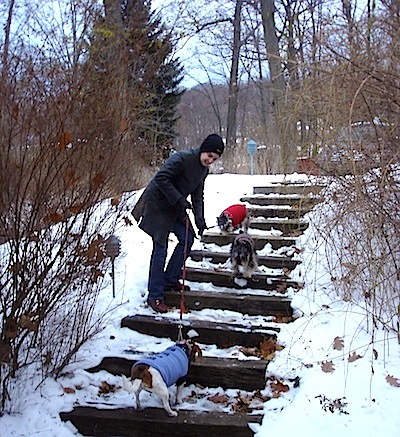
 family
family is
the Season. Celebrate
Reason!
is
the Season. Celebrate
Reason! 











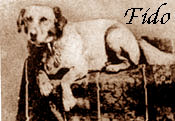


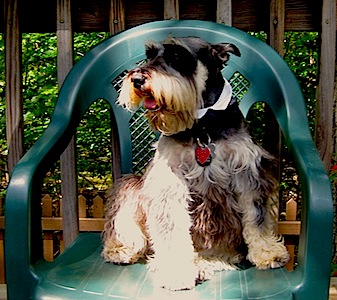


 Last
week, the ASPCA
recapped highlights from their work throughout 2010 on behalf of companion
and farm animals. With the deep involvement of concerned individuals
who wrote legislators and raised awareness, this year has seen significant
progress in the rights of our four-legged friends.
Last
week, the ASPCA
recapped highlights from their work throughout 2010 on behalf of companion
and farm animals. With the deep involvement of concerned individuals
who wrote legislators and raised awareness, this year has seen significant
progress in the rights of our four-legged friends. One
of the year’s highlights is the recent passing of the Animal
Crush Video Prohibition Act. On December 9, President Obama
signed the Act into law, prohibiting the creation and distribution
of “crush videos” and establishing a penalty of up to seven
years in prison. The passage of this legislation comes almost
a year after the original Depictions of Animal Cruelty Act was struck
down by the United States Supreme Court.
One
of the year’s highlights is the recent passing of the Animal
Crush Video Prohibition Act. On December 9, President Obama
signed the Act into law, prohibiting the creation and distribution
of “crush videos” and establishing a penalty of up to seven
years in prison. The passage of this legislation comes almost
a year after the original Depictions of Animal Cruelty Act was struck
down by the United States Supreme Court.

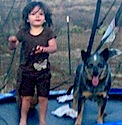
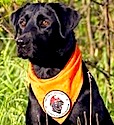
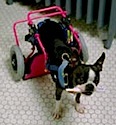


 puppy
mill in Camden County, MO. Most of the dogs were transferred
to the Humane Society of Southwest Missouri in
Springfield and HSMO in St. Louis, but a few made their way
to the ASPCA
in Manhattan. One such pup—a darling Welsh Corgi
named PEANUT—was adopted by one of our own: Julia
Nelson, ASPCA
Senior Vice President and Chief Financial Officer.
puppy
mill in Camden County, MO. Most of the dogs were transferred
to the Humane Society of Southwest Missouri in
Springfield and HSMO in St. Louis, but a few made their way
to the ASPCA
in Manhattan. One such pup—a darling Welsh Corgi
named PEANUT—was adopted by one of our own: Julia
Nelson, ASPCA
Senior Vice President and Chief Financial Officer.
 evening
news, was footage of an enraged Queens woman, Maria Aguilar
(right), brutally beating SPIKE, her 11-month-old English
Bulldog puppy, on her porch. The puppy was howling in pain
and fear. Sick of Aguilar’s constant abuse of the puppy, a Good
Samaritan neighbor yelled at Aguilar to stop. When she didn’t,
he made a video of her violence on his cell phone camera, thereby capturing
undeniable visual evidence of what was a truly heartless act of animal
cruelty.
evening
news, was footage of an enraged Queens woman, Maria Aguilar
(right), brutally beating SPIKE, her 11-month-old English
Bulldog puppy, on her porch. The puppy was howling in pain
and fear. Sick of Aguilar’s constant abuse of the puppy, a Good
Samaritan neighbor yelled at Aguilar to stop. When she didn’t,
he made a video of her violence on his cell phone camera, thereby capturing
undeniable visual evidence of what was a truly heartless act of animal
cruelty.  Humane
Law Enforcement officers in September 2007, and suffered from
an ear infection, hip dysplasia and various symptoms of neglect. After
rest and treatment, he was eventually made available for adoption. Ashely
Santana of New York, NY, was the lucky parent who fell for
this big boy’s undeniable charm. We recently caught up with Ashely,
who sent us a note detailing King’s happy adjustment to life in
his cozy, new home—he even loves his kitty siblings!
Humane
Law Enforcement officers in September 2007, and suffered from
an ear infection, hip dysplasia and various symptoms of neglect. After
rest and treatment, he was eventually made available for adoption. Ashely
Santana of New York, NY, was the lucky parent who fell for
this big boy’s undeniable charm. We recently caught up with Ashely,
who sent us a note detailing King’s happy adjustment to life in
his cozy, new home—he even loves his kitty siblings!  cute
mug in a photo, and immediately wanted to meet the charming pup. “When
they opened his kennel, Barney ran out to me, spun around, sat at my
feet, leaned back against my legs and looked up over his shoulder at
me as if to say ‘I’m yours,’” Stuart recalls.
“He is an incredibly affectionate dog and thrives on attention.”
cute
mug in a photo, and immediately wanted to meet the charming pup. “When
they opened his kennel, Barney ran out to me, spun around, sat at my
feet, leaned back against my legs and looked up over his shoulder at
me as if to say ‘I’m yours,’” Stuart recalls.
“He is an incredibly affectionate dog and thrives on attention.” assistance
with a critical hoarding situation in Waynesboro, Tennessee.
A man had become overwhelmed while caring for 85 dogs, most of whom
were living in overcrowded pens and unsanitary conditions on his property.
After the rescue, the dogs were taken in by the ASPCA
in NYC and other rescue groups to be rehabilitated and made available
for adoption.
assistance
with a critical hoarding situation in Waynesboro, Tennessee.
A man had become overwhelmed while caring for 85 dogs, most of whom
were living in overcrowded pens and unsanitary conditions on his property.
After the rescue, the dogs were taken in by the ASPCA
in NYC and other rescue groups to be rehabilitated and made available
for adoption.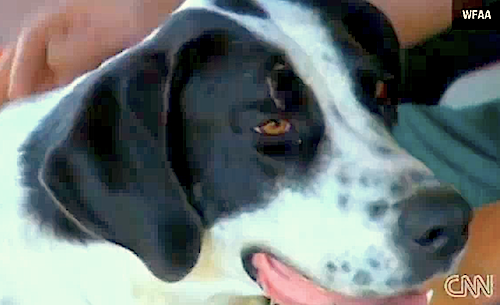

 As
we celebrate New Year's with reflections on 2010 and resolutions for
2011, our pets might also have some plans for the coming year.
As
we celebrate New Year's with reflections on 2010 and resolutions for
2011, our pets might also have some plans for the coming year.
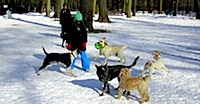 Each
day seems to begin anew for our beloved animal friends, without
the structure of a human calendar of events. I imagine that the only
thing they notice about holidays — as opposed to any other day
of the year — is that the people in their packs are home more,
and may be more likely to play. Perhaps there are also better table
scraps
Each
day seems to begin anew for our beloved animal friends, without
the structure of a human calendar of events. I imagine that the only
thing they notice about holidays — as opposed to any other day
of the year — is that the people in their packs are home more,
and may be more likely to play. Perhaps there are also better table
scraps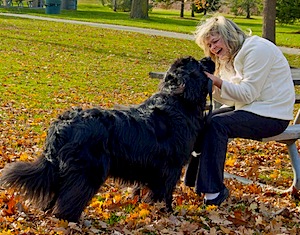 That’s
not to say that the middle-aged Newfoundland dog, who had an injection
of stem cells in October, has any sort of amorous intentions. Lexi
is spayed, after all. And stem cells, while sometimes found to have
mysterious, unplanned benefits, do not restore procreative proclivities.
Rather, it’s obvious that the 7-year-old dog with the glossy ebony
fur is feeling good as her big, black nose snuffles energetically in
bushes and she gambols on the green in a park near the Mississauga veterinary
clinic where her owner works.
That’s
not to say that the middle-aged Newfoundland dog, who had an injection
of stem cells in October, has any sort of amorous intentions. Lexi
is spayed, after all. And stem cells, while sometimes found to have
mysterious, unplanned benefits, do not restore procreative proclivities.
Rather, it’s obvious that the 7-year-old dog with the glossy ebony
fur is feeling good as her big, black nose snuffles energetically in
bushes and she gambols on the green in a park near the Mississauga veterinary
clinic where her owner works.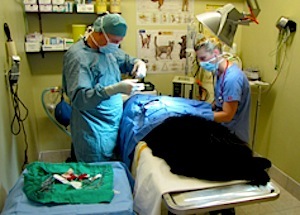 to
90 days is when Dr. (Erik) Sjonnesen says you see optimal
results (from stem cell injections),” Pike says.
to
90 days is when Dr. (Erik) Sjonnesen says you see optimal
results (from stem cell injections),” Pike says.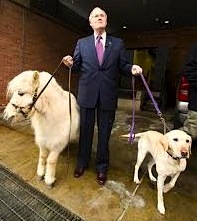 Weird
BUT true
Weird
BUT true wall
at his Desert Hot Springs home Monday. Then he got stuck.
wall
at his Desert Hot Springs home Monday. Then he got stuck.

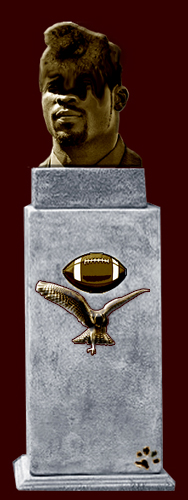
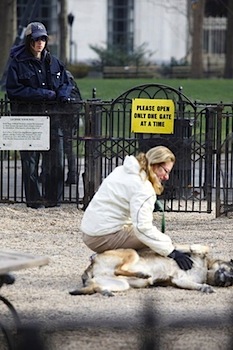 the
apartment's bathroom to a fire hydrant. And she knew there was only
one man who could crack the case: Brock Schwartz, dog-walker
inspector.
the
apartment's bathroom to a fire hydrant. And she knew there was only
one man who could crack the case: Brock Schwartz, dog-walker
inspector. the
suburbs.
the
suburbs. 
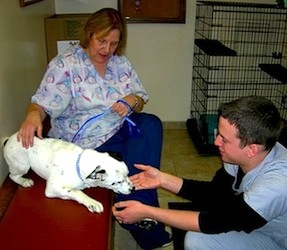 Hospital officials named the puppy “Ralphie”
after a character in the 1983 holiday classic “A Christmas
Story.” He is believed to be six to eight months old.
Hospital officials named the puppy “Ralphie”
after a character in the 1983 holiday classic “A Christmas
Story.” He is believed to be six to eight months old.
 Winnipeg
Free Press, this severely injured single mother found room in her heart
to adopt an orphaned kitten -- raising the feline like it was one of
her own.
Winnipeg
Free Press, this severely injured single mother found room in her heart
to adopt an orphaned kitten -- raising the feline like it was one of
her own.
 sparking
outrage among animal lovers, state media reported Tuesday.
sparking
outrage among animal lovers, state media reported Tuesday. their
skins to fur traders in the country's east and the meat to restaurants
in the south. "We have volunteers to protect the animals but their
efforts are not enough as the government's supervision is inadequate,"
Zhai Yining, an official with the China Small Animal Protection Association,
was quoted saying.
their
skins to fur traders in the country's east and the meat to restaurants
in the south. "We have volunteers to protect the animals but their
efforts are not enough as the government's supervision is inadequate,"
Zhai Yining, an official with the China Small Animal Protection Association,
was quoted saying. Tufts
University in Massachusetts is throwing stressed-out students
a bone -- therapy dogs to play with during finals.
Tufts
University in Massachusetts is throwing stressed-out students
a bone -- therapy dogs to play with during finals.
 with
a bottle for several weeks because their mother couldn't cope with the
demand.
with
a bottle for several weeks because their mother couldn't cope with the
demand. Owner
Ramona Wegemann (right) said Monday she barely slept for more
than a couple of minutes without interruption during about four weeks
in an "exhausting" struggle to make sure all of the purebred
Rhodesian Ridgeback puppies would survive.
Owner
Ramona Wegemann (right) said Monday she barely slept for more
than a couple of minutes without interruption during about four weeks
in an "exhausting" struggle to make sure all of the purebred
Rhodesian Ridgeback puppies would survive.
 Owners
of a dog in Germany decided to spay their pooch after she gave birth
to 17 puppies in a single litter.
Owners
of a dog in Germany decided to spay their pooch after she gave birth
to 17 puppies in a single litter.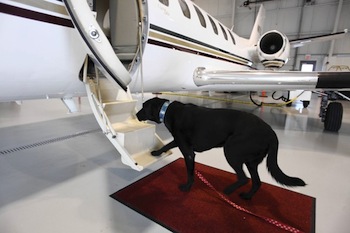 Ferguson
send such devotion straight through the stratosphere.
Ferguson
send such devotion straight through the stratosphere.
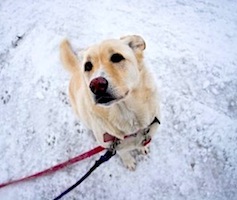
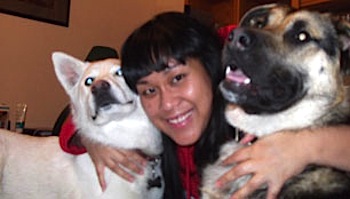 Nadia
Persaud says her three dogs -- Robine, Hood
and Aidan -- were shot by a dog catcher in Buffalo
Narrows despite being loose for less than 24 hours and despite
the tags that clearly identified their owner's phone number. The dogs
were not strays, but merely lost for several hours, which isn't enough
time to declare them strays, Persaud said, noting no one called her
cellphone number on the tags.
Nadia
Persaud says her three dogs -- Robine, Hood
and Aidan -- were shot by a dog catcher in Buffalo
Narrows despite being loose for less than 24 hours and despite
the tags that clearly identified their owner's phone number. The dogs
were not strays, but merely lost for several hours, which isn't enough
time to declare them strays, Persaud said, noting no one called her
cellphone number on the tags. Mayor
Bobby Woods (right) said. "Pets are family, but we don't
know that when dogs are at large."
Mayor
Bobby Woods (right) said. "Pets are family, but we don't
know that when dogs are at large."
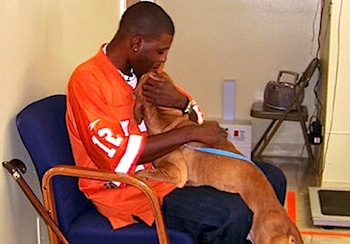 get
his service dog back, thanks to generous donations from people around
the world.
get
his service dog back, thanks to generous donations from people around
the world. we
learn that Steven is being targeted again:
we
learn that Steven is being targeted again: her
home. The neighbor took Mimi to court three months after the incident,
despite initially claiming it was not Mimi who had bit him. On
Veteran's Day, a two-day court battle ended with a judge ruling Mimi
a "dangerous dog."
her
home. The neighbor took Mimi to court three months after the incident,
despite initially claiming it was not Mimi who had bit him. On
Veteran's Day, a two-day court battle ended with a judge ruling Mimi
a "dangerous dog." fearful
he would never get his beloved companion back.
fearful
he would never get his beloved companion back. Services
Agency (CBSA) on training the first detector dog teams
in Canada whose job it is to find contraband tobacco products.
The two teams, which received training at the CBSA's National
Institute of Learning and Excellence in Rigaud, will be deployed
to ports of entry in Montréal and Vancouver,
the regions with the highest amount of contraband activity, including
illegal tobacco.
Services
Agency (CBSA) on training the first detector dog teams
in Canada whose job it is to find contraband tobacco products.
The two teams, which received training at the CBSA's National
Institute of Learning and Excellence in Rigaud, will be deployed
to ports of entry in Montréal and Vancouver,
the regions with the highest amount of contraband activity, including
illegal tobacco.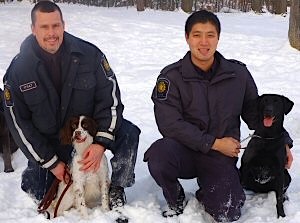 CSC
at this graduation is a testament to the CBSA's international reputation
as a leader in detection training and the contributions it makes to
public safety," said Minister Toews.
CSC
at this graduation is a testament to the CBSA's international reputation
as a leader in detection training and the contributions it makes to
public safety," said Minister Toews.


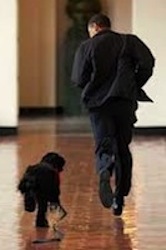 Video
Prohibition Act of 2010 into law. The new law prohibits the
creation and distribution of “crush videos” and establishes
a penalty of up to seven years in prison.
Video
Prohibition Act of 2010 into law. The new law prohibits the
creation and distribution of “crush videos” and establishes
a penalty of up to seven years in prison. “The
ASPCA
has long recognized the dangerous potential for animal cruelty to
lead to more serious crimes,” says Dr. Randall Lockwood
(right), Senior Vice President of ASPCA
Forensic Sciences and Anti-Cruelty Projects.
“The
ASPCA
has long recognized the dangerous potential for animal cruelty to
lead to more serious crimes,” says Dr. Randall Lockwood
(right), Senior Vice President of ASPCA
Forensic Sciences and Anti-Cruelty Projects. 




 rainstorms
in the Northeast remind us that Jack Frost is on
his way.
rainstorms
in the Northeast remind us that Jack Frost is on
his way. prevent
the accidental ingestion of any antifreeze or de-icing chemicals that
your pet may have on his fur.
prevent
the accidental ingestion of any antifreeze or de-icing chemicals that
your pet may have on his fur.

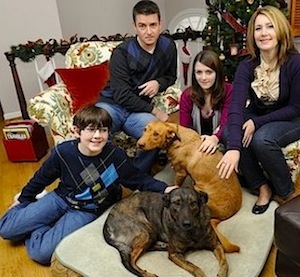
 October
2009 AP-Petside.com poll, 52 percent planned to buy a gift for their
pet, an increase over 2008, when just 43 percent said they planned to
buy their pet a gift. The results suggest the increase seen in last
year's poll was sustained as the economy continued its slow recovery.
October
2009 AP-Petside.com poll, 52 percent planned to buy a gift for their
pet, an increase over 2008, when just 43 percent said they planned to
buy their pet a gift. The results suggest the increase seen in last
year's poll was sustained as the economy continued its slow recovery.

 and
games to cleaning and safety products, these solution-oriented
products are ideal additions
and
games to cleaning and safety products, these solution-oriented
products are ideal additions  to
any holiday gift list. And best of all, most of the items retail for
under $15.
to
any holiday gift list. And best of all, most of the items retail for
under $15.









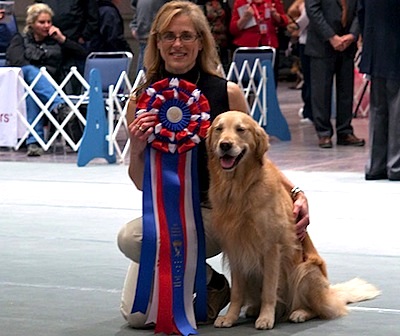
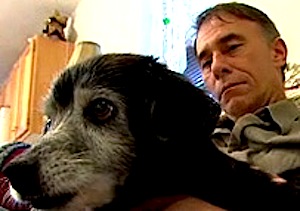 Kevin
Nelson, of Amherst, said he believes that
Misty is 25 years old. He adopted her 18 years ago
from a dog foster home in Amherst.
Kevin
Nelson, of Amherst, said he believes that
Misty is 25 years old. He adopted her 18 years ago
from a dog foster home in Amherst.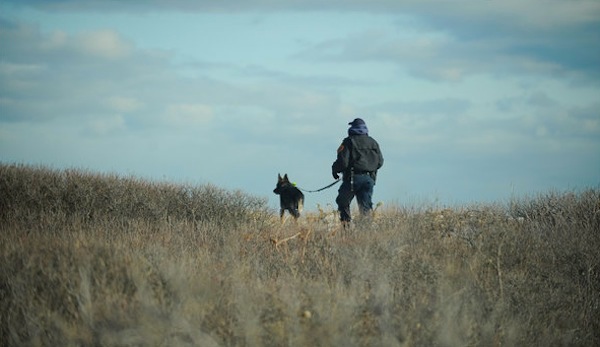

 owners
of other breeds. In fact, some of those pet owners told CBS
2 that they’re now carrying weapons to protect themselves
and their animals.
owners
of other breeds. In fact, some of those pet owners told CBS
2 that they’re now carrying weapons to protect themselves
and their animals. Tompkins
Square Park. “In a second, the dog went for Jesse’s
(right) throat – he got his skin under his jowl,” Juback
said. “I was very lightly bitten in the face, but it drew blood,
and I had to get a rabies shot.”
Tompkins
Square Park. “In a second, the dog went for Jesse’s
(right) throat – he got his skin under his jowl,” Juback
said. “I was very lightly bitten in the face, but it drew blood,
and I had to get a rabies shot.” from
5,100 in 1993, a new government study reports.
from
5,100 in 1993, a new government study reports. though
she’s only been tweeting since late October. What makes this
impressive is that Birdie is just 9 months old — and a dog.
though
she’s only been tweeting since late October. What makes this
impressive is that Birdie is just 9 months old — and a dog. New
Jersey appellate court has ruled.
New
Jersey appellate court has ruled.
 hazard
to children or pregnant women for several days. Still, doctors usually
send them home immediately after treatment.
hazard
to children or pregnant women for several days. Still, doctors usually
send them home immediately after treatment. Regulatory
Commission that its policy on human thyroid
patients was creating dilemmas for patients, some of whom are sent
home immediately after radiation treatment to households with children
or pregnant women.
Regulatory
Commission that its policy on human thyroid
patients was creating dilemmas for patients, some of whom are sent
home immediately after radiation treatment to households with children
or pregnant women. Most
of the radioactive material is eliminated from treated patients, animal
or human, via saliva, urine or solid waste. “With our veterinary
patients, I can’t control where they salivate, urinate or defecate,”
said Dr. Debra Gibbons (right), the chief of the
nuclear medicine service at Colorado State University’s
veterinary teaching hospital in Fort Collins, Colo. “I
can tell you to go to the bathroom,” she added. And humans can
be told not to sleep in the same bed with another person, or not to
cuddle people who might be vulnerable, including children or pregnant
women.
Most
of the radioactive material is eliminated from treated patients, animal
or human, via saliva, urine or solid waste. “With our veterinary
patients, I can’t control where they salivate, urinate or defecate,”
said Dr. Debra Gibbons (right), the chief of the
nuclear medicine service at Colorado State University’s
veterinary teaching hospital in Fort Collins, Colo. “I
can tell you to go to the bathroom,” she added. And humans can
be told not to sleep in the same bed with another person, or not to
cuddle people who might be vulnerable, including children or pregnant
women.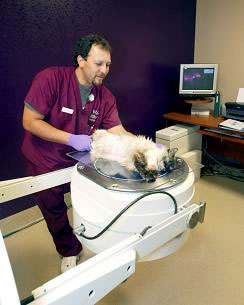 New
York State recently changed its rules on radiation exposure,
allowing shorter quarantines for pets if there are no children or
pregnant women in the household they will return to.
New
York State recently changed its rules on radiation exposure,
allowing shorter quarantines for pets if there are no children or
pregnant women in the household they will return to. way
to encourage them to do so — the “Fixin’
to Win” sweepstakes.
way
to encourage them to do so — the “Fixin’
to Win” sweepstakes. the
holiday season, while providing their pet with health and behavior
benefits that last a lifetime,” says Kim Harris,
the
holiday season, while providing their pet with health and behavior
benefits that last a lifetime,” says Kim Harris, 
 State
Sen. Fred Madden (left) and Assemblyman Paul Moriarty
(right) introduced a bill they call “Schultz’s
Law” earlier this week. It’s named for a Gloucester
Township K-9 killed last week while trying to subdue a robbery
suspect.
State
Sen. Fred Madden (left) and Assemblyman Paul Moriarty
(right) introduced a bill they call “Schultz’s
Law” earlier this week. It’s named for a Gloucester
Township K-9 killed last week while trying to subdue a robbery
suspect. 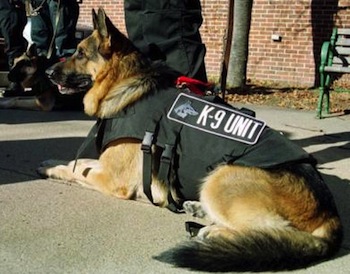
 beaten
by two NYPD cops in a dispute over dog droppings.
beaten
by two NYPD cops in a dispute over dog droppings.


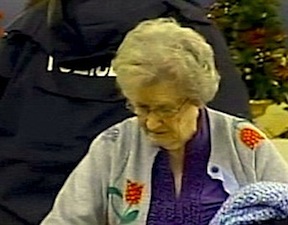 landing
-- is really a pussycat, one neighbor insisted yesterday.
landing
-- is really a pussycat, one neighbor insisted yesterday.

 teenager is believed to have inspired the popular comic-book character
Tintin, died on Nov. 26 in Copenhagen. He was 98.
teenager is believed to have inspired the popular comic-book character
Tintin, died on Nov. 26 in Copenhagen. He was 98. including
Palle Huld. Mr. Huld seemed to credit the connection, but Hergé
was not forthcoming on the subject, and Pierre Assouline,
the author of “Hergé: The Man Who Created Tintin,”
published in English last year, said in an e-mail to The Times that
he had never heard of Mr. Huld.
including
Palle Huld. Mr. Huld seemed to credit the connection, but Hergé
was not forthcoming on the subject, and Pierre Assouline,
the author of “Hergé: The Man Who Created Tintin,”
published in English last year, said in an e-mail to The Times that
he had never heard of Mr. Huld. remember
him as her "guardian angel."
remember
him as her "guardian angel."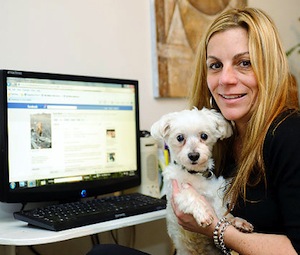 out
emails, posts flyers and scans pictures posted by animal shelters
looking for a match.
out
emails, posts flyers and scans pictures posted by animal shelters
looking for a match. "I
came across a lost cat the other day, and I knew I couldn't call AC&C,"
said Stella Panzarino (right), from Leader
of the Pack, a Brooklyn-based rescuer group. "I posted
it everywhere and I went to my vet. We're trying to do everything
we can, but it's a lot more difficult now," Panzarino said.
"I
came across a lost cat the other day, and I knew I couldn't call AC&C,"
said Stella Panzarino (right), from Leader
of the Pack, a Brooklyn-based rescuer group. "I posted
it everywhere and I went to my vet. We're trying to do everything
we can, but it's a lot more difficult now," Panzarino said. Sometimes,
it's worth the effort, according to animal rescuer and trainer Bonnie
Folz (left), who visits AC&C's Brooklyn shelter several
times a week to search for lost animals. "Brooklyn is my hunting
ground," said Folz, whose eagle eye has helped spark many successful
reunions.
Sometimes,
it's worth the effort, according to animal rescuer and trainer Bonnie
Folz (left), who visits AC&C's Brooklyn shelter several
times a week to search for lost animals. "Brooklyn is my hunting
ground," said Folz, whose eagle eye has helped spark many successful
reunions.
 girlfriend
-- who absconded with all his belongings while the couple was moving
apartments, he claims in an explosive new lawsuit.
girlfriend
-- who absconded with all his belongings while the couple was moving
apartments, he claims in an explosive new lawsuit. to
get him to pay off thousands of dollars of bills she had run up, the
suit says.
to
get him to pay off thousands of dollars of bills she had run up, the
suit says.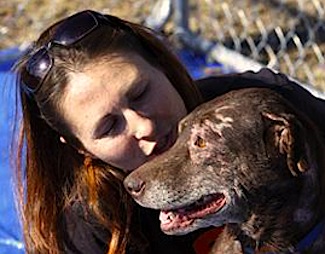 By
her grey muzzle, however, she appears to be rather old, which is why
we’ve named her Grandma (left). By the low hang
of her teats, she also appears to have had more than the one litter
she’s nursing now, a litter counting nine.
By
her grey muzzle, however, she appears to be rather old, which is why
we’ve named her Grandma (left). By the low hang
of her teats, she also appears to have had more than the one litter
she’s nursing now, a litter counting nine.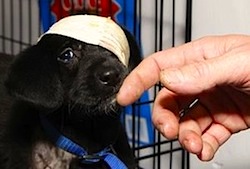 were
suffering from mange, parvovirus, worms and other illnesses. While some
were running loose on the trash-strewn property — the site of
a former hog farm and two former puppy mills — others were crammed
into barns piled with feces. A few had gunshot wounds, and some, including
a puppy we’ve named Willy (right), were suffering
from injuries that either never healed or were never treated.
were
suffering from mange, parvovirus, worms and other illnesses. While some
were running loose on the trash-strewn property — the site of
a former hog farm and two former puppy mills — others were crammed
into barns piled with feces. A few had gunshot wounds, and some, including
a puppy we’ve named Willy (right), were suffering
from injuries that either never healed or were never treated.
 encouraged
its present followers and potential new ones to use their Internet social
networking skills for a greater good. But the designated one-day campaign
appears to have stuck well with former shelter pet owners who continue
to log in and share their love stories with their pets.
encouraged
its present followers and potential new ones to use their Internet social
networking skills for a greater good. But the designated one-day campaign
appears to have stuck well with former shelter pet owners who continue
to log in and share their love stories with their pets.
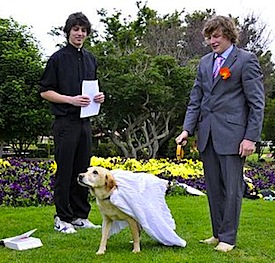
 goes
anything beyond Platonic love.
goes
anything beyond Platonic love.
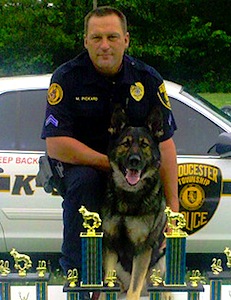
 being
held on $150,000 full cash bail.
being
held on $150,000 full cash bail. assaulting
a law enforcement animal.
assaulting
a law enforcement animal. fallen
hero, a K-9 who had served as part of their police force for nearly
all of its three and a half year life.
fallen
hero, a K-9 who had served as part of their police force for nearly
all of its three and a half year life. "It's
a very difficult time for us tonight," said Gloucester
Township Police Chief Harry Earle (right). "There was
no respect for injuring someone. And obviously no respect for injuring
an animal as well."
"It's
a very difficult time for us tonight," said Gloucester
Township Police Chief Harry Earle (right). "There was
no respect for injuring someone. And obviously no respect for injuring
an animal as well."


 In
regards to the incident which occurred at the Pinal County Animal Control
Facility, the City of Casa Grande joins with Pinal County officials
in their concern over this incident. For clarification purposes, the
animal was under the control of Pinal County and housed at their facility
at 11 Mile Corner. The facility is sometimes identified as the County’s
Casa Grande shelter.
In
regards to the incident which occurred at the Pinal County Animal Control
Facility, the City of Casa Grande joins with Pinal County officials
in their concern over this incident. For clarification purposes, the
animal was under the control of Pinal County and housed at their facility
at 11 Mile Corner. The facility is sometimes identified as the County’s
Casa Grande shelter. Afghanistan,
officials said.
Afghanistan,
officials said.
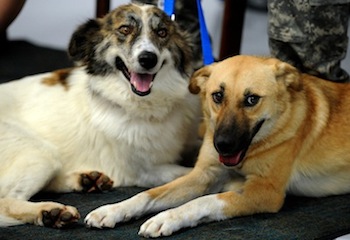 wounds
suffered in the blast, and months later, Target (right,
with Rufus,pictured at left) and the other dog, Rufus,
were flown to the United States by a charity and adopted by families.
Target — who received a hero’s welcome, including an appearance
on “The Oprah Winfrey Show” — went
to live with the family of Sgt. Terry Young (below
right), 37, an Army medic who witnessed the animals’ bravery that
night and helped treat the dogs and several American soldiers who were
wounded.
wounds
suffered in the blast, and months later, Target (right,
with Rufus,pictured at left) and the other dog, Rufus,
were flown to the United States by a charity and adopted by families.
Target — who received a hero’s welcome, including an appearance
on “The Oprah Winfrey Show” — went
to live with the family of Sgt. Terry Young (below
right), 37, an Army medic who witnessed the animals’ bravery that
night and helped treat the dogs and several American soldiers who were
wounded.
 father
of three, said in a telephone interview, his voice
choking with emotion. “Obviously, at first there was extreme anger
and horror. Now that a couple of days have passed, the anger has been
replaced by sorrow.”
father
of three, said in a telephone interview, his voice
choking with emotion. “Obviously, at first there was extreme anger
and horror. Now that a couple of days have passed, the anger has been
replaced by sorrow.”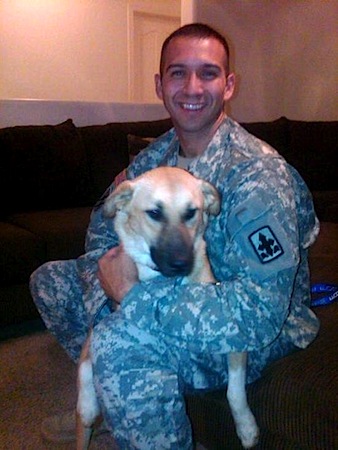 has
been an outpouring of grief.
has
been an outpouring of grief.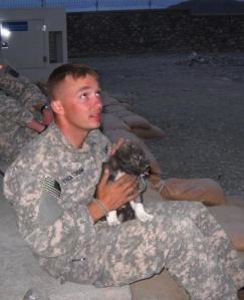
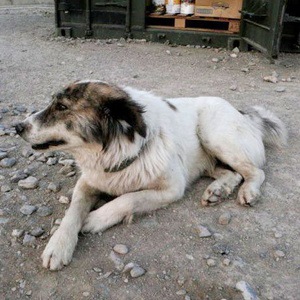






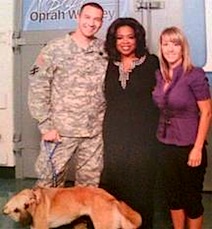 media,
including being featured on Oprah Winfrey -- was purported
to have been accidentally euthanized while at the Pinal County
Animal Care & Control shelter in Pinal County, Arizona.
She had been living with Sgt. Terry Young, one of the
fifty soldiers whose life she had saved in Afghanistan.
media,
including being featured on Oprah Winfrey -- was purported
to have been accidentally euthanized while at the Pinal County
Animal Care & Control shelter in Pinal County, Arizona.
She had been living with Sgt. Terry Young, one of the
fifty soldiers whose life she had saved in Afghanistan.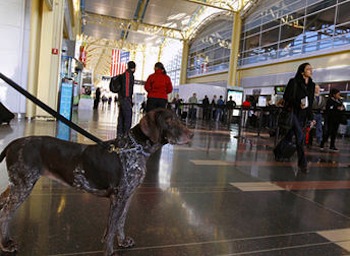
 "Dogs
would be a wonderful solution," says Jeffrey Price(right),
co-author of a textbook on aviation security and chief of Leading
Edge Strategies, a security consulting firm in Denver. "They're
much friendlier than some of the current processes – and yet,
if you're hiding something, the last thing you want to see is a dog."
"Dogs
would be a wonderful solution," says Jeffrey Price(right),
co-author of a textbook on aviation security and chief of Leading
Edge Strategies, a security consulting firm in Denver. "They're
much friendlier than some of the current processes – and yet,
if you're hiding something, the last thing you want to see is a dog."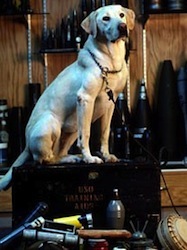
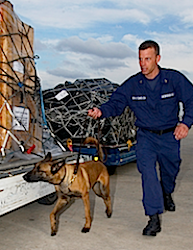 scores
of explosive vapors. Unlike machines, a dog can track a suspicious scent
to the source. They also work cheap – for a little kibble and
the praise of their handlers. Bomb-sniffing dogs are not necessarily
breeds that present a fearsome posture to travelers, but include Beagles,
Labrador Retrievers (left), and familiar guard dogs such as
the Belgian Malinois (right).
scores
of explosive vapors. Unlike machines, a dog can track a suspicious scent
to the source. They also work cheap – for a little kibble and
the praise of their handlers. Bomb-sniffing dogs are not necessarily
breeds that present a fearsome posture to travelers, but include Beagles,
Labrador Retrievers (left), and familiar guard dogs such as
the Belgian Malinois (right).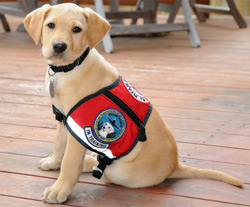 screening
tests using dogs, but it has not done any comprehensive pilot study
to see how dogs compare overall with body scanners on costs and detection
rates. Machines can cost $150,000 or more.
screening
tests using dogs, but it has not done any comprehensive pilot study
to see how dogs compare overall with body scanners on costs and detection
rates. Machines can cost $150,000 or more.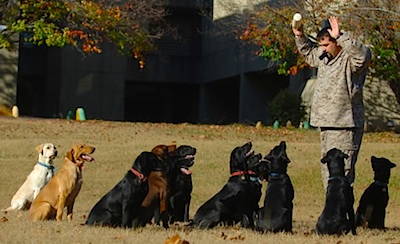 Diag-nose,
based in Britain, shows on its website a picture of airport crowds filing
past an explosives-detecting dog – the dog separated from the
people by a plastic sheet perforated with holes. The dog sniffs the
air passing through the holes and alerts the handler if it detects something.
Diag-nose,
based in Britain, shows on its website a picture of airport crowds filing
past an explosives-detecting dog – the dog separated from the
people by a plastic sheet perforated with holes. The dog sniffs the
air passing through the holes and alerts the handler if it detects something.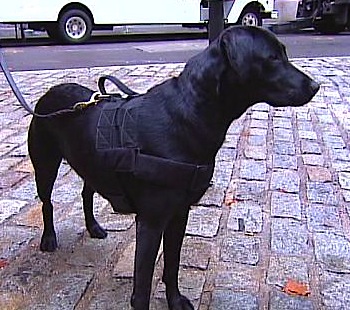

 of
the House have introduced a bill that would permanently remove wolves
from the protection of the Endangered Species Act. A more “moderate”
proposal sponsored by two Montana Democrats, Senators
Max Baucus (left) and Jon Tester (right),
would exempt only wolves in Montana and Idaho. Both bills could be pushed
hard in the remaining days of Congress’s lame-duck
of
the House have introduced a bill that would permanently remove wolves
from the protection of the Endangered Species Act. A more “moderate”
proposal sponsored by two Montana Democrats, Senators
Max Baucus (left) and Jon Tester (right),
would exempt only wolves in Montana and Idaho. Both bills could be pushed
hard in the remaining days of Congress’s lame-duck  Meanwhile,
Gov. C. L. "Butch" Otter of Idaho
(left) — furious at a court decision canceling his state’s
wolf hunt — has said he won’t allow a dime of state
money to be spent safeguarding Idaho’s wolves. He announced that
Idaho won’t do biological surveys, won’t investigate illegal
kills and won’t go after poachers.
Meanwhile,
Gov. C. L. "Butch" Otter of Idaho
(left) — furious at a court decision canceling his state’s
wolf hunt — has said he won’t allow a dime of state
money to be spent safeguarding Idaho’s wolves. He announced that
Idaho won’t do biological surveys, won’t investigate illegal
kills and won’t go after poachers. Federal protections remained in place in Wyoming because the state’s
management plan did not pass Interior’s muster.
Federal protections remained in place in Wyoming because the state’s
management plan did not pass Interior’s muster. 
 touch
of warmth to the holidays for the pets of Sacramento-area homeless people
by donating toward holiday gift baskets, prepared by volunteers at UC
Davis' William Pritchard Veterinary Medical Teaching Hospital.
touch
of warmth to the holidays for the pets of Sacramento-area homeless people
by donating toward holiday gift baskets, prepared by volunteers at UC
Davis' William Pritchard Veterinary Medical Teaching Hospital.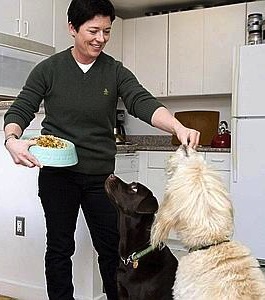 a
pizza, her pint-sized Pomeranian Lennon gets one too — made
with molasses instead of tomato sauce so he doesn’t get sick.
a
pizza, her pint-sized Pomeranian Lennon gets one too — made
with molasses instead of tomato sauce so he doesn’t get sick. According
to vet Francisco DiPolo (right) of TriBeCa’s
Worth Street Veterinary Center, “a source of
protein and fat is important.” So are complex carbohydrates,
vegetables and a good source of fatty acid. “Any ingredient
you use out of your fridge is going to be better than what’s
coming out of a bag or a can,” he says.
According
to vet Francisco DiPolo (right) of TriBeCa’s
Worth Street Veterinary Center, “a source of
protein and fat is important.” So are complex carbohydrates,
vegetables and a good source of fatty acid. “Any ingredient
you use out of your fridge is going to be better than what’s
coming out of a bag or a can,” he says.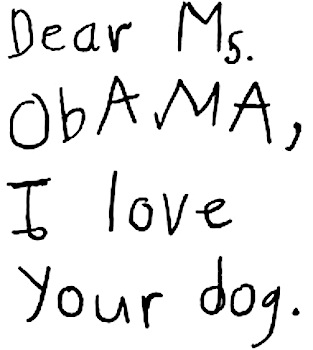
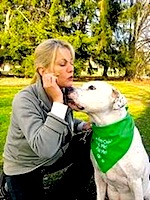 Chase
is a 12-year-old neutered pit bull terrier mix at the Humane
Society of Port Jervis. Chase is housebroken, loves other
dogs and cats and slept in his owner's bed. He is white with some
black freckles on his ears. Other than some leash training, "he
will make the perfect companion," said shelter volunteer, Marion
Durrwachter.
Chase
is a 12-year-old neutered pit bull terrier mix at the Humane
Society of Port Jervis. Chase is housebroken, loves other
dogs and cats and slept in his owner's bed. He is white with some
black freckles on his ears. Other than some leash training, "he
will make the perfect companion," said shelter volunteer, Marion
Durrwachter. Rugby
is an 8-year-old neutered white pit bull-bulldog mix with blue eyes
at the Ulster County SPCA. He is housebroken and
should be OK with kids. "He may be partially or fully deaf,"
said shelter kennel attendant Melissa Tiano, "we
are not sure. Sometimes it seems like he hears us, and other times
he doesn't. Maybe he's just messing with us.
Rugby
is an 8-year-old neutered white pit bull-bulldog mix with blue eyes
at the Ulster County SPCA. He is housebroken and
should be OK with kids. "He may be partially or fully deaf,"
said shelter kennel attendant Melissa Tiano, "we
are not sure. Sometimes it seems like he hears us, and other times
he doesn't. Maybe he's just messing with us.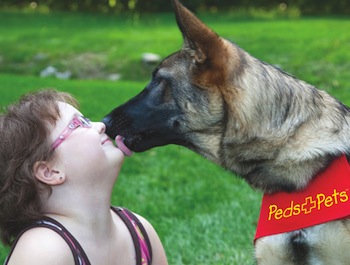 for
the "Pediatrics and Pets: Coping With Cancer Together"
campaign, a free public service program for children with cancer and
other life-threatening illnesses.
for
the "Pediatrics and Pets: Coping With Cancer Together"
campaign, a free public service program for children with cancer and
other life-threatening illnesses.
 to
the place that made their friendship possible: the dog shelter.
to
the place that made their friendship possible: the dog shelter. 

 would
be okay to bring my 6-month-old Basset Hound puppy
so she could play with my brother’s huge German Shepherd.
would
be okay to bring my 6-month-old Basset Hound puppy
so she could play with my brother’s huge German Shepherd.
 bring
them into our homes. Still, the news that a woman (described as a "willowy
brunette" by AnimalTourism.com) is allowing
her dogs to kill squirrels in Washington Square Park --
at least five of them have turned up dead -- is sad. And not very Thanksgiving-ish!
Nor appetizing, no matter how much time we've spent in the South.
bring
them into our homes. Still, the news that a woman (described as a "willowy
brunette" by AnimalTourism.com) is allowing
her dogs to kill squirrels in Washington Square Park --
at least five of them have turned up dead -- is sad. And not very Thanksgiving-ish!
Nor appetizing, no matter how much time we've spent in the South. According
to the site, "Everyone from the wildlife rehabilitator community
to dog people, Bernie Goetz (left) (subway vigilante/squirrel
lover), to Parks Enforcement Police is now on the lookout"
for the squirrel-hating lady and her dogs, a German shepherd and a shepherd
mix. They think her name may be Lena, and she may live
on Barrow Street.
According
to the site, "Everyone from the wildlife rehabilitator community
to dog people, Bernie Goetz (left) (subway vigilante/squirrel
lover), to Parks Enforcement Police is now on the lookout"
for the squirrel-hating lady and her dogs, a German shepherd and a shepherd
mix. They think her name may be Lena, and she may live
on Barrow Street.
 gray
wolves from the Endangered Species Act (ESA),
paving the way for these critical predators to rebuild their numbers
to ecologically sustainable levels. This ruling is the result of a lawsuit
brought against the FWS in 2009 by Defenders
of Wildlife
and other conservation organizations.
gray
wolves from the Endangered Species Act (ESA),
paving the way for these critical predators to rebuild their numbers
to ecologically sustainable levels. This ruling is the result of a lawsuit
brought against the FWS in 2009 by Defenders
of Wildlife
and other conservation organizations.

 anxiety-filled
nights. A young woman in a pretty floral dress walks her dog along the
streets of Manhattan. All three may be suffering from post-traumatic
stress disorder.
anxiety-filled
nights. A young woman in a pretty floral dress walks her dog along the
streets of Manhattan. All three may be suffering from post-traumatic
stress disorder. put
the trauma behind her. “Nobody ever said, ‘You need to stop
your life and deal with this — you can’t just walk through
it,’ ” she said.
put
the trauma behind her. “Nobody ever said, ‘You need to stop
your life and deal with this — you can’t just walk through
it,’ ” she said.
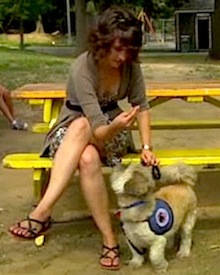 Then
she met Dexter
Then
she met Dexter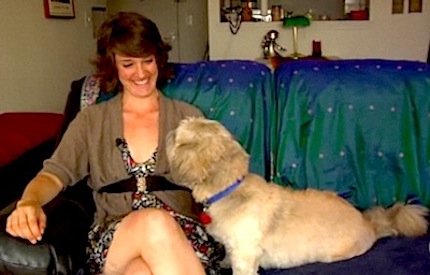
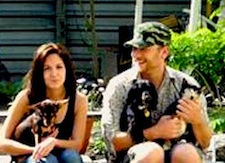
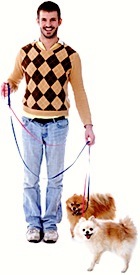 profits
since their romantic relationship went sour.
profits
since their romantic relationship went sour.


 the
New England Patriots take on the Detroit Lions on CBS, dogdom’s
best athletes will be battling it out in the show ring on NBC
— competing in the National Dog Show Presented
by Purina.
the
New England Patriots take on the Detroit Lions on CBS, dogdom’s
best athletes will be battling it out in the show ring on NBC
— competing in the National Dog Show Presented
by Purina. Boykin
Spaniel
Boykin
Spaniel  Leonberger
Leonberger
 Cane
Corso
Cane
Corso  Icelandic
Sheepdog
Icelandic
Sheepdog Bluetick
Coonhound
Bluetick
Coonhound Redbone
Coonhound
Redbone
Coonhound and
taking her body the next day to a western New York wilderness park that
she revered.
and
taking her body the next day to a western New York wilderness park that
she revered. Springer
Spaniel named Anna Riley. But, during the trip, he said he lost a knife
he intended to use, unsuccessfully tried to kill the dog with a rock,
and then called 911 from the park to turn himself in.
Springer
Spaniel named Anna Riley. But, during the trip, he said he lost a knife
he intended to use, unsuccessfully tried to kill the dog with a rock,
and then called 911 from the park to turn himself in.
 her
with a handful of tickets for failing to vaccinate them for rabies,
even though their tags showed they had their shots.
her
with a handful of tickets for failing to vaccinate them for rabies,
even though their tags showed they had their shots.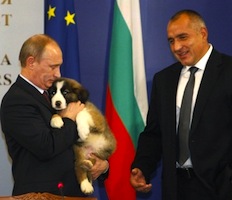 Vladimir Putin (left) has a new puppy. That is adorable.
Less adorable is the fact the dog--a twelve-week-old Bulgarian
Karakachan--does not yet have a name. (He had a name--Yorgo--but
Putin discarded it for unknown and possibly hilarious reasons.) Now
the prime minister is asking his countrymen to submit possible names
for the prized pup to the nation's official website. This too is adorable,
although less so than the Reuters report that Putin--upon being presented
with the fuzzy European mammal by Bulgarian Prime Minister Boris
Borisov (right) --"snuggled the fluffy, floppy-eared puppy
of three months before gently planting a kiss on his snout."
Vladimir Putin (left) has a new puppy. That is adorable.
Less adorable is the fact the dog--a twelve-week-old Bulgarian
Karakachan--does not yet have a name. (He had a name--Yorgo--but
Putin discarded it for unknown and possibly hilarious reasons.) Now
the prime minister is asking his countrymen to submit possible names
for the prized pup to the nation's official website. This too is adorable,
although less so than the Reuters report that Putin--upon being presented
with the fuzzy European mammal by Bulgarian Prime Minister Boris
Borisov (right) --"snuggled the fluffy, floppy-eared puppy
of three months before gently planting a kiss on his snout."

 Bulgarian
shepherd dog puppy by prime minister Boyko Borissov.
Bulgarian
shepherd dog puppy by prime minister Boyko Borissov.
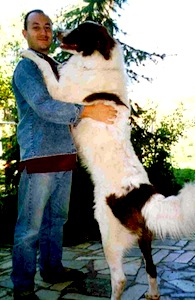 The
Karakachan is a breed of dog that originated
in Bulgaria as a mountain livestock guardian dog. Other names
are Karakachan Shepherd and Thracian
Mollos. The dog is named after the Karakachans, Balkan
nomadic shepherds. Due to their conservative stock-breeding traditions,
they have preserved some of the oldest breeds of domestic animals
in Europe: the Karakachan sheep, Karakachan horse and the Karakachan
dog.
The
Karakachan is a breed of dog that originated
in Bulgaria as a mountain livestock guardian dog. Other names
are Karakachan Shepherd and Thracian
Mollos. The dog is named after the Karakachans, Balkan
nomadic shepherds. Due to their conservative stock-breeding traditions,
they have preserved some of the oldest breeds of domestic animals
in Europe: the Karakachan sheep, Karakachan horse and the Karakachan
dog.




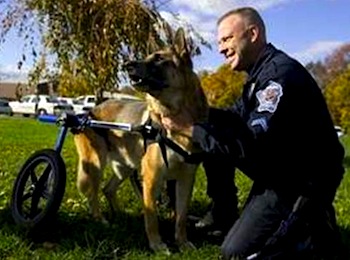 company.
company.
 named
Charlie -- and in a stunning upset, the underdog scored a knockout.
named
Charlie -- and in a stunning upset, the underdog scored a knockout.
 "After
she lost the lower-court decision, she said,
"After
she lost the lower-court decision, she said,
 would
revive, with some modifications, a 1999 law that was struck down by
the Supreme Court last April on the grounds it was too broadly written
and violated First Amendment free speech protections. Congress has been
trying since then to come up with a more narrowly crafted law, and the
measure the House passed still differs slightly from a version approved
by the Senate in September. It now goes back to the Senate.
would
revive, with some modifications, a 1999 law that was struck down by
the Supreme Court last April on the grounds it was too broadly written
and violated First Amendment free speech protections. Congress has been
trying since then to come up with a more narrowly crafted law, and the
measure the House passed still differs slightly from a version approved
by the Senate in September. It now goes back to the Senate. videos
equal to punishments for a completed product. He said that could cause
constitutional issues.
videos
equal to punishments for a completed product. He said that could cause
constitutional issues.

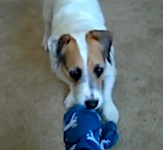


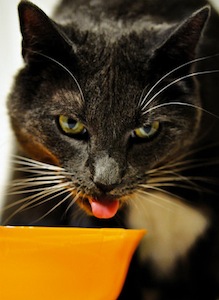 drinking
habits (
drinking
habits (
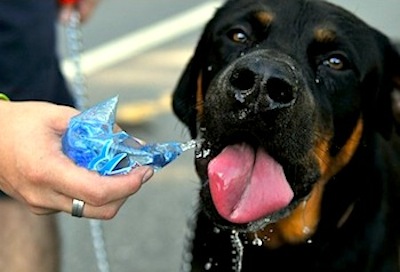 anonymity,
but I feel I should protect him from himself.) But I do prefer dogs
because they are more tolerant of my personal failings. If I spill soup,
or a sandwich, or, in a kind of lunch-special combo, soup and a sandwich,
on my tie or all over my lap, my dog looks at me and says (I am going
to translate her looks and tail wags), “Don’t worry about
it. I spill half my bowl every time I drink.”
anonymity,
but I feel I should protect him from himself.) But I do prefer dogs
because they are more tolerant of my personal failings. If I spill soup,
or a sandwich, or, in a kind of lunch-special combo, soup and a sandwich,
on my tie or all over my lap, my dog looks at me and says (I am going
to translate her looks and tail wags), “Don’t worry about
it. I spill half my bowl every time I drink.”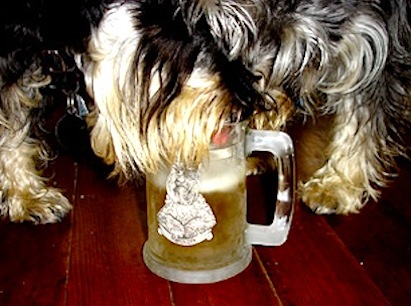
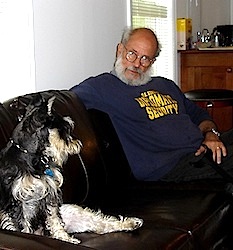 nuzzle.
So could spouses learn a few tips from their furry family members?
nuzzle.
So could spouses learn a few tips from their furry family members? understand
her words and can only listen to how she's feeling. The dog gets her
emotional message and doesn't get bogged down by the words."
understand
her words and can only listen to how she's feeling. The dog gets her
emotional message and doesn't get bogged down by the words." for
school on a recent Wednesday, entering Fordham University
at Lincoln Center for a night of exam prep. Her assignment? To lick
hands, wag her tail and solicit ear scratches. She was there to help
the students relax, and would settle for nothing less than an A for
her work.
for
school on a recent Wednesday, entering Fordham University
at Lincoln Center for a night of exam prep. Her assignment? To lick
hands, wag her tail and solicit ear scratches. She was there to help
the students relax, and would settle for nothing less than an A for
her work. Good
Dog’s founder and executive director, Rachel McPherson
(right) is passionate about letting people know just how effective these
furry chill pills can be. “Good Dogs are helping to lower blood
pressure, anxiety and stress levels,” she says. “And also
bringing joy to both students and faculty.”
Good
Dog’s founder and executive director, Rachel McPherson
(right) is passionate about letting people know just how effective these
furry chill pills can be. “Good Dogs are helping to lower blood
pressure, anxiety and stress levels,” she says. “And also
bringing joy to both students and faculty.”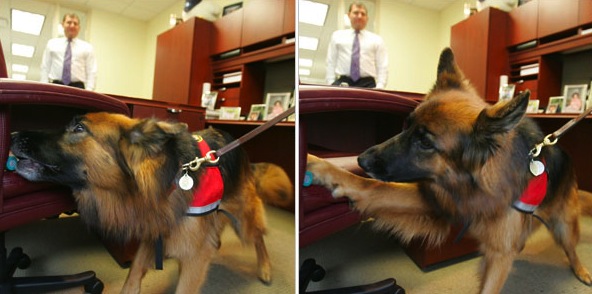
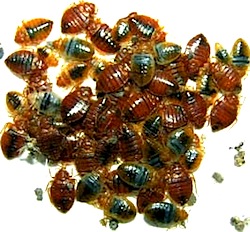 But
as the number of reported infestations rises and the demand for the
dogs soars, complaints from people who say dogs have inaccurately detected
bedbugs are also climbing. And in the bedbug industry, where some dog
trainers and sellers have back orders until spring despite the dogs’
$11,000 price tag, there are fears that a rise in so-called false positives
by dogs will harm their credibility and business.
But
as the number of reported infestations rises and the demand for the
dogs soars, complaints from people who say dogs have inaccurately detected
bedbugs are also climbing. And in the bedbug industry, where some dog
trainers and sellers have back orders until spring despite the dogs’
$11,000 price tag, there are fears that a rise in so-called false positives
by dogs will harm their credibility and business. The apartment in Union Square had bedbugs a year earlier; though the
bugs were eradicated, it was possible their scent remained. The owner
of that apartment, as well as the Upper West Side designer, spoke on
condition of anonymity because they did not want their names associated
with bedbugs, but others in their buildings also said that dogs had
indicated bedbugs even though no physical evidence of the bugs was found.
The apartment in Union Square had bedbugs a year earlier; though the
bugs were eradicated, it was possible their scent remained. The owner
of that apartment, as well as the Upper West Side designer, spoke on
condition of anonymity because they did not want their names associated
with bedbugs, but others in their buildings also said that dogs had
indicated bedbugs even though no physical evidence of the bugs was found.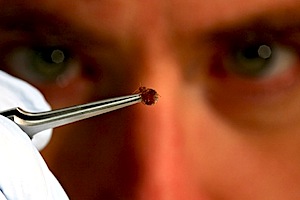 of
an ink dot.
of
an ink dot.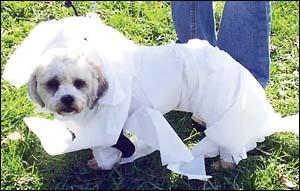

 Participating
businesses included Canine Case Squad, Chester Village Deli, Denas Dog
Wash, Gold’s Gym, Noble Pies, Steve’s Deli, Wadesons Home
Center, Waldog Astoria, Savy Chic, Sprint Wireless of Chester and Sweetbriars.
Participating
businesses included Canine Case Squad, Chester Village Deli, Denas Dog
Wash, Gold’s Gym, Noble Pies, Steve’s Deli, Wadesons Home
Center, Waldog Astoria, Savy Chic, Sprint Wireless of Chester and Sweetbriars.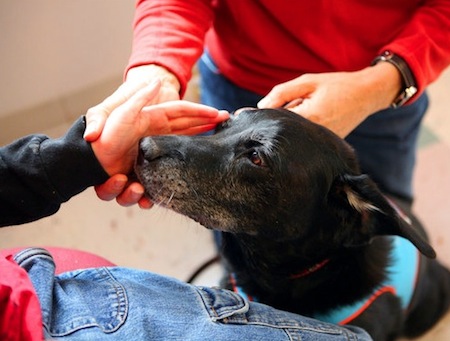 necessity
for a well-trained therapy dog, said her owner and handler, Ani
Shaker.
necessity
for a well-trained therapy dog, said her owner and handler, Ani
Shaker.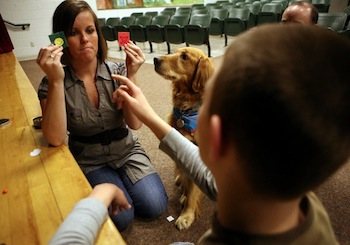 and
handler, Mark Condon, a biology professor at Dutchess Community College
in Poughkeepsie, N.Y. Dutchess, who was also trained by the Good
Dog Foundation, and Professor Condon have been volunteering
at Anderson since August 2009.
and
handler, Mark Condon, a biology professor at Dutchess Community College
in Poughkeepsie, N.Y. Dutchess, who was also trained by the Good
Dog Foundation, and Professor Condon have been volunteering
at Anderson since August 2009.


 Cyr
(right with Addison), a World War Two air force veteran,
will also thank Addison, his service dog that revolutionized
his life two years ago when he was 81 years old. “I don’t
feel like I have a disability now,” Cyr told Zootoo
Pet News
in a phone interview, speaking from his Palm Beach, Fla., home. “I
feel like I am a whole new person.”
Cyr
(right with Addison), a World War Two air force veteran,
will also thank Addison, his service dog that revolutionized
his life two years ago when he was 81 years old. “I don’t
feel like I have a disability now,” Cyr told Zootoo
Pet News
in a phone interview, speaking from his Palm Beach, Fla., home. “I
feel like I am a whole new person.”
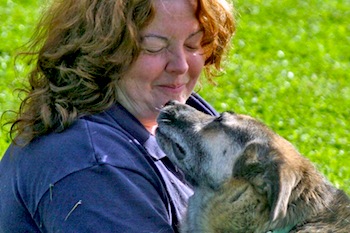
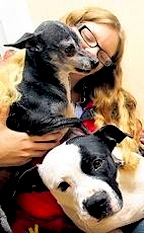 bull
head and black-and-white streaked-hair named Noel
(pictured right with Benny and volunteer Katherine Merwin) comes wagging
and jumping.
bull
head and black-and-white streaked-hair named Noel
(pictured right with Benny and volunteer Katherine Merwin) comes wagging
and jumping.
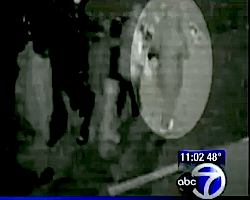
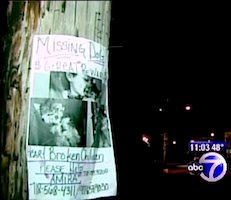

 now
a new generation of cunning canine will soon be sniffing for explosives
on city streets. They’re called “vapor wake dogs”
and CBS 2’s Tony Aiello (right)
recently put their amazing abilities to the test.
now
a new generation of cunning canine will soon be sniffing for explosives
on city streets. They’re called “vapor wake dogs”
and CBS 2’s Tony Aiello (right)
recently put their amazing abilities to the test. a
hero and an overnight sensation when he alerted his owner to a fire
in their home earlier this week.
a
hero and an overnight sensation when he alerted his owner to a fire
in their home earlier this week. as
he called 911 to rescue his rescuer.
as
he called 911 to rescue his rescuer.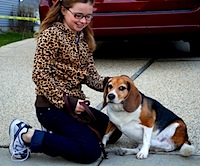
 borough
for dog droppings, according to a database of pooper-scooper violations
provided to The Post by the Sanitation Department.
borough
for dog droppings, according to a database of pooper-scooper violations
provided to The Post by the Sanitation Department.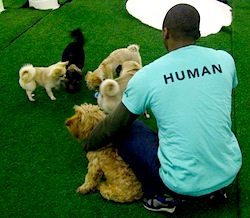 The
Fetch Club, a haven for pampered pooches, fills a space where
Fulton Fish Market smells once wafted. There is certainly no odor in
this deluxe dormitory for dogs — the air is ionized and purified.
The water is filtered, and the food is
The
Fetch Club, a haven for pampered pooches, fills a space where
Fulton Fish Market smells once wafted. There is certainly no odor in
this deluxe dormitory for dogs — the air is ionized and purified.
The water is filtered, and the food is 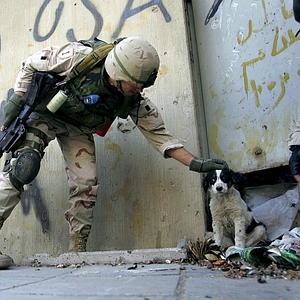
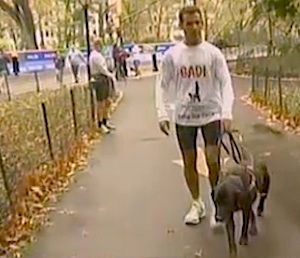
 short
time before he decided he wasn’t going to live in the dark anymore.
short
time before he decided he wasn’t going to live in the dark anymore. Israel
no one would help and support and give the follow-up,” Braun said.
Israel
no one would help and support and give the follow-up,” Braun said.


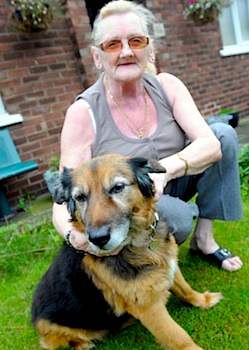 Glenice,
69, said her sheepdog-Alsatian cross - who is 178 in human years - is
way ahead of the current title-holder, an Italian mongrel aged just
23.
Glenice,
69, said her sheepdog-Alsatian cross - who is 178 in human years - is
way ahead of the current title-holder, an Italian mongrel aged just
23. them.)
Julie Klam, author of a new memoir, “You Had
Me at Woof,” is, at least in part — and in part to her chagrin
— all three.
them.)
Julie Klam, author of a new memoir, “You Had
Me at Woof,” is, at least in part — and in part to her chagrin
— all three.
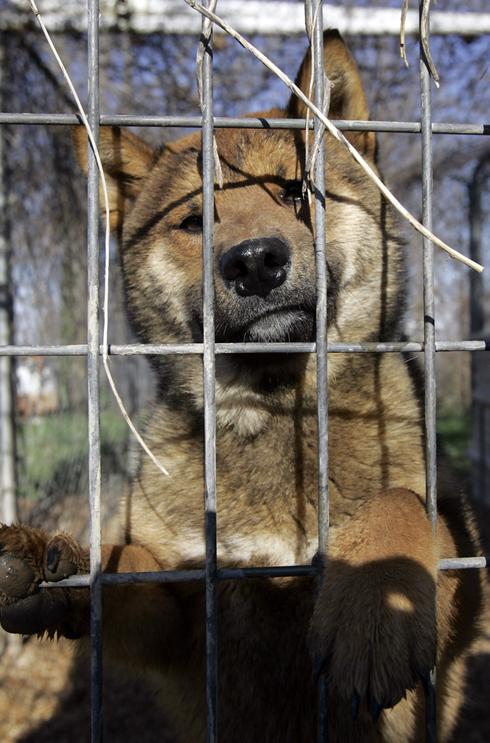 Missouri
voters on Tuesday narrowly approved a ballot measure aimed at ridding
the state of its reputation as the nation's puppy mill capital.
Missouri
voters on Tuesday narrowly approved a ballot measure aimed at ridding
the state of its reputation as the nation's puppy mill capital.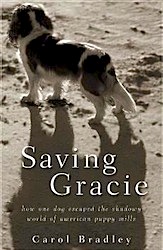
 "This
is truly a watershed moment in Missouri history," Kathy
Warnick (left), the Humane Society of Missouri's president,
said early Wednesday. "All of us in animal welfare are elated
by the outcome, and we give our heartfelt thanks to Missourians for
doing the right thing and providing a voice for Missouri's defenseless
animals."
"This
is truly a watershed moment in Missouri history," Kathy
Warnick (left), the Humane Society of Missouri's president,
said early Wednesday. "All of us in animal welfare are elated
by the outcome, and we give our heartfelt thanks to Missourians for
doing the right thing and providing a voice for Missouri's defenseless
animals."

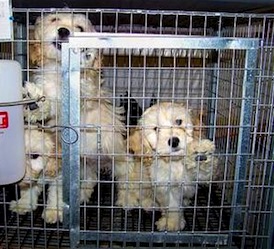
 stigma
of being the puppy mill capital of the country by approving Proposition
B, a statewide ballot initiative to establish basic
standards for the care of dogs in large-scale commercial breeding
facilities. Missouri is home to an estimated 3,000 puppy mills breeding
hundreds of thousands of puppies, far more than any other state in
the country.
stigma
of being the puppy mill capital of the country by approving Proposition
B, a statewide ballot initiative to establish basic
standards for the care of dogs in large-scale commercial breeding
facilities. Missouri is home to an estimated 3,000 puppy mills breeding
hundreds of thousands of puppies, far more than any other state in
the country.



 state;
animal welfare charities and organizations, including the Humane
Society of Missouri, the Missouri Alliance for Animal Legislation,
Humane Society of Southwest Missouri, Wayside Waifs, the American
Society for the Prevention of Cruelty to Animals (ASPCA), the Animal
Rescue Foundation (ARF), Best Friends Animal Society and The Humane
Society of the United States; prominent Missouri figures such as Tony
La Russa (left), Jack Danforth (right),
and Linda Bond (below); as well as responsible dog breeders,
elected officials, religio us leaders and Missouri businesses.
state;
animal welfare charities and organizations, including the Humane
Society of Missouri, the Missouri Alliance for Animal Legislation,
Humane Society of Southwest Missouri, Wayside Waifs, the American
Society for the Prevention of Cruelty to Animals (ASPCA), the Animal
Rescue Foundation (ARF), Best Friends Animal Society and The Humane
Society of the United States; prominent Missouri figures such as Tony
La Russa (left), Jack Danforth (right),
and Linda Bond (below); as well as responsible dog breeders,
elected officials, religio us leaders and Missouri businesses. More than 190,000 signatures were submitted to the Secretary of State’s
office in May to qualify the Puppy Mill Cruelty Prevention Act for
the statewide ballot, and the measure was certified in August. The
new law will take effect in November 2011, giving breeders time to
meet the modest standards of care. More than 200 Missouri rescue organizations
are ready and willing to take surrendered breeding dogs and find them
loving homes.
More than 190,000 signatures were submitted to the Secretary of State’s
office in May to qualify the Puppy Mill Cruelty Prevention Act for
the statewide ballot, and the measure was certified in August. The
new law will take effect in November 2011, giving breeders time to
meet the modest standards of care. More than 200 Missouri rescue organizations
are ready and willing to take surrendered breeding dogs and find them
loving homes.





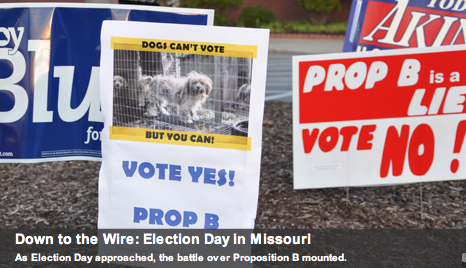 on
Election Day to declare that enough is enough! On Tuesday, November
2, voters in the Show Me State passed the Puppy Mill Cruelty Prevention
Act, which appeared on their ballots as Proposition B. (Although policy
reform is most often generated through state legislatures, Prop B
was a citizen-supported initiative). It is an incredible victory,
and one we hope will send a strong message to the governments of other
states—namely, that the public wants better conditions for puppy
mill dogs, and will take on the task of changing the law themselves
if elected officials fail to act.
on
Election Day to declare that enough is enough! On Tuesday, November
2, voters in the Show Me State passed the Puppy Mill Cruelty Prevention
Act, which appeared on their ballots as Proposition B. (Although policy
reform is most often generated through state legislatures, Prop B
was a citizen-supported initiative). It is an incredible victory,
and one we hope will send a strong message to the governments of other
states—namely, that the public wants better conditions for puppy
mill dogs, and will take on the task of changing the law themselves
if elected officials fail to act. ASPCA
team members were on the ground in Missouri on Election Day, working
long hours to get out the vote—and it paid off! Proposition
B’s victory was uncertain until the early morning of November
3, when it was finally confirmed by a margin of more than 60,000 votes.
The following is a glimpse of the final hours before victory.
ASPCA
team members were on the ground in Missouri on Election Day, working
long hours to get out the vote—and it paid off! Proposition
B’s victory was uncertain until the early morning of November
3, when it was finally confirmed by a margin of more than 60,000 votes.
The following is a glimpse of the final hours before victory.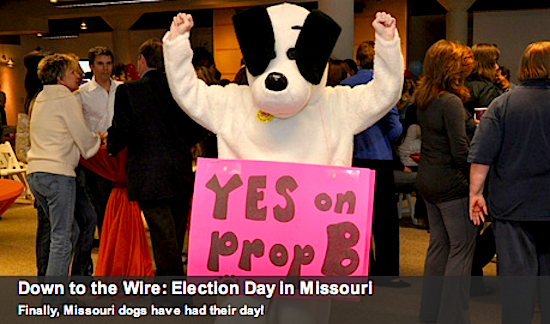


 pampers
him with two daily walks, a brace of imported American toys and grooming
tools, $300 worth of monthly food and treats and his own sofa in her
high-rise apartment.
pampers
him with two daily walks, a brace of imported American toys and grooming
tools, $300 worth of monthly food and treats and his own sofa in her
high-rise apartment. How this came to be is, in some ways, the story of modern China as well.
Centuries ago, China’s elite kept dogs as pets; the Pekingese
(right) is said to date to the 700s, when Chinese emperors made it the
palace dog — and executed anyone who stole one. But in the Communist
era, dogs were more likely to be guards, herders or meals than companions.
Both ideological dogma and necessity during China’s many lean
years rendered pets a bourgeois luxury. Indeed, after dogs first began
to appear in Beijing households, the government decreed in 1983 that
they and seven other animals, including pigs and ducks, were banned
from the city.
How this came to be is, in some ways, the story of modern China as well.
Centuries ago, China’s elite kept dogs as pets; the Pekingese
(right) is said to date to the 700s, when Chinese emperors made it the
palace dog — and executed anyone who stole one. But in the Communist
era, dogs were more likely to be guards, herders or meals than companions.
Both ideological dogma and necessity during China’s many lean
years rendered pets a bourgeois luxury. Indeed, after dogs first began
to appear in Beijing households, the government decreed in 1983 that
they and seven other animals, including pigs and ducks, were banned
from the city.
 Lamborghini
to the local supermarket. The pinnacle of pretension appears to be the
Tibetan mastiff (left), a huge and reportedly fierce
breed from the Himalayan plateau that, lore says, was organized by Genghis
Khan (right) into a 30,000-dog K-9 corps.
Lamborghini
to the local supermarket. The pinnacle of pretension appears to be the
Tibetan mastiff (left), a huge and reportedly fierce
breed from the Himalayan plateau that, lore says, was organized by Genghis
Khan (right) into a 30,000-dog K-9 corps.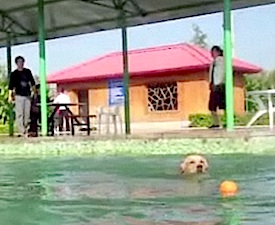 chapel,
a dog-owner motel, an immaculate 600-bay kennel — visitors must
step in a disinfectant vat before entering — and two bone-shaped
swimming pools.
chapel,
a dog-owner motel, an immaculate 600-bay kennel — visitors must
step in a disinfectant vat before entering — and two bone-shaped
swimming pools. bath
and a Web site where, every Monday, they can see fresh snapshots of
their pet. The park, which opened last year, is the brainchild of a
Beijing dog lover who amassed a fortune in the refrigerator business,
according to Li Zixiao, the park’s sales manager. “Everyone
who brings his dog here considers his dog as a child,” he said.
bath
and a Web site where, every Monday, they can see fresh snapshots of
their pet. The park, which opened last year, is the brainchild of a
Beijing dog lover who amassed a fortune in the refrigerator business,
according to Li Zixiao, the park’s sales manager. “Everyone
who brings his dog here considers his dog as a child,” he said. submitted
to China’s semi-independent legislature, the National People’s
Congress.
submitted
to China’s semi-independent legislature, the National People’s
Congress. 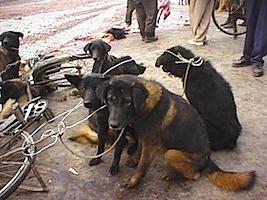 Nothing
the legislature does becomes law without a nod from higher-ups, but
the proposal has survived two rounds of public comment, which bodes
well for its future.
Nothing
the legislature does becomes law without a nod from higher-ups, but
the proposal has survived two rounds of public comment, which bodes
well for its future.
 suffer
“separation anxiety” when their owners leave them at home,
scratching worriedly at the door and whining. So which is your dog?
Take this quiz to discover whether your pet thinks the water bowl is
half-empty or half-full.
suffer
“separation anxiety” when their owners leave them at home,
scratching worriedly at the door and whining. So which is your dog?
Take this quiz to discover whether your pet thinks the water bowl is
half-empty or half-full. the
Humane Society of New York, nearly had to be scuttled
when the planned venue, new club District 36, canceled at the last minute
because it didn't have a certificate of occupancy. Celebs in costume
with their matching, dressed-up dogs, including Tinsley Mortimer, Dylan
Lauren and Sara Gore in burlesque outfits, were left to parade in the
street with other guests who paid $50 each when they arrived.
the
Humane Society of New York, nearly had to be scuttled
when the planned venue, new club District 36, canceled at the last minute
because it didn't have a certificate of occupancy. Celebs in costume
with their matching, dressed-up dogs, including Tinsley Mortimer, Dylan
Lauren and Sara Gore in burlesque outfits, were left to parade in the
street with other guests who paid $50 each when they arrived. Matthew Isaacs (right), owner of West 14th Street sports bar
Snap, offered to take them in, but dogs weren't allowed
near the restaurant area.
Matthew Isaacs (right), owner of West 14th Street sports bar
Snap, offered to take them in, but dogs weren't allowed
near the restaurant area. 

 farming
techniques with more conventional livestock like cattle, pigs and chickens
— winning a California ballot initiative in 2008 to increase the
size of animal cages and, last summer, wresting similar concessions
from producers in Ohio. The group has also taken aim at some forms of
hunting, including campaigning for a ballot measure in North Dakota
that would prohibit big game hunting in fenced enclosures.
farming
techniques with more conventional livestock like cattle, pigs and chickens
— winning a California ballot initiative in 2008 to increase the
size of animal cages and, last summer, wresting similar concessions
from producers in Ohio. The group has also taken aim at some forms of
hunting, including campaigning for a ballot measure in North Dakota
that would prohibit big game hunting in fenced enclosures.
 thanks
to a collaboration between a neurosurgeon and some veterinarians in
Los Angeles. And that is turning out to be good for humans.
thanks
to a collaboration between a neurosurgeon and some veterinarians in
Los Angeles. And that is turning out to be good for humans. What
Dr. Mamelak has gained from teaching the procedure to veterinarians
is access to tissue samples from the treated dogs. That’s significant
because Cushing’s afflicts only one in a million humans, making
it a difficult disease to study. By contrast, it afflicts about 100,000
dogs a year in the United States. The canine tissue samples are enabling
him and his colleagues to develop drugs to one day treat Cushing’s
disease in both humans and dogs.
What
Dr. Mamelak has gained from teaching the procedure to veterinarians
is access to tissue samples from the treated dogs. That’s significant
because Cushing’s afflicts only one in a million humans, making
it a difficult disease to study. By contrast, it afflicts about 100,000
dogs a year in the United States. The canine tissue samples are enabling
him and his colleagues to develop drugs to one day treat Cushing’s
disease in both humans and dogs.
 beauty
salon in Brooklyn on Saturday night shot the gunman’s revolver
out of his hands, police officials said on Monday.
beauty
salon in Brooklyn on Saturday night shot the gunman’s revolver
out of his hands, police officials said on Monday.



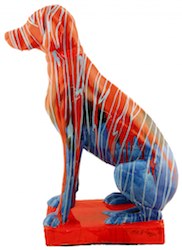 features
twelve stone-cast dog and cat statues, hand-painted by local emerging
artists.
features
twelve stone-cast dog and cat statues, hand-painted by local emerging
artists.

 festooned
with tassels.
festooned
with tassels.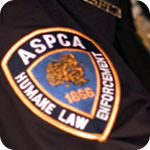
 year-old
female Chihuahua.
year-old
female Chihuahua.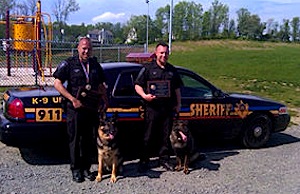 a
Golden Hill home chased two men to Fletcher Street after stumbling on
them in his garage just after noon Thursday.
a
Golden Hill home chased two men to Fletcher Street after stumbling on
them in his garage just after noon Thursday.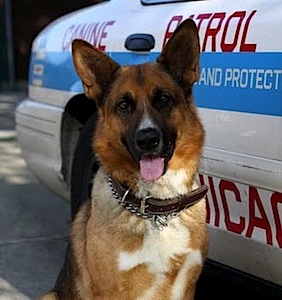

 What
breed of dog is Duke (left), a powerfully built 5-year-old
with a gentle temperament who is the pet of Carl P. Paladino, the Republican
running for governor against the Democratic nominee, Andrew M. Cuomo.
What
breed of dog is Duke (left), a powerfully built 5-year-old
with a gentle temperament who is the pet of Carl P. Paladino, the Republican
running for governor against the Democratic nominee, Andrew M. Cuomo. Duke
has been described in The Times as a British Staffordshire Bull
Terrier (right), though usually he is just called a pit bull.
But recently, a reader challenged the Times’s description, saying
that Duke was too big to be a Staffordshire bull terrier. That prompted
a visit just after 10 a.m. on Thursday to Buffalo City Hall, in search
of the office of dog licenses, hoping to clear up the confusion.
Duke
has been described in The Times as a British Staffordshire Bull
Terrier (right), though usually he is just called a pit bull.
But recently, a reader challenged the Times’s description, saying
that Duke was too big to be a Staffordshire bull terrier. That prompted
a visit just after 10 a.m. on Thursday to Buffalo City Hall, in search
of the office of dog licenses, hoping to clear up the confusion.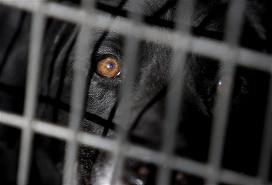 or
water. Their owner was charged with abuse and neglect, then given a
court date. And with that, Trilby and Slinky became "court case
dogs," which turns them into inmates of sort, with home becoming
cages at
or
water. Their owner was charged with abuse and neglect, then given a
court date. And with that, Trilby and Slinky became "court case
dogs," which turns them into inmates of sort, with home becoming
cages at 

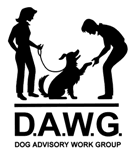 D.A.W.G.
[Dog Advisory Work Group] Court Advocacy program, where members
appear in court on behalf of the dog and make sure laws are upheld."
D.A.W.G.
[Dog Advisory Work Group] Court Advocacy program, where members
appear in court on behalf of the dog and make sure laws are upheld." foundchicago.org.)
foundchicago.org.)

 October 20, 2010
October 20, 2010 Cops
said Li, owner of the Jing Lung Chinese Restaurant on Nostrand Ave.
in Prospect-Lefferts Gardens, entered the dogs' nearby domain despite
a posted sign warning, "Beware of Dog."
Cops
said Li, owner of the Jing Lung Chinese Restaurant on Nostrand Ave.
in Prospect-Lefferts Gardens, entered the dogs' nearby domain despite
a posted sign warning, "Beware of Dog."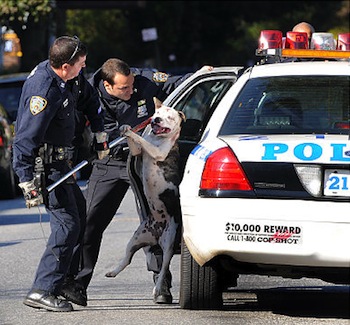 Sing
said. Sing said she believes Joe had a heart attack because he was "hyped
up" from the incident.
Sing
said. Sing said she believes Joe had a heart attack because he was "hyped
up" from the incident. Wisconsin
who knew that Heltzer had recently opened a shelter for dogs facing
the death sentence because they are aggressive, sick or crippled —
too flawed to be adopted.
Wisconsin
who knew that Heltzer had recently opened a shelter for dogs facing
the death sentence because they are aggressive, sick or crippled —
too flawed to be adopted.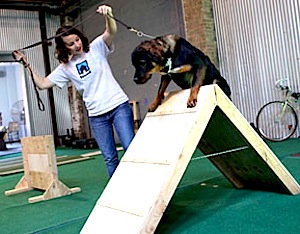 said
Alicia Boemi (right), Found's executive director.
said
Alicia Boemi (right), Found's executive director.

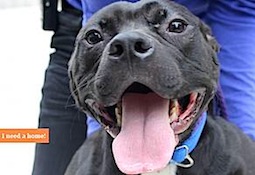
















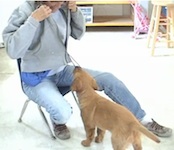


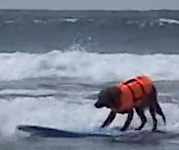
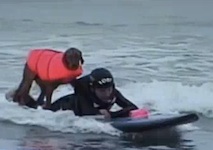


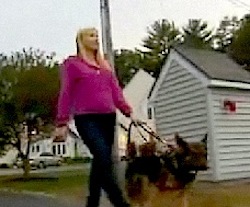 Shepherd
who never leaves her side.
Shepherd
who never leaves her side.  shorthaired
Chihuahua — in tow.
shorthaired
Chihuahua — in tow.


 of
Cruelty to Animals (ASPCA).
Both winners are one-time California castoffs.
of
Cruelty to Animals (ASPCA).
Both winners are one-time California castoffs. And
they aren’t talking about basset hounds: those dogs just look
as if they expect the worst.
And
they aren’t talking about basset hounds: those dogs just look
as if they expect the worst.

 compared
to yesterday I feel a little better."
compared
to yesterday I feel a little better." of
dog is that?” Their favorite query by far came from the little
kid who asked if Denali was part Muppet. But with his shaggy hair, droopy
ears and horse-like gait, the pair thinks Denali looks more like a member
of “Fraggle Rock.”
of
dog is that?” Their favorite query by far came from the little
kid who asked if Denali was part Muppet. But with his shaggy hair, droopy
ears and horse-like gait, the pair thinks Denali looks more like a member
of “Fraggle Rock.” owners
can make were also some of the most common.
owners
can make were also some of the most common.
 Zootooers
know, posting photos, videos, and thoughts about the experience of being
a pet parent can connect us with millions of two-legged and four-legged
friends.
Zootooers
know, posting photos, videos, and thoughts about the experience of being
a pet parent can connect us with millions of two-legged and four-legged
friends.
 citizens
decide the fate of the Puppy Mill Cruelty Prevention Act, which will
appear on the ballot as “Proposition B.” If passed, the
Act will vastly improve the lives of dogs in Missouri’s commercial
breeding operations by limiting the number of breeding dogs to 50 per
facility and requiring basic elements of humane care including clean
water, regular exercise and adequate rest for female dogs between litters.
citizens
decide the fate of the Puppy Mill Cruelty Prevention Act, which will
appear on the ballot as “Proposition B.” If passed, the
Act will vastly improve the lives of dogs in Missouri’s commercial
breeding operations by limiting the number of breeding dogs to 50 per
facility and requiring basic elements of humane care including clean
water, regular exercise and adequate rest for female dogs between litters.
 Administration
(FDA) has issued a warning to pet parents about unregulated online pharmacies
that sell expired or counterfeit drugs without a prescription. According
to the FDA, foreign and domestic web pharmacies may ask pet parents
to fill out an online form and then falsely claim that a veterinarian
will evaluate the pet’s condition to prescribe the appropriate
treatment.
Administration
(FDA) has issued a warning to pet parents about unregulated online pharmacies
that sell expired or counterfeit drugs without a prescription. According
to the FDA, foreign and domestic web pharmacies may ask pet parents
to fill out an online form and then falsely claim that a veterinarian
will evaluate the pet’s condition to prescribe the appropriate
treatment. decision
to medicate your pet. “All pet drugs should be prescribed by a
veterinarian after an in-person physical exam, and should either be
purchased from that veterinarian or outsourced to a reputable pharmacy,
whether on- or off-line,” says Dr. Camille DeClementi (right),
ASPCA
Senior Director of Medical Records.
decision
to medicate your pet. “All pet drugs should be prescribed by a
veterinarian after an in-person physical exam, and should either be
purchased from that veterinarian or outsourced to a reputable pharmacy,
whether on- or off-line,” says Dr. Camille DeClementi (right),
ASPCA
Senior Director of Medical Records.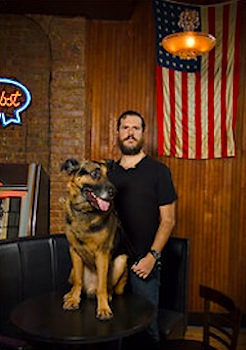 owns
it, like he’s known there, and he is. It is the last day of an
unseasonal heat wave, and as Cassius enters he automatically lopes past
the long wood bar itself, making for the backyard deck. Circling the
space to give it a once-over, he concludes that all is well and flops
down in a furry heap.
owns
it, like he’s known there, and he is. It is the last day of an
unseasonal heat wave, and as Cassius enters he automatically lopes past
the long wood bar itself, making for the backyard deck. Circling the
space to give it a once-over, he concludes that all is well and flops
down in a furry heap.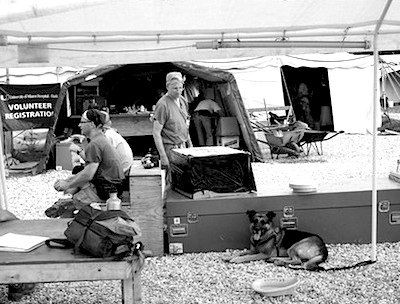 undetectable
by other means. It was his work in Haiti that led an independent judging
panel to single Cassius out from among hundreds of nominees for the
ACE award, which will be conferred on Cassius Oct. 16 at the Jacob K.
Javits Convention Center, said Lisa Peterson, a kennel club spokeswoman.
undetectable
by other means. It was his work in Haiti that led an independent judging
panel to single Cassius out from among hundreds of nominees for the
ACE award, which will be conferred on Cassius Oct. 16 at the Jacob K.
Javits Convention Center, said Lisa Peterson, a kennel club spokeswoman. su
propiedad", lo ató a su vehículo, un R-12 tipo ranchera,
y lo arrastró a toda velocidad por el asfalto de un camino vecinal.
Después arrojó al animal junto a un puente, donde murió
y fue encontrado dos días más tarde por agentes de los
Mossos d'Esquadra.
su
propiedad", lo ató a su vehículo, un R-12 tipo ranchera,
y lo arrastró a toda velocidad por el asfalto de un camino vecinal.
Después arrojó al animal junto a un puente, donde murió
y fue encontrado dos días más tarde por agentes de los
Mossos d'Esquadra.
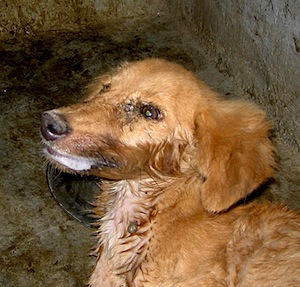 Virginia
died from exposure to a rabid dog while he was jogging in India.
Virginia
died from exposure to a rabid dog while he was jogging in India. learning
a thing or two from his mad-as-hell master.
learning
a thing or two from his mad-as-hell master.







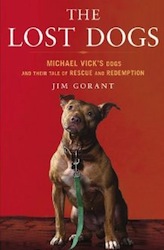
 scars
down the pit bull’s chest, Roo Yori, who already had a rescued
pit and three other dogs at home, saw potential. “He was outgoing,”
says Yori, who flew from his then-home in Minnesota to California to
meet Hector where he was being fostered. “He knew who he was.”
scars
down the pit bull’s chest, Roo Yori, who already had a rescued
pit and three other dogs at home, saw potential. “He was outgoing,”
says Yori, who flew from his then-home in Minnesota to California to
meet Hector where he was being fostered. “He knew who he was.”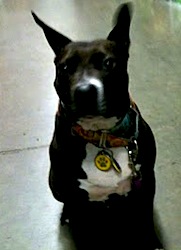


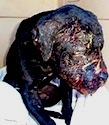


 succumbed
to "a blind rage," his angry wife told The Post yesterday.
succumbed
to "a blind rage," his angry wife told The Post yesterday. District
Court.
District
Court.
 the
burden, and in most cases gave their all, in the 1911-12 race between
the Norwegian Roald Amundsen and the Englishman Robert Falcon Scott
to be the first to reach the South Pole.
the
burden, and in most cases gave their all, in the 1911-12 race between
the Norwegian Roald Amundsen and the Englishman Robert Falcon Scott
to be the first to reach the South Pole.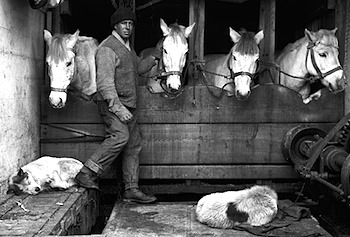 a
kind of dog-and-pony show of his own: putting some of their names
on the map. Since the names of individual animals were not allowed
on the map of the continent itself, the colonel set his sights on
the charts he knew so well from flying the Christchurch-McMurdo route
over the years.
a
kind of dog-and-pony show of his own: putting some of their names
on the map. Since the names of individual animals were not allowed
on the map of the continent itself, the colonel set his sights on
the charts he knew so well from flying the Christchurch-McMurdo route
over the years. success,
Scott may not have been entirely responsible for his fate. Several
recent books have attempted to restore Scott’s heroic standing.
In a 2001 book, “The Coldest March,” Susan Solomon, a
meteorologist with the National Oceanic and Atmospheric Administration,
assigns much of the blame for Scott’s fate to an exceptional
blizzard that struck before his party could reach the home base.
success,
Scott may not have been entirely responsible for his fate. Several
recent books have attempted to restore Scott’s heroic standing.
In a 2001 book, “The Coldest March,” Susan Solomon, a
meteorologist with the National Oceanic and Atmospheric Administration,
assigns much of the blame for Scott’s fate to an exceptional
blizzard that struck before his party could reach the home base.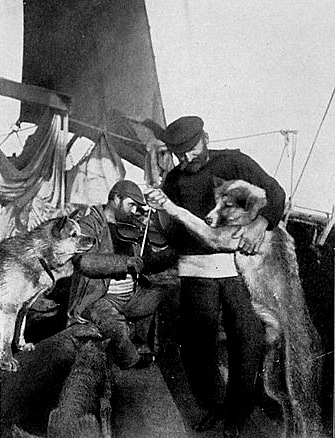 around
Antarctica got their names. But now a new set of names is being added
— not to geographical spots, which are mostly taken, but to
navigation waypoints along the main air routes between New Zealand
and McMurdo Station in Antarctica.
around
Antarctica got their names. But now a new set of names is being added
— not to geographical spots, which are mostly taken, but to
navigation waypoints along the main air routes between New Zealand
and McMurdo Station in Antarctica. The
town budget in Jeannette, Pa. has gone to the dogs.
The
town budget in Jeannette, Pa. has gone to the dogs. complaints
of the blood-sucking bugs in the first seven months of this year.
complaints
of the blood-sucking bugs in the first seven months of this year.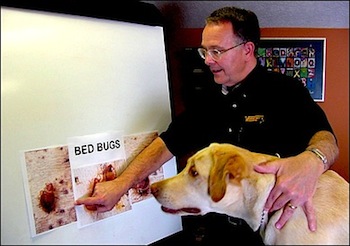 that
people safeguard their pets while the exterminators do their work,”
Rosenthal said. “Pesticides can cause grave injury and even death
to cats, dogs, birds and other pets, so we have to make sure they are
not exposed to this danger.”
that
people safeguard their pets while the exterminators do their work,”
Rosenthal said. “Pesticides can cause grave injury and even death
to cats, dogs, birds and other pets, so we have to make sure they are
not exposed to this danger.” if
that is the case, there is no need to physically treat your pet.”
if
that is the case, there is no need to physically treat your pet.” serenity-inducing
features: packs of stray, unkempt and often snarling dogs.
serenity-inducing
features: packs of stray, unkempt and often snarling dogs.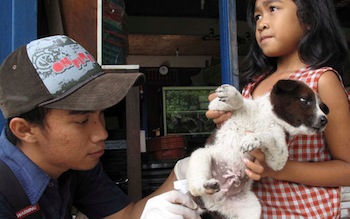 dog
vaccination campaign, funded largely with foreign assistance. Moving
from village to village, the teams’ goal is to vaccinate 400,000
animals, roughly 70 percent of the island’s dog population, by
the end of the year. Rabies is present in dogs in more than 200 of Bali’s
700 or so villages, said Putu Sumantra, the head of the provincial animal
husbandry department.
dog
vaccination campaign, funded largely with foreign assistance. Moving
from village to village, the teams’ goal is to vaccinate 400,000
animals, roughly 70 percent of the island’s dog population, by
the end of the year. Rabies is present in dogs in more than 200 of Bali’s
700 or so villages, said Putu Sumantra, the head of the provincial animal
husbandry department. island’s
streets. Dog bites have long been a fact of life on Bali, regarded as
little more than an inconvenience. But earlier in the year, after Ms.
Cawi was bitten by a dog, her son took her to a hospital for post-exposure
treatment. She was administered just two doses of a three-injection
vaccine course and sent home early with assurances that she was healthy,
her son said.
island’s
streets. Dog bites have long been a fact of life on Bali, regarded as
little more than an inconvenience. But earlier in the year, after Ms.
Cawi was bitten by a dog, her son took her to a hospital for post-exposure
treatment. She was administered just two doses of a three-injection
vaccine course and sent home early with assurances that she was healthy,
her son said. dogs,
unlike Indonesians from other parts of the country, whose adherence
to Islam means that many see dogs as unclean animals. On Bali, an island
with a population of 3.5 million people, there are about 600,000 dogs.
dogs,
unlike Indonesians from other parts of the country, whose adherence
to Islam means that many see dogs as unclean animals. On Bali, an island
with a population of 3.5 million people, there are about 600,000 dogs.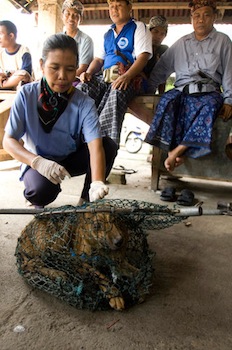 shortages
in human medicine and widespread ignorance of rabies contributed to
deaths, Dr. Meslin said. Hospitals and health centers had particular
trouble in securing immunoglobulin, which is used in post-exposure treatment
and is in shortage worldwide.
shortages
in human medicine and widespread ignorance of rabies contributed to
deaths, Dr. Meslin said. Hospitals and health centers had particular
trouble in securing immunoglobulin, which is used in post-exposure treatment
and is in shortage worldwide.
 outside
a bar, cops said.
outside
a bar, cops said. whose
dog can beat whose dog," Somerset said. The witness said that when
he returned a short time later, the situation had become heated, with
Pagan hurling accusations at Hillmann.
whose
dog can beat whose dog," Somerset said. The witness said that when
he returned a short time later, the situation had become heated, with
Pagan hurling accusations at Hillmann.


 doesn’t
involve a bunch of painkillers.
doesn’t
involve a bunch of painkillers. Hickey.
“He has no neck to his femur, he has all extra bone formation,
and his socket is very flat,” Dr. Ellen Leonhardt said. “He
has extremely severe hip dysplasia – that’s about as bad
as it gets.”
Hickey.
“He has no neck to his femur, he has all extra bone formation,
and his socket is very flat,” Dr. Ellen Leonhardt said. “He
has extremely severe hip dysplasia – that’s about as bad
as it gets.”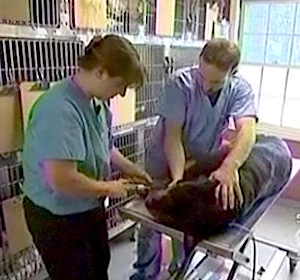 procedure
can be used on dogs, cats, horses, or any animal who is suffering from
arthritis, lameness or a restricted range of motion.
procedure
can be used on dogs, cats, horses, or any animal who is suffering from
arthritis, lameness or a restricted range of motion.

 While we might like to imagine our dogs sitting in first class seats
while enjoying in-flight entertainment, traveling in a carrier is actually
the safest way to go – as long as it’s the correct size!
Remember, your dog must be able to stand and turn comfortably in the
carrier. You may want to place some healthy treats, a favorite toy,
spare leash and collar, and any necessary medications in a puncture
resistant envelope taped to the top of the crate.
While we might like to imagine our dogs sitting in first class seats
while enjoying in-flight entertainment, traveling in a carrier is actually
the safest way to go – as long as it’s the correct size!
Remember, your dog must be able to stand and turn comfortably in the
carrier. You may want to place some healthy treats, a favorite toy,
spare leash and collar, and any necessary medications in a puncture
resistant envelope taped to the top of the crate.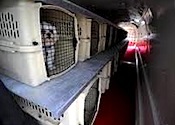 Think
twice about cargo
Think
twice about cargo checking
out local kennels, and ask if they are members of the Pet Care Services
Association, which requires certain professional and ethical standards
for membership.
checking
out local kennels, and ask if they are members of the Pet Care Services
Association, which requires certain professional and ethical standards
for membership. appearance
of the kennel; security; safety; supervision and staff; sanitation;
health care, such as dispensing medication and veterinary services;
access to drinking water; feeding procedures; exercise area; provisions
for animal comfort, such as temperature control, ventilation, adequate
light, and protection from outside elements; and sleeping quarters.
appearance
of the kennel; security; safety; supervision and staff; sanitation;
health care, such as dispensing medication and veterinary services;
access to drinking water; feeding procedures; exercise area; provisions
for animal comfort, such as temperature control, ventilation, adequate
light, and protection from outside elements; and sleeping quarters. Considering
a pet-sitter? References are key. Interview the candidate at length,
well in advance, asking about qualifications and experience. Is the
person familiar with your breed? Accustomed to handling puppies, and
both smaller and larger breeds?
Considering
a pet-sitter? References are key. Interview the candidate at length,
well in advance, asking about qualifications and experience. Is the
person familiar with your breed? Accustomed to handling puppies, and
both smaller and larger breeds? one
culture after another. In many American Indian mythologies, it
is celebrated as the Trickster, a figure by turns godlike, idiotic
and astoundingly sexually perverse. In the Navajo tradition the
coyote is revered as God’s dog. When European colonists
encountered the species, they were of two minds, heralding it
as an icon of the expansive West and vilifying it as the ultimate
varmint, the bloodthirsty bane of sheep and cattle ranchers.
one
culture after another. In many American Indian mythologies, it
is celebrated as the Trickster, a figure by turns godlike, idiotic
and astoundingly sexually perverse. In the Navajo tradition the
coyote is revered as God’s dog. When European colonists
encountered the species, they were of two minds, heralding it
as an icon of the expansive West and vilifying it as the ultimate
varmint, the bloodthirsty bane of sheep and cattle ranchers.
 identity
of the coyotes living in the eastern part of the country was revealed.
Two separate teams of researchers studying the genes of coyotes
in the Northeast reported evidence that these animals that have
for decades upon decades been thought of as coyotes are in fact
coyote-wolf hybrids.
identity
of the coyotes living in the eastern part of the country was revealed.
Two separate teams of researchers studying the genes of coyotes
in the Northeast reported evidence that these animals that have
for decades upon decades been thought of as coyotes are in fact
coyote-wolf hybrids.


 I
opened a can of worms with my
I
opened a can of worms with my 
 dog,
but can't afford it. Wouldn't do it again."
dog,
but can't afford it. Wouldn't do it again." Society
of Missouri (HSMO) removed 71 dogs from an overrun puppy mill in Camden
County, MO. The dogs—who include Dachshunds, Maltese, Shih Tzus,
Lhasa Apsos, Huskies and Boxers—were transferred to the Humane
Society of Southwest Missouri in Springfield and HSMO in St. Louis,
where they received medical treatment and will be cared for until
they’re ready for adoption.
Society
of Missouri (HSMO) removed 71 dogs from an overrun puppy mill in Camden
County, MO. The dogs—who include Dachshunds, Maltese, Shih Tzus,
Lhasa Apsos, Huskies and Boxers—were transferred to the Humane
Society of Southwest Missouri in Springfield and HSMO in St. Louis,
where they received medical treatment and will be cared for until
they’re ready for adoption. facilities
and supplies more than 40 percent of all dogs sold in pet stores nationwide.
“We see some of the worst conditions in Missouri puppy mills,”
explains Rickey. “The dogs, often very ill, are forced to live
in overcrowded, filthy conditions.”
facilities
and supplies more than 40 percent of all dogs sold in pet stores nationwide.
“We see some of the worst conditions in Missouri puppy mills,”
explains Rickey. “The dogs, often very ill, are forced to live
in overcrowded, filthy conditions.”
 outrage
across the country and shed light on a serious defect in the way the
Department of Transportation (DOT) has been tracking and reporting
pet-related incidents on commercial flights.
outrage
across the country and shed light on a serious defect in the way the
Department of Transportation (DOT) has been tracking and reporting
pet-related incidents on commercial flights. we’re
trying to work out. To discipline him when he misbehaves, my boyfriend
wrestles the dog to the ground and slaps his snout a few times. A
passer-by in the park witnessed this and ran up to my boyfriend, screaming,
“Stop abusing that dog!” What should I do?
we’re
trying to work out. To discipline him when he misbehaves, my boyfriend
wrestles the dog to the ground and slaps his snout a few times. A
passer-by in the park witnessed this and ran up to my boyfriend, screaming,
“Stop abusing that dog!” What should I do? What
a doggone shame!
What
a doggone shame! the
band sliding around on treadmills in "Here It Goes Again"
gaining more than 1.2 million hits on YouTube, or dressing up in colorful
suits in "End Love" with more than 2.2. million hits? Of
course, their epic and most popular Rube Goldberg version of "This
Too Shall Pass" tallied up more than 17 million hits.
the
band sliding around on treadmills in "Here It Goes Again"
gaining more than 1.2 million hits on YouTube, or dressing up in colorful
suits in "End Love" with more than 2.2. million hits? Of
course, their epic and most popular Rube Goldberg version of "This
Too Shall Pass" tallied up more than 17 million hits.
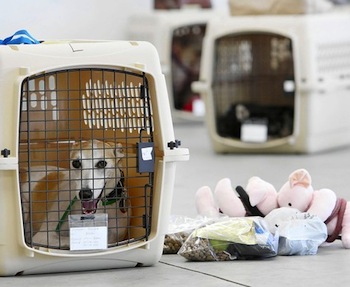 losing
patience. Perhaps bringing the dog wasn't such a good idea.
losing
patience. Perhaps bringing the dog wasn't such a good idea.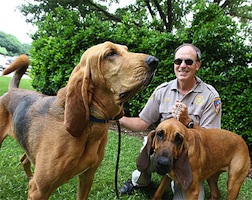
 because
the evidence against him was not legally sufficient, the Texas Court
of Criminal Appeals ruled Wednesday. The main evidence against the man,
Richard Winfrey Sr., in the 2004 murder of Murray Burr was scent identification
from bloodhounds named Quincy, James Bond and Clue. The dogs belong
to a former Fort Bend sheriff’s deputy, Keith Pikett (left with
James Bond and Clue), who retired this year after being singled out
by the Innocence Project of Texas, which claims he passes off junk science
as legitimate investigative techniques.
because
the evidence against him was not legally sufficient, the Texas Court
of Criminal Appeals ruled Wednesday. The main evidence against the man,
Richard Winfrey Sr., in the 2004 murder of Murray Burr was scent identification
from bloodhounds named Quincy, James Bond and Clue. The dogs belong
to a former Fort Bend sheriff’s deputy, Keith Pikett (left with
James Bond and Clue), who retired this year after being singled out
by the Innocence Project of Texas, which claims he passes off junk science
as legitimate investigative techniques.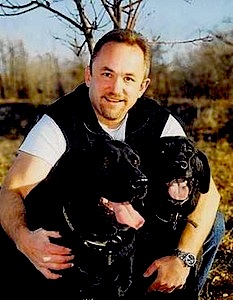 physically
and mentally.
physically
and mentally. neighborhood
— in part because the area already has a few open spaces, but
also because all those new Downtown residents need to wait their turn.
neighborhood
— in part because the area already has a few open spaces, but
also because all those new Downtown residents need to wait their turn.
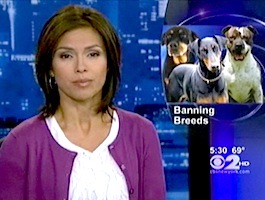 is
a dog lover.
is
a dog lover.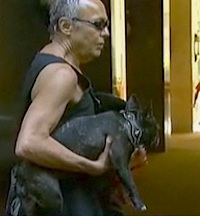 CBS
2’s John Metaxas met Emily, a 3-year-old French bulldog, but she
wasn’t feeling very welcome in the Upper West Side apartment she
shares with her owner Al Josephberg (left with Emily). “Unfortunately
certain people on the board don’t like dogs and that’s a
problem for the rest of us,” Josephberg said.
CBS
2’s John Metaxas met Emily, a 3-year-old French bulldog, but she
wasn’t feeling very welcome in the Upper West Side apartment she
shares with her owner Al Josephberg (left with Emily). “Unfortunately
certain people on the board don’t like dogs and that’s a
problem for the rest of us,” Josephberg said.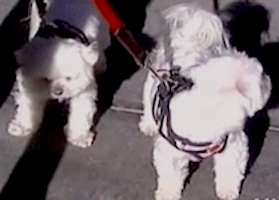 Judith
Hoffman has lived in the building for 37 years. “I’ve always
had dogs and I feel the hostility from people,” said Hoffman,
owner of Malteses Sophia and Bella (right). “I think that these
rules are outrageous.”
Judith
Hoffman has lived in the building for 37 years. “I’ve always
had dogs and I feel the hostility from people,” said Hoffman,
owner of Malteses Sophia and Bella (right). “I think that these
rules are outrageous.” But
dog owners said the rules go too far, relegating them to second-class
citizenship. “I’ve raised three children in the building,
had dogs in the building, had a cat in the building and suddenly I’m
going out the back door at all times,” Hoffman (left) said.
But
dog owners said the rules go too far, relegating them to second-class
citizenship. “I’ve raised three children in the building,
had dogs in the building, had a cat in the building and suddenly I’m
going out the back door at all times,” Hoffman (left) said.
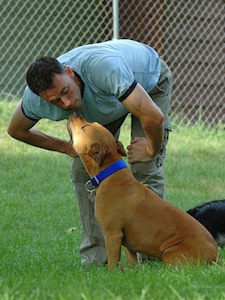 was
released from prison. It turns out there was also an extremely successful
effort to rehabilitate the pit bulls rescued from his compound. Many
found new lives as pets, and others live peacefully with other dogs
in animal sanctuaries.
was
released from prison. It turns out there was also an extremely successful
effort to rehabilitate the pit bulls rescued from his compound. Many
found new lives as pets, and others live peacefully with other dogs
in animal sanctuaries. Was
the dog reactive? How did it respond to people? How did it respond to
other dogs? Was the dog safe around food, toys and children? Things
like that. So when we sat down to take a look at [the Vick] case, we
needed to understand what the potential aggression problems were going
to be. And we also needed to satisfy the government's concerns about
liability. If this dog goes out and we permitted it and it attacks a
small child, it's going to get back to us somehow. So we really needed
to demonstrate to the government that the dogs were going to be safe
when we made some recommendations for placement."
Was
the dog reactive? How did it respond to people? How did it respond to
other dogs? Was the dog safe around food, toys and children? Things
like that. So when we sat down to take a look at [the Vick] case, we
needed to understand what the potential aggression problems were going
to be. And we also needed to satisfy the government's concerns about
liability. If this dog goes out and we permitted it and it attacks a
small child, it's going to get back to us somehow. So we really needed
to demonstrate to the government that the dogs were going to be safe
when we made some recommendations for placement."
 the
name of Gross’s 21⁄2-year-old pit bull, a rescue dog who
went from the streets of The Bronx to appearing on the label of a chocolate
bar called Peanut Butter Pit Bull.
the
name of Gross’s 21⁄2-year-old pit bull, a rescue dog who
went from the streets of The Bronx to appearing on the label of a chocolate
bar called Peanut Butter Pit Bull.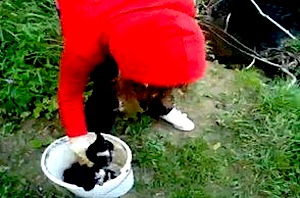






 members
go back to work or school. What were once carefree days cruising around
the park or swimming in the creek are now spent sitting by the front
door waiting for busy pet parents to come home.
members
go back to work or school. What were once carefree days cruising around
the park or swimming in the creek are now spent sitting by the front
door waiting for busy pet parents to come home.  Avenue
at Howard Park. In Tempo's memory, the family will be tying a blue ribbon
around a tree on Dog Hill in High Park.
Avenue
at Howard Park. In Tempo's memory, the family will be tying a blue ribbon
around a tree on Dog Hill in High Park. 
 Staffordshire
(Pit Bull) terriers say the same gene may also be linked to a similar,
rare fatal brain disease in humans.
Staffordshire
(Pit Bull) terriers say the same gene may also be linked to a similar,
rare fatal brain disease in humans.
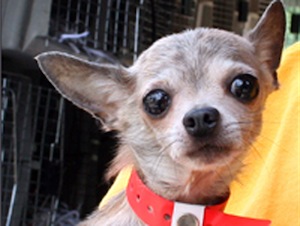 new
homes Monday.
new
homes Monday. A
man in Flint, Mich., has taken "finders, keepers" to a whole
new level by taking in a missing dog that belonged to a neighbor and
demanding $150 for its return.
A
man in Flint, Mich., has taken "finders, keepers" to a whole
new level by taking in a missing dog that belonged to a neighbor and
demanding $150 for its return. own
health.
own
health.
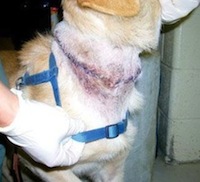 A
Highland man was sentenced for animal cruelty last week after allowing
a metal collar to rust and embed itself in his dog's neck, the Ulster
County SPCA said.
A
Highland man was sentenced for animal cruelty last week after allowing
a metal collar to rust and embed itself in his dog's neck, the Ulster
County SPCA said. a
great house or apartment is not easy, especially in the middle of
an economic downturn. Landlords are much more cautious about any red
flags in the financial and personal backgrounds of potential renters
— including pets.
a
great house or apartment is not easy, especially in the middle of
an economic downturn. Landlords are much more cautious about any red
flags in the financial and personal backgrounds of potential renters
— including pets.
 been
sentenced to a year in jail.
been
sentenced to a year in jail. manager
of Bark & Play, a dog-boarding and day-care facility in Brooklyn,
NY. Soto has been charged with five counts of misdemeanor animal cruelty
for severely neglecting several dogs boarded at the kennel.
manager
of Bark & Play, a dog-boarding and day-care facility in Brooklyn,
NY. Soto has been charged with five counts of misdemeanor animal cruelty
for severely neglecting several dogs boarded at the kennel.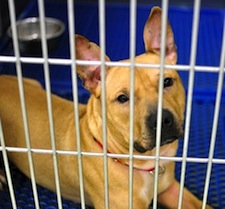 Tango, pictured here at the ASPCA,
is recovering from his injuries, and is being fostered—in advance
of adoption—by a loving family.
Tango, pictured here at the ASPCA,
is recovering from his injuries, and is being fostered—in advance
of adoption—by a loving family.
 friends?
Well now, thanks to a new product on the market, seeing your pet’s
point of view is finally possible.
friends?
Well now, thanks to a new product on the market, seeing your pet’s
point of view is finally possible.
 cost
the country $15 million in lost tourism, but Canada's largest tour
operator Air Transat is hoping to improve conditions for both travelers
and pets.
cost
the country $15 million in lost tourism, but Canada's largest tour
operator Air Transat is hoping to improve conditions for both travelers
and pets. Air Transat's commitment includes the free transportation of dogs
and cats that are rescued in the Caribbean and adopted in homes in
Canada. The arrangement also includes complimentary transport of CANDi
volunteers and vets to Air Transat's tourist destinations and a formal
endorsement of CANDi's work.
Air Transat's commitment includes the free transportation of dogs
and cats that are rescued in the Caribbean and adopted in homes in
Canada. The arrangement also includes complimentary transport of CANDi
volunteers and vets to Air Transat's tourist destinations and a formal
endorsement of CANDi's work.

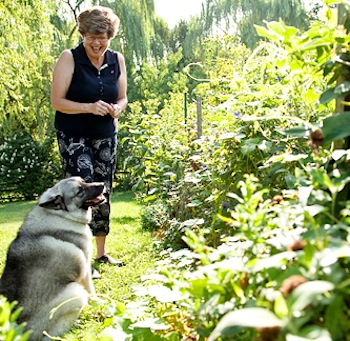 damning.
For instance, the hole that Bertie, Ms. Geltosky’s 5-year-old
Norwegian elkhound, dug in the garden was 12 inches across and 12
inches deep — the perfect size for a human foot.
damning.
For instance, the hole that Bertie, Ms. Geltosky’s 5-year-old
Norwegian elkhound, dug in the garden was 12 inches across and 12
inches deep — the perfect size for a human foot. in
the yard. The rolling landscape around her family’s 1926 Spanish
colonial was home to 12 avocado trees, 3 orange trees, a persimmon,
a loquat, a plum, a peach and an apricot. Moose likes to eat low-hanging
loquats from a tree at Anne Heller’s home in Santa Barbara,
Calif. Her favorite tree might be a “yellow lime” that
throws off fruit like beads at a Mardi Gras parade. “I call
it the Giving Tree,” said Ms. Heller, 52, who uses the harvest
for margaritas.
in
the yard. The rolling landscape around her family’s 1926 Spanish
colonial was home to 12 avocado trees, 3 orange trees, a persimmon,
a loquat, a plum, a peach and an apricot. Moose likes to eat low-hanging
loquats from a tree at Anne Heller’s home in Santa Barbara,
Calif. Her favorite tree might be a “yellow lime” that
throws off fruit like beads at a Mardi Gras parade. “I call
it the Giving Tree,” said Ms. Heller, 52, who uses the harvest
for margaritas.
 dog
trainer and an author (right), and an avid gardener, has created a
busy highway system through his backyard in Berkeley, Calif.
dog
trainer and an author (right), and an avid gardener, has created a
busy highway system through his backyard in Berkeley, Calif.
 here
are 10 foods you should never feed your dog, no matter how nicely
he asks.
here
are 10 foods you should never feed your dog, no matter how nicely
he asks.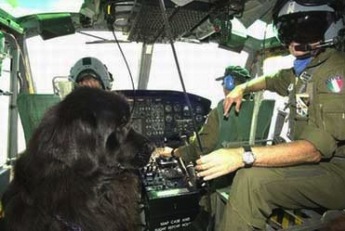


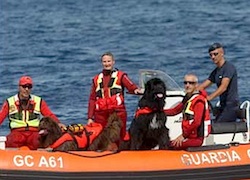
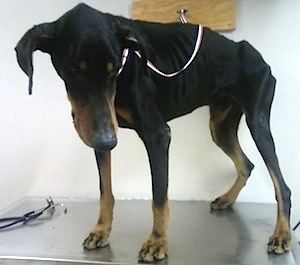 be
removed on a stretcher. The Suffolk County SPCA charged John Ferrera,
22, of Middle Island, with animal cruelty.
be
removed on a stretcher. The Suffolk County SPCA charged John Ferrera,
22, of Middle Island, with animal cruelty.
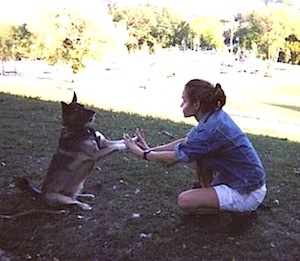 her
on-again-off-again photographer boyfriend), these two strong, thoughtful,
independent, middle-aged women were mainly concerned with regaining
their self-respect and taking control. It was entirely appropriate
that they took the first steps toward friendship while out walking
their dogs because the intensity and serious ness with which they
loved, trained and exercised those animals had (for the time being,
at least) replaced some of the other possibilities, and certainly
other relationships, in their lives.
her
on-again-off-again photographer boyfriend), these two strong, thoughtful,
independent, middle-aged women were mainly concerned with regaining
their self-respect and taking control. It was entirely appropriate
that they took the first steps toward friendship while out walking
their dogs because the intensity and serious ness with which they
loved, trained and exercised those animals had (for the time being,
at least) replaced some of the other possibilities, and certainly
other relationships, in their lives.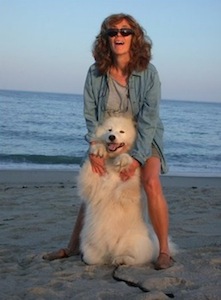 the
markers of a lifelong passion: their initial wariness of each other
(they’d met at a party a few years earlier but had hardly hit
it off); their shy, outdoor courtship (“Let’s take the
long way home,” Knapp would say after a walk, so they could
chat some more in the car); and finally Caldwell’s touchingly
naked declaration, not far into the friendship, of “Oh no —
I need you.” When Caldwell eventually manages to buy a house,
it’s both amusing and somehow inevitable that Knapp rushes up
and hoists her “like a sack of grain” over the threshold.
the
markers of a lifelong passion: their initial wariness of each other
(they’d met at a party a few years earlier but had hardly hit
it off); their shy, outdoor courtship (“Let’s take the
long way home,” Knapp would say after a walk, so they could
chat some more in the car); and finally Caldwell’s touchingly
naked declaration, not far into the friendship, of “Oh no —
I need you.” When Caldwell eventually manages to buy a house,
it’s both amusing and somehow inevitable that Knapp rushes up
and hoists her “like a sack of grain” over the threshold.
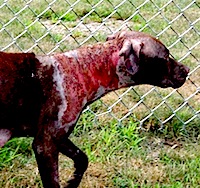

 Dog
bites cost American home insurers 6.4 percent more in 2009 than in
the previous year, with the average claim exceeding $24,000 for the
third straight year, an industry group said Wednesday. The injuries
cost $412 million in 2009, compared with $387.2 million a year earlier,
the fifth straight increase, the Insurance Information Institute said.
The number of claims increased 4.8 percent to 16,586.
Dog
bites cost American home insurers 6.4 percent more in 2009 than in
the previous year, with the average claim exceeding $24,000 for the
third straight year, an industry group said Wednesday. The injuries
cost $412 million in 2009, compared with $387.2 million a year earlier,
the fifth straight increase, the Insurance Information Institute said.
The number of claims increased 4.8 percent to 16,586. molecules
from bomb-making materials on people walking in crowds, rather than
detecting the substances just in luggage or cars.
molecules
from bomb-making materials on people walking in crowds, rather than
detecting the substances just in luggage or cars. Maryland
man.
Maryland
man. mysterious
visitor claiming to have it on good information that the remains buried
there were once Hollywood celebrities.
mysterious
visitor claiming to have it on good information that the remains buried
there were once Hollywood celebrities.

 dogs
are obese.
dogs
are obese. boned.
Not to mention Chihuahuas.
boned.
Not to mention Chihuahuas.

 the
mercy of state “management plans.” Those plans have been
crafted to satisfy hunters rather than protect the wolves or the ecosystem
in which they play an essential role. They all but guarantee the slow
extinction of the roughly 1,700 wolves left in the Rocky Mountain
West.
the
mercy of state “management plans.” Those plans have been
crafted to satisfy hunters rather than protect the wolves or the ecosystem
in which they play an essential role. They all but guarantee the slow
extinction of the roughly 1,700 wolves left in the Rocky Mountain
West.

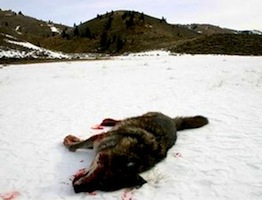



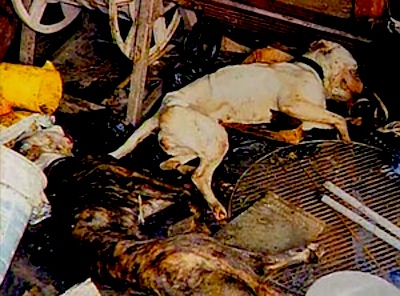


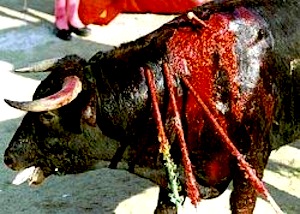



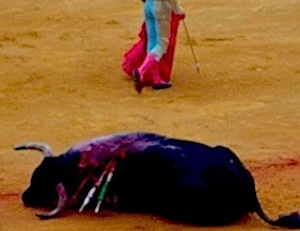
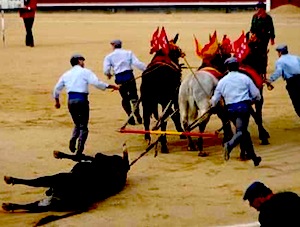
 Idaho
must be provided federal protection under the Endangered Species Act.
This is a welcome decision. The immediate effect will be to spare
the animals from hunts planned for this fall that are now illegal.
The larger hope is that Washington will devise a protection plan ensuring
the wolves’ survival not only in Montana and Idaho but across
the northern Rocky Mountains.
Idaho
must be provided federal protection under the Endangered Species Act.
This is a welcome decision. The immediate effect will be to spare
the animals from hunts planned for this fall that are now illegal.
The larger hope is that Washington will devise a protection plan ensuring
the wolves’ survival not only in Montana and Idaho but across
the northern Rocky Mountains. under
the federal Endangered Species Act as their cousins in Wyoming.
under
the federal Endangered Species Act as their cousins in Wyoming.
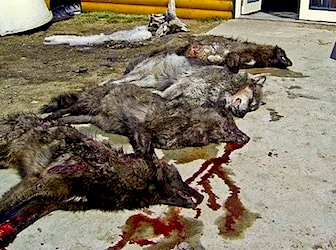
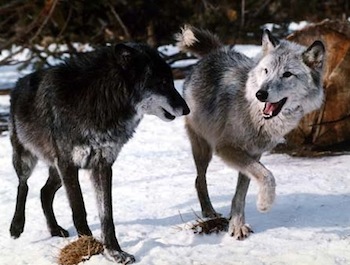 remove
gray wolves from the Endangered Species Act (ESA), paving the way
for these critical predators to rebuild their numbers to ecologically
sustainable levels. This ruling is the result of a lawsuit brought
against the FWS in 2009 by Defenders of Wildlife and other conservation
organizations.
remove
gray wolves from the Endangered Species Act (ESA), paving the way
for these critical predators to rebuild their numbers to ecologically
sustainable levels. This ruling is the result of a lawsuit brought
against the FWS in 2009 by Defenders of Wildlife and other conservation
organizations. decision
to remove gray wolves in the Northern Rockies from the endangered
species list. The court sided with Defenders of Wildlife and other
conservation organizations that sued to restore federal protections.
decision
to remove gray wolves in the Northern Rockies from the endangered
species list. The court sided with Defenders of Wildlife and other
conservation organizations that sued to restore federal protections.









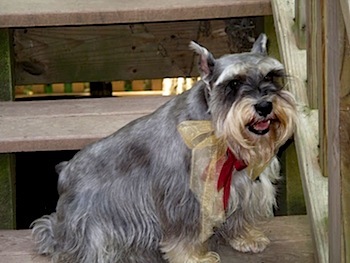
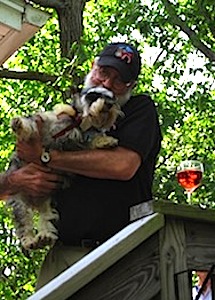



 The
dog ate my . . . election petition?
The
dog ate my . . . election petition? pet
owners in Indiana finds that parenthood does affect the way people think
about and treat their domesticated furballs.
pet
owners in Indiana finds that parenthood does affect the way people think
about and treat their domesticated furballs.
 aside
when a new baby comes along. Pet ownership can be enormously beneficial,
said Rebecca Johnson(right), a professor of nursing at the University
of Missouri and director of the Research Center for Human-Animal Interaction.
Studies have shown multiple benefits to interaction with companion animals,
from lowered blood pressure to increased survival after heart attack.
aside
when a new baby comes along. Pet ownership can be enormously beneficial,
said Rebecca Johnson(right), a professor of nursing at the University
of Missouri and director of the Research Center for Human-Animal Interaction.
Studies have shown multiple benefits to interaction with companion animals,
from lowered blood pressure to increased survival after heart attack.

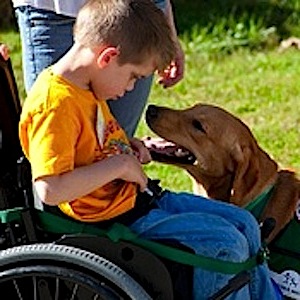 meet
their new best friend — a Canine Assistants dog.
meet
their new best friend — a Canine Assistants dog. organizations,
Canine Assistants, shows her unique teaching methods, giving viewers
an intimate look at the canine-recipient matching process.
organizations,
Canine Assistants, shows her unique teaching methods, giving viewers
an intimate look at the canine-recipient matching process.
 of
puppy mills, commercial breeders are using online sources to get their
dogs directly into homes across the country.
of
puppy mills, commercial breeders are using online sources to get their
dogs directly into homes across the country. premises
or meet his parents. Furthermore, those who sell animals online are
not held to regulations established by the
premises
or meet his parents. Furthermore, those who sell animals online are
not held to regulations established by the 

 During the Michael Vick (left*) investigation, the ASPCA’s
forensic veterinary team, led by Dr. Melinda Merck (right), helped produce
the evidence that led to guilty pleas. The ASPCA’s
Dr. Stephen Zawistowski, Executive Vice President, and Dr. Randy Lockwood,
ASPCA
Senior Vice President, Forensic Sciences and Anti-Cruelty Projects,
led a team of certified applied animal behaviorists in behavior evaluations
of nearly 50 rescued dogs; as a result, all but one were spared euthanasia.
This was an unprecedented outcome for seized fighting dogs at the time.
Drs. Merck and Zawistowski are quoted extensively in Gorant’s
new book.
During the Michael Vick (left*) investigation, the ASPCA’s
forensic veterinary team, led by Dr. Melinda Merck (right), helped produce
the evidence that led to guilty pleas. The ASPCA’s
Dr. Stephen Zawistowski, Executive Vice President, and Dr. Randy Lockwood,
ASPCA
Senior Vice President, Forensic Sciences and Anti-Cruelty Projects,
led a team of certified applied animal behaviorists in behavior evaluations
of nearly 50 rescued dogs; as a result, all but one were spared euthanasia.
This was an unprecedented outcome for seized fighting dogs at the time.
Drs. Merck and Zawistowski are quoted extensively in Gorant’s
new book.
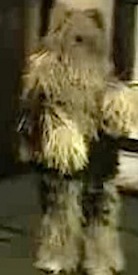

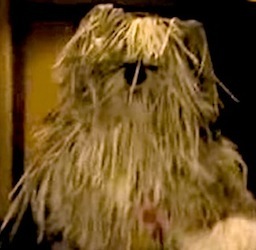 became
obsessed with the program as a teen, and started broadcasting a radio
show about the heroic hound from his basement. His classmates soon started
referring to him as Boomer.
became
obsessed with the program as a teen, and started broadcasting a radio
show about the heroic hound from his basement. His classmates soon started
referring to him as Boomer.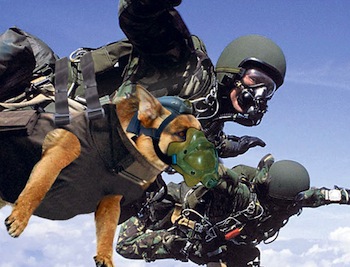 war
dogs with an official medal for their service.
war
dogs with an official medal for their service.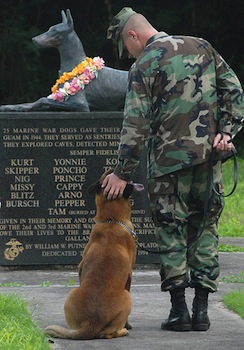 In light of their contributions, the U.S. War Dogs Association, which
was started by former Vietnam War dog handlers, asked the Pentagon to
allow dogs to be recognized with one of the official medals awarded
to troops for combat service.
In light of their contributions, the U.S. War Dogs Association, which
was started by former Vietnam War dog handlers, asked the Pentagon to
allow dogs to be recognized with one of the official medals awarded
to troops for combat service.

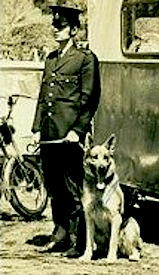 and
died, authorities said Thursday.
and
died, authorities said Thursday.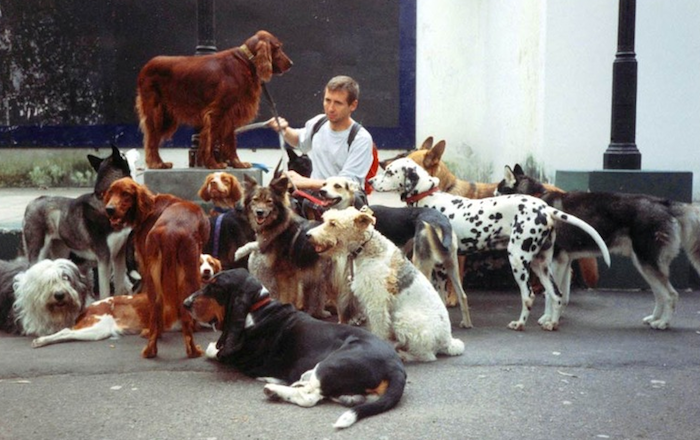

 California,
and Elaine Ostrander (right), a comparative geneticist with NHGRI,
analyzed genetic information from 915 domestic dogs representing 80
different breeds. The researchers compared the dogs' DNA, looking
for sequences that differed by a single base, known as single-nucleotide
polymorphisms. Once they found out where the DNA differed, they compared
those differences between dogs with, for example, short versus long
legs or perky versus droopy ears.
California,
and Elaine Ostrander (right), a comparative geneticist with NHGRI,
analyzed genetic information from 915 domestic dogs representing 80
different breeds. The researchers compared the dogs' DNA, looking
for sequences that differed by a single base, known as single-nucleotide
polymorphisms. Once they found out where the DNA differed, they compared
those differences between dogs with, for example, short versus long
legs or perky versus droopy ears.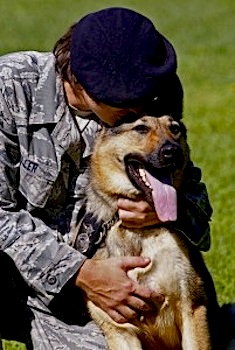 post-traumatic
stress disorder or PTSD. The intense conditions of war can leave a
devastating impression -- apparently even on dogs that serve our country.
post-traumatic
stress disorder or PTSD. The intense conditions of war can leave a
devastating impression -- apparently even on dogs that serve our country.
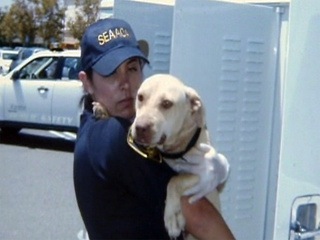 to
Mexico for dog fighting, police reported.
to
Mexico for dog fighting, police reported.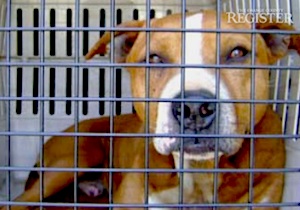 legitimate
animal delivery service, Kohanek said.
legitimate
animal delivery service, Kohanek said. also
broken out in communities across the country where mosques are proposed
for far less hallowed locations.
also
broken out in communities across the country where mosques are proposed
for far less hallowed locations.  mosque.
Diana Serafin (right), a grandmother who lost her job in tech support
this year, said she reached out to others she knew from attending
Tea Party events and anti-immigration rallies. She said they read
books by critics of Islam, including former Muslims like Walid Shoebat,
Wafa Sultan and Manoucher Bakh. She also attended a meeting of the
local chapter of ACT! for America, a Florida-based group that says
its purpose is to defend Western civilization against Islam.
mosque.
Diana Serafin (right), a grandmother who lost her job in tech support
this year, said she reached out to others she knew from attending
Tea Party events and anti-immigration rallies. She said they read
books by critics of Islam, including former Muslims like Walid Shoebat,
Wafa Sultan and Manoucher Bakh. She also attended a meeting of the
local chapter of ACT! for America, a Florida-based group that says
its purpose is to defend Western civilization against Islam.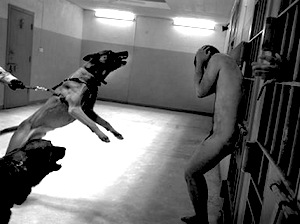 reported),
but Serafin's demonstrations are different from all the rest. She's
calling on people to bring their dogs and join in song because, she
said, "Muslims just hate dogs and songs. Bring your Bibles, flags,
signs, dogs and singing voices." Of course, Muslim antipathy
toward canines isn't their worst offense, she said.
reported),
but Serafin's demonstrations are different from all the rest. She's
calling on people to bring their dogs and join in song because, she
said, "Muslims just hate dogs and songs. Bring your Bibles, flags,
signs, dogs and singing voices." Of course, Muslim antipathy
toward canines isn't their worst offense, she said.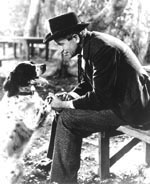

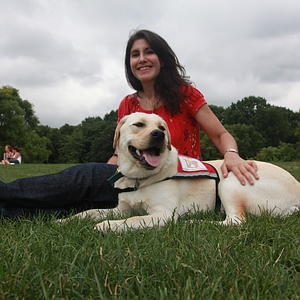 schedule
for a full-time pet. “I always joke that I need a husband so
I can get a dog,” she says. “Someone else to share the
responsibility.”
schedule
for a full-time pet. “I always joke that I need a husband so
I can get a dog,” she says. “Someone else to share the
responsibility.”
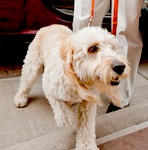 A
dog named Kiko earned the title "man's best friend the hard way."
A
dog named Kiko earned the title "man's best friend the hard way."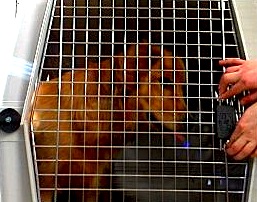 plane
from Tulsa, Okla., rattled the nerves of animal lovers. But there
is much that airlines and pet owners can do to ensure the well-being
of the 2 million dogs, cats, livestock and other creatures transported
by air every year, experts said.
plane
from Tulsa, Okla., rattled the nerves of animal lovers. But there
is much that airlines and pet owners can do to ensure the well-being
of the 2 million dogs, cats, livestock and other creatures transported
by air every year, experts said. airline
baggage handlers taking the puppies to a holding area for animals
observed that some of the dogs "looked lethargic,'' Fagan said.
"People were trying to cool them off.''
airline
baggage handlers taking the puppies to a holding area for animals
observed that some of the dogs "looked lethargic,'' Fagan said.
"People were trying to cool them off.'' the
Supreme Court earlier this year in refusing to create a new exception
to the free speech clause. With only one dissent, the court struck
down a law that banned depictions of animal cruelty. The House has
come back with a replacement bill that is an improvement over its
predecessor but still misses the constitutional point Justice Roberts
made.
the
Supreme Court earlier this year in refusing to create a new exception
to the free speech clause. With only one dissent, the court struck
down a law that banned depictions of animal cruelty. The House has
come back with a replacement bill that is an improvement over its
predecessor but still misses the constitutional point Justice Roberts
made.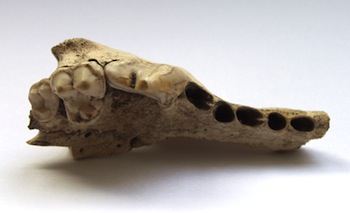
 in
a Swiss cave comes from the earliest known dog, according to scientists
who analyzed and radiocarbon-dated the fossil.
in
a Swiss cave comes from the earliest known dog, according to scientists
who analyzed and radiocarbon-dated the fossil.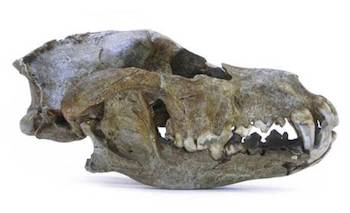 Uerpmann
argue in a paper published online July 19 in the International Journal
of Osteoarchaeology. That includes a 31,700-year-old specimen (left)
discovered more than a century ago in Belgium’s Goyet Cave and
reported in 2009 to be the oldest known dog.
Uerpmann
argue in a paper published online July 19 in the International Journal
of Osteoarchaeology. That includes a 31,700-year-old specimen (left)
discovered more than a century ago in Belgium’s Goyet Cave and
reported in 2009 to be the oldest known dog.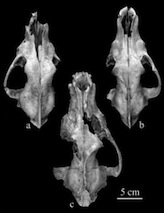 Kesslerloch
Cave and Goyet Cave, raising doubts about whether either site hosted
completely domesticated animals, remarks archaeologist Susan Crockford
of the University of Victoria in British Columbia. She regards the
Swiss jaw as an “incipient dog” in the early stages of
domestication from wolves.
Kesslerloch
Cave and Goyet Cave, raising doubts about whether either site hosted
completely domesticated animals, remarks archaeologist Susan Crockford
of the University of Victoria in British Columbia. She regards the
Swiss jaw as an “incipient dog” in the early stages of
domestication from wolves. This
puppy really had to go.
This
puppy really had to go.
 Anjalo
Abeywickrema (right), 51, entered the plea Monday to one count of permitting
unnecessary pain, injury or suffering to an animal.
Anjalo
Abeywickrema (right), 51, entered the plea Monday to one count of permitting
unnecessary pain, injury or suffering to an animal.


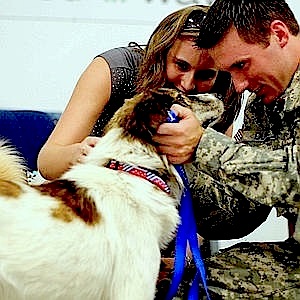 with
the wounded soldier they saved from a suicide bomber in Afghanistan.
with
the wounded soldier they saved from a suicide bomber in Afghanistan.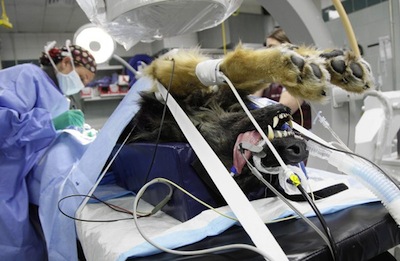 powerful
paws taped immobile.
powerful
paws taped immobile.
 product
lines. Iams and Eukanuba dog and cat foods are on the recall list due
to possible exposure to Salmonella. These foods were sold at veterinary
clinics and and specialty pet retailers throughout the US and Canada.
product
lines. Iams and Eukanuba dog and cat foods are on the recall list due
to possible exposure to Salmonella. These foods were sold at veterinary
clinics and and specialty pet retailers throughout the US and Canada.
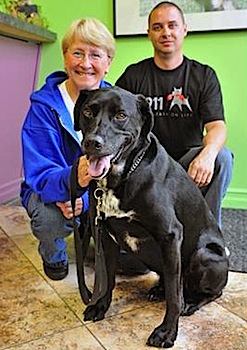 Society,
who found the puppy and his four siblings at the bottom of a well. Niki
survived, as did his sister, Glory; the other puppies perished.
Society,
who found the puppy and his four siblings at the bottom of a well. Niki
survived, as did his sister, Glory; the other puppies perished. Hauser
Lake, Idaho earlier this afternoon.
Hauser
Lake, Idaho earlier this afternoon.

 the
house with his tail tucked between his legs. When the first
crash of thunder hits, he bolts into the bathroom and curls
up tightly in the tub, where he remains, panting and trembling,
until the storm passes. Sound familiar? Does your dog behave
this way during storms? Not to worry, pet parents, the ASPCA
has some advice for helping your pooch overcome his fear.
the
house with his tail tucked between his legs. When the first
crash of thunder hits, he bolts into the bathroom and curls
up tightly in the tub, where he remains, panting and trembling,
until the storm passes. Sound familiar? Does your dog behave
this way during storms? Not to worry, pet parents, the ASPCA
has some advice for helping your pooch overcome his fear. •
Let your dog take refuge inside. Storms aren’t as loud
and scary with four walls around you! Bringing your dog into
the house also ensures that he won’t try to escape from
the yard.
•
Let your dog take refuge inside. Storms aren’t as loud
and scary with four walls around you! Bringing your dog into
the house also ensures that he won’t try to escape from
the yard. consider
speaking with a vet about anti-anxiety medication. Medication
can enhance the effectiveness of other efforts to help your
dog cope with his fear. A technique called desensitization
and counterconditioning can also help.
consider
speaking with a vet about anti-anxiety medication. Medication
can enhance the effectiveness of other efforts to help your
dog cope with his fear. A technique called desensitization
and counterconditioning can also help.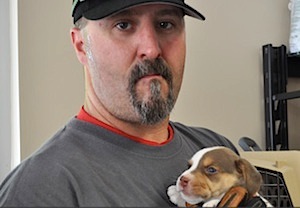 ASPCA
Field Investigations and Response Team arrived at the Pike
County Animal Shelter in Pikeville, KY, to provide emergency
transport and placement for more than 100 homeless animals.
Over a two-day period, the animals were safely transported
in the ASPCA's
custom-built animal transport trailer to various ASPCA
Shelter Response Partners around the country.
ASPCA
Field Investigations and Response Team arrived at the Pike
County Animal Shelter in Pikeville, KY, to provide emergency
transport and placement for more than 100 homeless animals.
Over a two-day period, the animals were safely transported
in the ASPCA's
custom-built animal transport trailer to various ASPCA
Shelter Response Partners around the country. continue
to provide supplies and support animals in Pike County as
long as we’re needed,” says Kyle Held, the ASPCA
Midwest Director of Field Investigations and Response.
continue
to provide supplies and support animals in Pike County as
long as we’re needed,” says Kyle Held, the ASPCA
Midwest Director of Field Investigations and Response.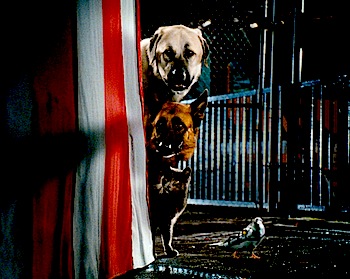 a
child near me turned to his mother and asked, “Why is Kitty Galore
called Kitty Galore?”
a
child near me turned to his mother and asked, “Why is Kitty Galore
called Kitty Galore?”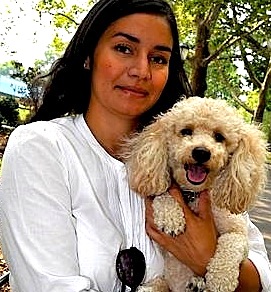
 clever,
strategical intent of your rapt viewer. That's because new research
has just demonstrated dogs quietly sneak food when we're not looking,
waiting for the perfect opportunity to bite, steal and nosh.
clever,
strategical intent of your rapt viewer. That's because new research
has just demonstrated dogs quietly sneak food when we're not looking,
waiting for the perfect opportunity to bite, steal and nosh.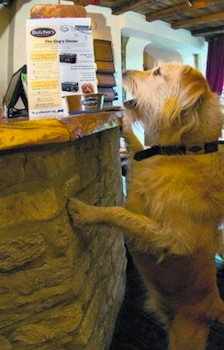 offering
a range of pub meals for dogs.
offering
a range of pub meals for dogs. increase
in dog obesity.
increase
in dog obesity. nations
around the world to bring the disease under control.
nations
around the world to bring the disease under control. breeds
have been selected by humans to be more compatible with small spaces,
and they are not always the smallest dogs. Individual members of larger
breeds, like some hounds and mastiffs and even Great Danes, are known
to be happy living in a small space if they get a long outdoor run every
day, while a small, energetic terrier may tear up even a large apartment
in imaginary pursuit of the prey it was bred to hunt.
breeds
have been selected by humans to be more compatible with small spaces,
and they are not always the smallest dogs. Individual members of larger
breeds, like some hounds and mastiffs and even Great Danes, are known
to be happy living in a small space if they get a long outdoor run every
day, while a small, energetic terrier may tear up even a large apartment
in imaginary pursuit of the prey it was bred to hunt. a
new rule that judges the animal based on behavior instead of breed.
The move will allow some dogs to be adopted instead of euthanized.
a
new rule that judges the animal based on behavior instead of breed.
The move will allow some dogs to be adopted instead of euthanized. pet
stores in El Paso, Texas, from selling dogs and cats. A public hearing
on the matter has been set for Tuesday, Aug. 10, 2010.
pet
stores in El Paso, Texas, from selling dogs and cats. A public hearing
on the matter has been set for Tuesday, Aug. 10, 2010.
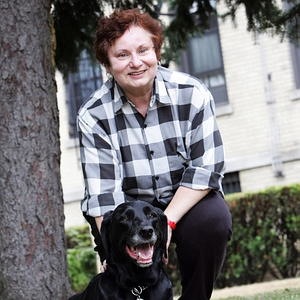 the
city. According to the New York City Department of Health and Mental
Hygiene, which publishes a yearly list of the most frequently registered
dog names, the most common mutt monikers to date are: Max, Lucky, Rocky,
Princess, Buddy, Coco, Bella, Charlie, Lola and Lucy.
the
city. According to the New York City Department of Health and Mental
Hygiene, which publishes a yearly list of the most frequently registered
dog names, the most common mutt monikers to date are: Max, Lucky, Rocky,
Princess, Buddy, Coco, Bella, Charlie, Lola and Lucy.
 FRIDA
Kahlo
FRIDA
Kahlo  Auguste
RODIN
Auguste
RODIN

 One
of the basic requirements for running an animal shelter: Know what a
dog looks like.
One
of the basic requirements for running an animal shelter: Know what a
dog looks like. If
you're trying to promote your pet store, having a "Bring Your Rottweiler"
day is probably not the best way to do it.
If
you're trying to promote your pet store, having a "Bring Your Rottweiler"
day is probably not the best way to do it.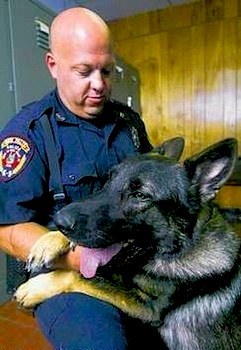 only
something could be done about the shedding.
only
something could be done about the shedding. fire
ripped through and destroyed much of a two-story duplex early Friday
morning in a rural area of the town.
fire
ripped through and destroyed much of a two-story duplex early Friday
morning in a rural area of the town.
 On
Saturday night, Animal Planet will broadcast a special, “Dogs
vs. Cats,” (right) that will no doubt draw millions of viewers
because it seems likely to have dogs and cats in it. On Friday Warner
Brothers releases a movie, “Cats & Dogs: The Revenge of
Kitty Galore,” that will no doubt draw millions of moviegoers
for the same reason. (After all, the first movie in this sure-to-be
series, “Cats and Dogs,” made more than $200 million globally
nine years ago, and the sequel is in 3-D.)
On
Saturday night, Animal Planet will broadcast a special, “Dogs
vs. Cats,” (right) that will no doubt draw millions of viewers
because it seems likely to have dogs and cats in it. On Friday Warner
Brothers releases a movie, “Cats & Dogs: The Revenge of
Kitty Galore,” that will no doubt draw millions of moviegoers
for the same reason. (After all, the first movie in this sure-to-be
series, “Cats and Dogs,” made more than $200 million globally
nine years ago, and the sequel is in 3-D.) for
a week the opiate-of-the-people effect is taking hold. Fellow humans
are going to start succumbing as well. I expect I’ll soon see
a cocker spaniel sitting where my banker or broker used to be. “Hi,”
he’ll say. “Mr. Reynolds has been placed on indefinite
leave so he can spend his days watching a video of a large cat smacking
a small cat that’s wearing a top hat. So I’ll be handling
your accounts from now on. Also, I have to go to the bathroom. Would
you mind walking me around the block and cleaning up after me?”
Sure, sure; just as long as we’re back in time for me to make
the matinee of “Cats & Dogs.”
for
a week the opiate-of-the-people effect is taking hold. Fellow humans
are going to start succumbing as well. I expect I’ll soon see
a cocker spaniel sitting where my banker or broker used to be. “Hi,”
he’ll say. “Mr. Reynolds has been placed on indefinite
leave so he can spend his days watching a video of a large cat smacking
a small cat that’s wearing a top hat. So I’ll be handling
your accounts from now on. Also, I have to go to the bathroom. Would
you mind walking me around the block and cleaning up after me?”
Sure, sure; just as long as we’re back in time for me to make
the matinee of “Cats & Dogs.” the
sheepdog world."
the
sheepdog world."
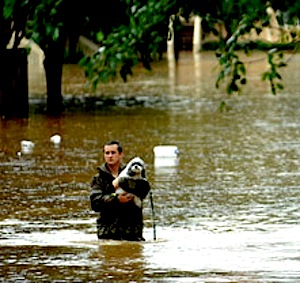
 that
caused severe flooding and mudslides. The devastating rainfall is
being blamed for multiple deaths, and a State of Emergency has been
declared for the affected areas. As emergency evacuations and rescues
continue, many families—including hundreds of companion animals—have
been displaced from their homes.
that
caused severe flooding and mudslides. The devastating rainfall is
being blamed for multiple deaths, and a State of Emergency has been
declared for the affected areas. As emergency evacuations and rescues
continue, many families—including hundreds of companion animals—have
been displaced from their homes.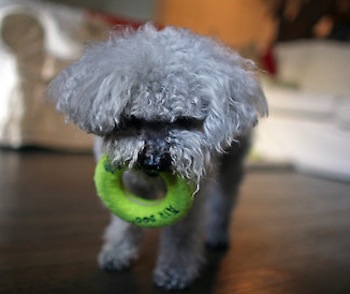 he
takes his seven-times daily constitutional. He may very well be the
oldest dog on the planet. But he may not live long enough to wear
his crown.
he
takes his seven-times daily constitutional. He may very well be the
oldest dog on the planet. But he may not live long enough to wear
his crown.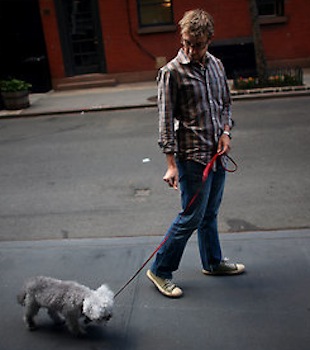 Chichi is well traveled. Before arriving in New York in 2008, he accompanied
Mr. Pavich on location around the country. In February this year,
after rebounding from a mysterious illness, Chichi traveled with Mr.
Pavich and Ms. Puhalovic to their native Croatia, where he posed for
photos in front of monuments like the church of St. Donat in Zadar.
Chichi is well traveled. Before arriving in New York in 2008, he accompanied
Mr. Pavich on location around the country. In February this year,
after rebounding from a mysterious illness, Chichi traveled with Mr.
Pavich and Ms. Puhalovic to their native Croatia, where he posed for
photos in front of monuments like the church of St. Donat in Zadar.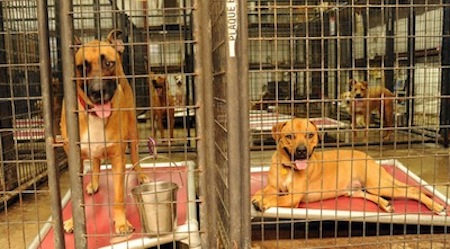 into
the overcrowded shelter at the St. Bernard Parish Animal Services
where Sasha, Melodie and Benny pace their cages awaiting adoption.
into
the overcrowded shelter at the St. Bernard Parish Animal Services
where Sasha, Melodie and Benny pace their cages awaiting adoption.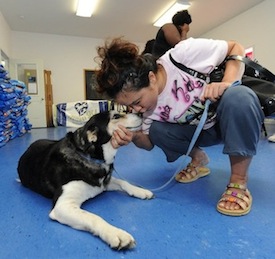 from
Katrina, instituted a parish pet food giveaway every two weeks. “With
all the stress and frustration and worrying about getting your job
back, that pet keeps you sane and can help you get through that,”
Mr. Nungesser said in an interview. Nonetheless, he said some owners
had confided in him that they have had “to choose between their
kids and their pets.”
from
Katrina, instituted a parish pet food giveaway every two weeks. “With
all the stress and frustration and worrying about getting your job
back, that pet keeps you sane and can help you get through that,”
Mr. Nungesser said in an interview. Nonetheless, he said some owners
had confided in him that they have had “to choose between their
kids and their pets.”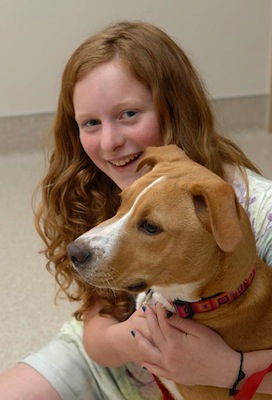 anywhere
in the world — she surprised her grandmother her destination.
"I expected Paris or London," explains Dena’s grandmother
Gloria Kaufman, who offered the trip to Dena as a present. Dena chose
to come to the Best Friends Animal Sanctuary. The destination may
not seem quite as big a surprise, however, once you learn Dena had
nine thousand good reasons for coming.Dena and friends
anywhere
in the world — she surprised her grandmother her destination.
"I expected Paris or London," explains Dena’s grandmother
Gloria Kaufman, who offered the trip to Dena as a present. Dena chose
to come to the Best Friends Animal Sanctuary. The destination may
not seem quite as big a surprise, however, once you learn Dena had
nine thousand good reasons for coming.Dena and friends
 dog,
Boo; and two cats, Powder and Peeve. When Boo began eating out of
the cats’ bowls on the floor, Mrs. Linauer, 37, tried putting
them on the kitchen counter. “I know some people don’t
have a problem with that,” she said. “But I just envisioned
their little paws digging through the litter, then getting up on my
kitchen counter, and that was disgusting.”
dog,
Boo; and two cats, Powder and Peeve. When Boo began eating out of
the cats’ bowls on the floor, Mrs. Linauer, 37, tried putting
them on the kitchen counter. “I know some people don’t
have a problem with that,” she said. “But I just envisioned
their little paws digging through the litter, then getting up on my
kitchen counter, and that was disgusting.” overpowered,”
said Kasie Maxwell, 39, who shares her 660-square-foot Bernal Heights
home in San Francisco with her partner, Ron Love, 40, and a dog, a
cat, three doves, three turtles and one goldfish.
overpowered,”
said Kasie Maxwell, 39, who shares her 660-square-foot Bernal Heights
home in San Francisco with her partner, Ron Love, 40, and a dog, a
cat, three doves, three turtles and one goldfish. always
been a big deal finding bedding that’s got enough structure
for a Great Dane’s weight and joints,” Ms. Maxwell said.
“A lot of people will buy twin beds or a baby mattress.”
always
been a big deal finding bedding that’s got enough structure
for a Great Dane’s weight and joints,” Ms. Maxwell said.
“A lot of people will buy twin beds or a baby mattress.” Keiji Hirose, an architect in Kobe, Japan, has a firm called Fauna+Design
specializing in residential design that takes into account the needs
of animals. Recently, he completed a renovation that included accommodations
for a basset hound.
Keiji Hirose, an architect in Kobe, Japan, has a firm called Fauna+Design
specializing in residential design that takes into account the needs
of animals. Recently, he completed a renovation that included accommodations
for a basset hound. When Sue Golmanavich, 63, a teaching assistant, and her husband, Joe,
64, a semi-retired information technology specialist, began a bathroom
renovation at their home in Osterville, Mass., they asked Ms. Britton
of Artisan Kitchens to include a litter box for their cat, Aslan,
in the design. The three came up with a plan to conceal the box in
a cubbyhole in the wall, and the rest of the bathroom was planned
around it.
When Sue Golmanavich, 63, a teaching assistant, and her husband, Joe,
64, a semi-retired information technology specialist, began a bathroom
renovation at their home in Osterville, Mass., they asked Ms. Britton
of Artisan Kitchens to include a litter box for their cat, Aslan,
in the design. The three came up with a plan to conceal the box in
a cubbyhole in the wall, and the rest of the bathroom was planned
around it. Brooklyn
with his wife, Maria Cristina Rueda, also 30. “We felt a little
guilty having our cats confined to a relatively small apartment space.”
Brooklyn
with his wife, Maria Cristina Rueda, also 30. “We felt a little
guilty having our cats confined to a relatively small apartment space.”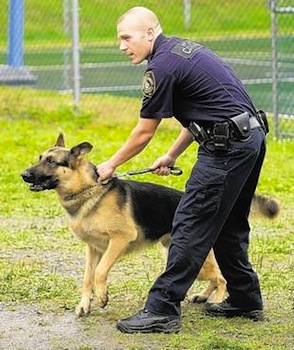 This
month he brought down a 270-pound man, who police say was high on
drugs and giving his partner trouble, with a nip to the ankle. A few
days later, he jumped out the window of a patrol car and laid his
chompers into a man who stuffed 28 grams of marijuana in his cheeks,
refused to spit the bag out and was fighting with his partner, patrol
Officer John Calvello.
This
month he brought down a 270-pound man, who police say was high on
drugs and giving his partner trouble, with a nip to the ankle. A few
days later, he jumped out the window of a patrol car and laid his
chompers into a man who stuffed 28 grams of marijuana in his cheeks,
refused to spit the bag out and was fighting with his partner, patrol
Officer John Calvello.
 Centre.
Centre.
 law,
anyone in the state who cuts or removes an animal’s vocal cords
for nonmedical reasons may be fined or sentenced to prison for up
to five years. The measure was signed into law by Gov. Deval Patrick
in April. Devocalization, known as debarking when performed on dogs,
is largely done by commercial breeders for their own convenience,
according to the Animal Law Coalition, an advocacy group.
law,
anyone in the state who cuts or removes an animal’s vocal cords
for nonmedical reasons may be fined or sentenced to prison for up
to five years. The measure was signed into law by Gov. Deval Patrick
in April. Devocalization, known as debarking when performed on dogs,
is largely done by commercial breeders for their own convenience,
according to the Animal Law Coalition, an advocacy group.
 Frank
Viscido, a grandfather from Clearwater, Fla., had told a volunteer
at a local food bank he wanted to eat healthy -- so on his next visit,
he was given a can of "Super Holistic Health Food."
Frank
Viscido, a grandfather from Clearwater, Fla., had told a volunteer
at a local food bank he wanted to eat healthy -- so on his next visit,
he was given a can of "Super Holistic Health Food."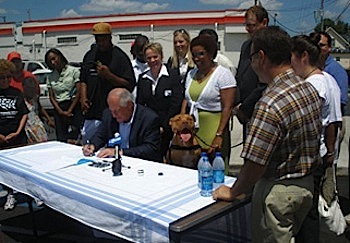 Quinn
signed a bill (left) that enhances the felony penalty provisions for
staging a dog fight within 1,000 feet of a school, public park, playground,
daycare center or group home. Even the day’s soaring temperatures
couldn’t dampen the good mood of all that attended this monumental
event.
Quinn
signed a bill (left) that enhances the felony penalty provisions for
staging a dog fight within 1,000 feet of a school, public park, playground,
daycare center or group home. Even the day’s soaring temperatures
couldn’t dampen the good mood of all that attended this monumental
event.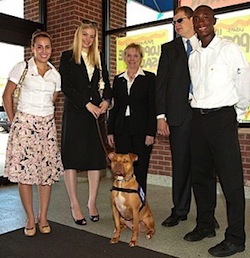
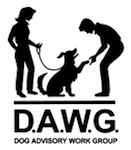


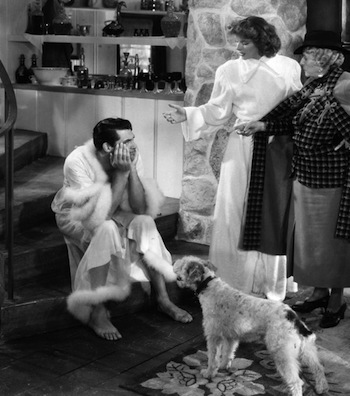 their
dog, a recognition, experts say, that pets stand apart from other
property.
their
dog, a recognition, experts say, that pets stand apart from other
property.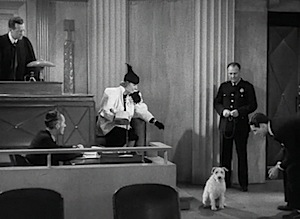 However,
despite an old movie portrayal, pets don't yet get to choose their
post-divorce home.
However,
despite an old movie portrayal, pets don't yet get to choose their
post-divorce home.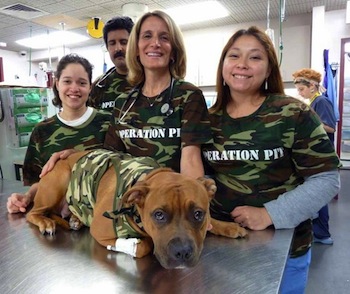 in
New York City.
in
New York City. “Anyone
that walks into an animal shelter in the U.S., particularly in the
Northeast, will notice that dogs tend to be overwhelming Pit and Pit-mixes,”
said Louise Murray, DVM (left),
Director of Medicine of the ASPCA
Bergh Memorial Hospital in Manhattan, where “Operation Pit”
is being headquartered.
“Anyone
that walks into an animal shelter in the U.S., particularly in the
Northeast, will notice that dogs tend to be overwhelming Pit and Pit-mixes,”
said Louise Murray, DVM (left),
Director of Medicine of the ASPCA
Bergh Memorial Hospital in Manhattan, where “Operation Pit”
is being headquartered.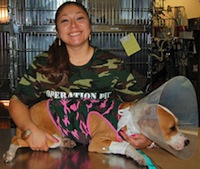
 in
the past five years.
in
the past five years. sources
told The Post.
sources
told The Post.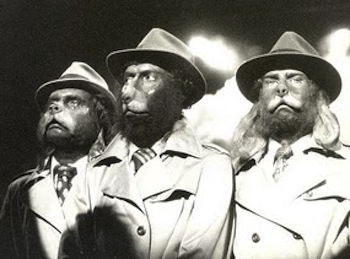
 cheaper
and more effective in screening airline passengers than high-tech
body imagers or metal detectors. DHS has not adopted that
view, but Secretary Janet Napolitano (left, top) did tell
lawmakers earlier this year that she favors a greater reliance
on man's best friend for all sorts of tasks.
cheaper
and more effective in screening airline passengers than high-tech
body imagers or metal detectors. DHS has not adopted that
view, but Secretary Janet Napolitano (left, top) did tell
lawmakers earlier this year that she favors a greater reliance
on man's best friend for all sorts of tasks. Minn.
(left).
Minn.
(left).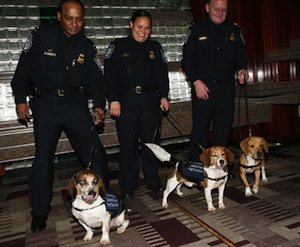
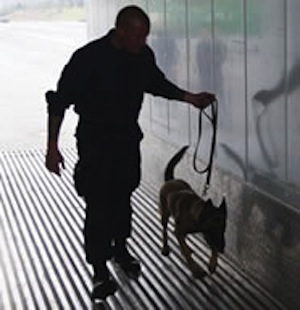
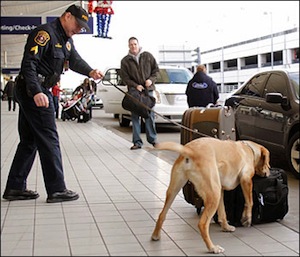


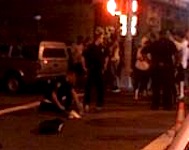
 dog
-- body-slamming it onto the pavement in front of her home, sources
said yesterday.
dog
-- body-slamming it onto the pavement in front of her home, sources
said yesterday. immediate
impact on his life. “It’s huge, just awesome,” he
said.
immediate
impact on his life. “It’s huge, just awesome,” he
said.

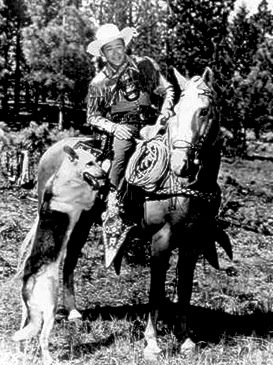
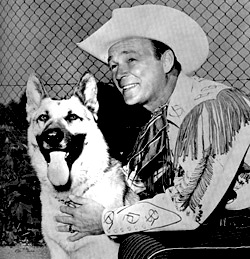 Bullet
will be TV stars once more. Rural cable network RFD-TV bought Bullet
for $35,000 on Thursday and Trigger for $266,000 a day earlier at
an auction in New York City.
Bullet
will be TV stars once more. Rural cable network RFD-TV bought Bullet
for $35,000 on Thursday and Trigger for $266,000 a day earlier at
an auction in New York City. CONTRIBUTIONS PLEASE!
CONTRIBUTIONS PLEASE! (KAWA)
are working together to bring an end to the dog meat industry in South
Korea. But we can’t do it without your help.
(KAWA)
are working together to bring an end to the dog meat industry in South
Korea. But we can’t do it without your help.

 pleaded
guilty yesterday to misdemeanor animal-torturing charges in a no-jail
deal that will ultimately leave him without a record.
pleaded
guilty yesterday to misdemeanor animal-torturing charges in a no-jail
deal that will ultimately leave him without a record.
 model
and porn actress -- whose dismembered body was fed to dogs.
model
and porn actress -- whose dismembered body was fed to dogs. Bruno
Souza (left), 25, and six other people, including his wife Dayane,
are being held in the grisly case.
Bruno
Souza (left), 25, and six other people, including his wife Dayane,
are being held in the grisly case.



 near
Blue Eye, charged with several counts of felony dog fighting.
Wednesday just happened to be the one year anniversary of the largest
dog fighting raid in U.S. History. It included the arrests of
people near Eldon, Missouri, with 350 pit bulls being seized in five
states. Now, a year later, fifteen more pit bulls have been
rescued.
near
Blue Eye, charged with several counts of felony dog fighting.
Wednesday just happened to be the one year anniversary of the largest
dog fighting raid in U.S. History. It included the arrests of
people near Eldon, Missouri, with 350 pit bulls being seized in five
states. Now, a year later, fifteen more pit bulls have been
rescued. But
Stingley wasn't the only one involved. Court documents say 41
year old Keith Owens (right) helped break up the fight, by prying
of the of the pit bull's jaws open to remove the other pit bull's
head. "We see a couple animals with some very fresh bloody
wounds," says Debbie Hill, Vice President of Operations for the
Humane Society of Missouri.
But
Stingley wasn't the only one involved. Court documents say 41
year old Keith Owens (right) helped break up the fight, by prying
of the of the pit bull's jaws open to remove the other pit bull's
head. "We see a couple animals with some very fresh bloody
wounds," says Debbie Hill, Vice President of Operations for the
Humane Society of Missouri.

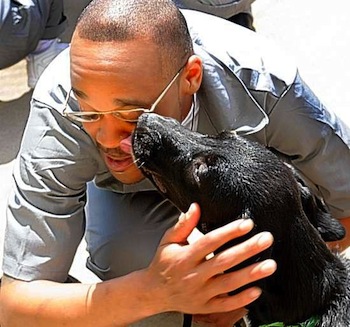 Complex.
In truth, the convicted murderer signed up for the honor.
Complex.
In truth, the convicted murderer signed up for the honor. dog.
dog.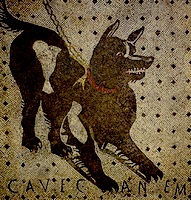 as
visitors to the city buried by Mount Vesuvius in A.D. 79 could attest.
Droopy dogs wandering forlornly along ancient streets were a common
sight here.
as
visitors to the city buried by Mount Vesuvius in A.D. 79 could attest.
Droopy dogs wandering forlornly along ancient streets were a common
sight here. 
 for
Karma, boat trips and helicopter rides are all just a part of her
job as a bear dog in the remote Canadian wilderness.
for
Karma, boat trips and helicopter rides are all just a part of her
job as a bear dog in the remote Canadian wilderness. the
dog is saying her 4-year-old pit bull, Zoey, was needlessly euthanized.
the
dog is saying her 4-year-old pit bull, Zoey, was needlessly euthanized.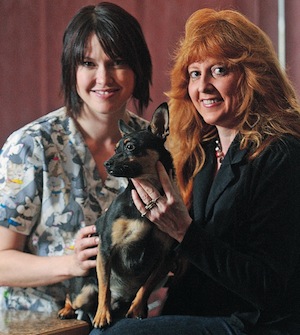 needs
to blossom into the individual that he was always meant to be; and
then giving that animal away. Now imagine doing that not just once,
but over and over again. Difficult? You bet.
needs
to blossom into the individual that he was always meant to be; and
then giving that animal away. Now imagine doing that not just once,
but over and over again. Difficult? You bet.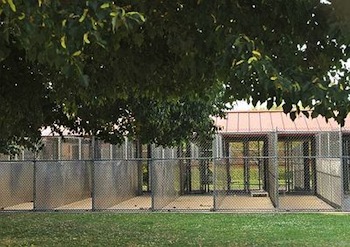 investigation
by the city's inspector general revealed that four dogs were mistakenly
euthanized -- and some workers tried to cover it up.
investigation
by the city's inspector general revealed that four dogs were mistakenly
euthanized -- and some workers tried to cover it up.
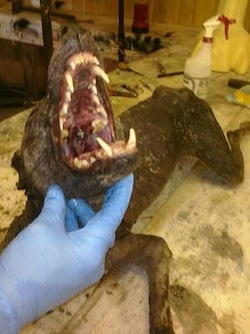 hybrid
with mange.
hybrid
with mange. he
was rescued. Nancy Soares said the chocolate Labrador was brought
to her Macungie Animal Hospital last month after he had been in the
car for about an hour.
he
was rescued. Nancy Soares said the chocolate Labrador was brought
to her Macungie Animal Hospital last month after he had been in the
car for about an hour. and
creatinine (CREA).
and
creatinine (CREA). and
provide stress-free care at home.
and
provide stress-free care at home.
 DOGGIE LOVE
DOGGIE LOVE  E-mail
E-mail
 She's
taken meddling motherhood to a whole new level.
She's
taken meddling motherhood to a whole new level. convince
the President to declare April 30th National "Adopt A Shelter
Pet" Day. Here's how you can help America's homeless pets.
convince
the President to declare April 30th National "Adopt A Shelter
Pet" Day. Here's how you can help America's homeless pets. Janice Brown (right) , 38, the founder of Tails Magazine, thought
of the proclamation idea to help raise awareness of the estimated
six to eight million dogs and cats per year who end up in shelters,
most never finding a real home. "I don't think when I thought
of the idea I thought that 'Wow, we could get a proclamation,'"
says Brown. "Now I really believe it's going to happen."
The campaign hopes to inspire 100,000 animal lovers to send the email
by September 30. And you can send a letter once daily.
Janice Brown (right) , 38, the founder of Tails Magazine, thought
of the proclamation idea to help raise awareness of the estimated
six to eight million dogs and cats per year who end up in shelters,
most never finding a real home. "I don't think when I thought
of the idea I thought that 'Wow, we could get a proclamation,'"
says Brown. "Now I really believe it's going to happen."
The campaign hopes to inspire 100,000 animal lovers to send the email
by September 30. And you can send a letter once daily.
 filled
his dish. Instead, the almost 2-year-old Cavalier King Charles Spaniel
enjoys two daily home-cooked meals of top sirloin with rice, kidney
beans and local vegetables — all served in a gold-rimmed china
bowl.
filled
his dish. Instead, the almost 2-year-old Cavalier King Charles Spaniel
enjoys two daily home-cooked meals of top sirloin with rice, kidney
beans and local vegetables — all served in a gold-rimmed china
bowl.

 to
outlaw puppy and kitten mills.
to
outlaw puppy and kitten mills.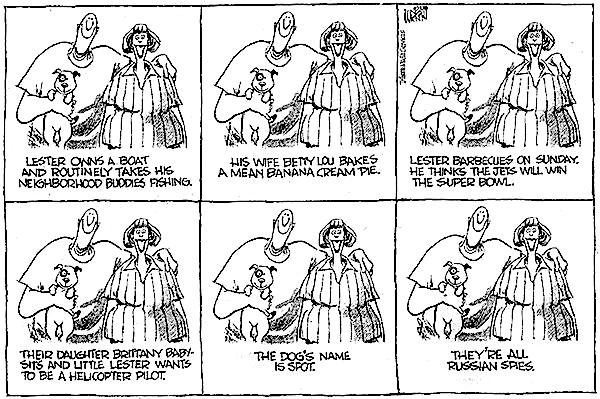
 Alabama prison officials had an inmate play the role of an
escapee during a dog-training exercise.
Alabama prison officials had an inmate play the role of an
escapee during a dog-training exercise.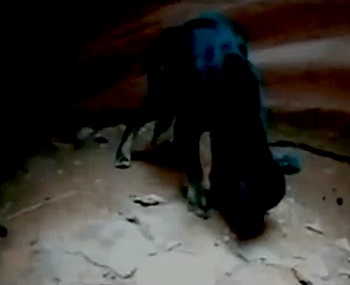 o-lantern
grins carved into the landscape. What draws adventurers and lovers
of the outdoors to these natural wonders is what lies beneath the
surface, sandstone waves, arches and curls which are the work of centuries
of wind and rushing water.
o-lantern
grins carved into the landscape. What draws adventurers and lovers
of the outdoors to these natural wonders is what lies beneath the
surface, sandstone waves, arches and curls which are the work of centuries
of wind and rushing water.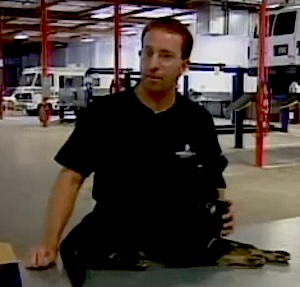 nearby
town to report the incident and rally a rescue team. The Subterranean
Samaritan quickly found out that "To Protect, and Serve"
doesn't extend to dogs left to die in the bowels of a canyon.
nearby
town to report the incident and rally a rescue team. The Subterranean
Samaritan quickly found out that "To Protect, and Serve"
doesn't extend to dogs left to die in the bowels of a canyon.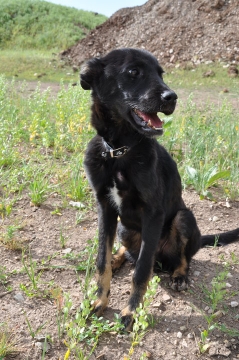 While Zak and his wife, Michelle, have fallen under the spell of their
miracle pup, theirs is already a pet-rich home. Despite all that they
have gone through with "Puppy," they gave him that name
so that they would ultimately never become too attached to a dog they
know they cannot keep.
While Zak and his wife, Michelle, have fallen under the spell of their
miracle pup, theirs is already a pet-rich home. Despite all that they
have gone through with "Puppy," they gave him that name
so that they would ultimately never become too attached to a dog they
know they cannot keep. 
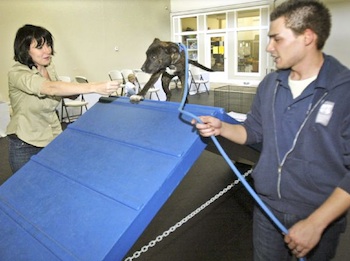
 photo
of his dog from his wallet.
photo
of his dog from his wallet. Forever
Home campaign, and, so far, is setting up four distribution sites,
in St. Bernard, Plaquemines, Orleans and Jefferson parishes.
Forever
Home campaign, and, so far, is setting up four distribution sites,
in St. Bernard, Plaquemines, Orleans and Jefferson parishes.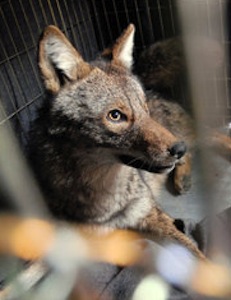 At
least six coyotes have found their way into New York City this year,
including one that crossed the Hudson via the Holland Tunnel. The
animals move easily into residential areas along travel corridors
like greenways, power lines and train tracks, according to Paul D.
Curtis, a wildlife specialist at Cornell University who studies human-wildlife
interactions and ways to minimize their negative consequences.
At
least six coyotes have found their way into New York City this year,
including one that crossed the Hudson via the Holland Tunnel. The
animals move easily into residential areas along travel corridors
like greenways, power lines and train tracks, according to Paul D.
Curtis, a wildlife specialist at Cornell University who studies human-wildlife
interactions and ways to minimize their negative consequences. White-tailed
deer wander fearlessly into suburban yards and fields, munching on
crops and ornamental plantings, spreading dreaded ticks that cause
Lyme disease. A hungry deer consumes six to eight pounds of vegetation
a day, often with little respect for lists of deer-resistant plants.
White-tailed
deer wander fearlessly into suburban yards and fields, munching on
crops and ornamental plantings, spreading dreaded ticks that cause
Lyme disease. A hungry deer consumes six to eight pounds of vegetation
a day, often with little respect for lists of deer-resistant plants. You need not have seen black bears roaming around Woodstock, N.Y.,
in April to know that they had ended their hibernation. Overturned
garbage cans, with their nonedible contents strewn over lawns and
roadsides, were a dead giveaway. The animals are well established
on the west side of the Hudson, where they have caused an occasional
fatality. Get between a mother and her cub and you may become history.
You need not have seen black bears roaming around Woodstock, N.Y.,
in April to know that they had ended their hibernation. Overturned
garbage cans, with their nonedible contents strewn over lawns and
roadsides, were a dead giveaway. The animals are well established
on the west side of the Hudson, where they have caused an occasional
fatality. Get between a mother and her cub and you may become history. live
near a city park, like Prospect Park in Brooklyn, and you find your
trash can ravaged, chances are a raccoon was responsible. Garbage
should be placed in metal cans with tight-fitting lids and enclosed
in a bin or attached to a solid object.
live
near a city park, like Prospect Park in Brooklyn, and you find your
trash can ravaged, chances are a raccoon was responsible. Garbage
should be placed in metal cans with tight-fitting lids and enclosed
in a bin or attached to a solid object.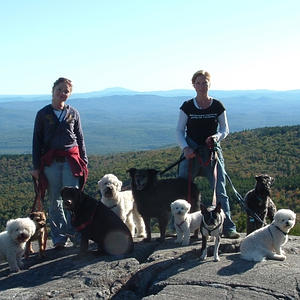 followed
by two days of hiking, a run on the beach, a scoop of sorbet and a
snooze on the porch? How about nosing around small towns with your
friends and a bath and blow-dry before returning to the city? Thanks
to a pair of Upper West Siders, this is exactly what your dog could
be doing next weekend. Yes, your dog.
followed
by two days of hiking, a run on the beach, a scoop of sorbet and a
snooze on the porch? How about nosing around small towns with your
friends and a bath and blow-dry before returning to the city? Thanks
to a pair of Upper West Siders, this is exactly what your dog could
be doing next weekend. Yes, your dog.
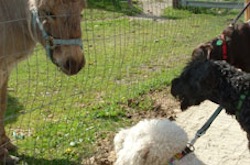 In other words: catching waves in Portsmouth, taking in nature trails
near Manchester, and being licked by a cow at Beech Hill Farm in Hopkinton.
In other words: catching waves in Portsmouth, taking in nature trails
near Manchester, and being licked by a cow at Beech Hill Farm in Hopkinton.
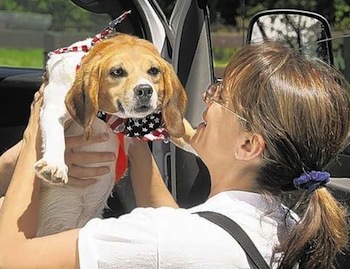 time
Friday at the Pets Alive no-kill animal shelter.
time
Friday at the Pets Alive no-kill animal shelter.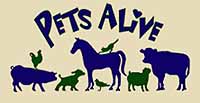
 at
St. Ann’s School in Brooklyn Heights. He started a dog-walking
and cat-sitting service last year in the Carroll Gardens neighborhood
of Brooklyn, where he lives with his parents, his three siblings and
his cat, Jackie Robinson. Sean, who is 11, has earned $750 so far,
and is considering making pet-sitting a career. He is accepting new
clients — he put his e-mail address on the fliers he taped to
utility poles — but he’s tied up this week and next. He’s
at sleepaway camp.
at
St. Ann’s School in Brooklyn Heights. He started a dog-walking
and cat-sitting service last year in the Carroll Gardens neighborhood
of Brooklyn, where he lives with his parents, his three siblings and
his cat, Jackie Robinson. Sean, who is 11, has earned $750 so far,
and is considering making pet-sitting a career. He is accepting new
clients — he put his e-mail address on the fliers he taped to
utility poles — but he’s tied up this week and next. He’s
at sleepaway camp.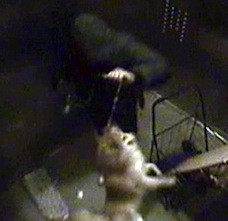 No
pets allowed!
No
pets allowed!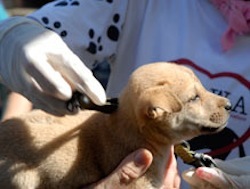
 roaming
dogs in Bali’s Gianyar district to prevent further outbreaks
of rabies and show local authorities that culling is not the answer.
roaming
dogs in Bali’s Gianyar district to prevent further outbreaks
of rabies and show local authorities that culling is not the answer.